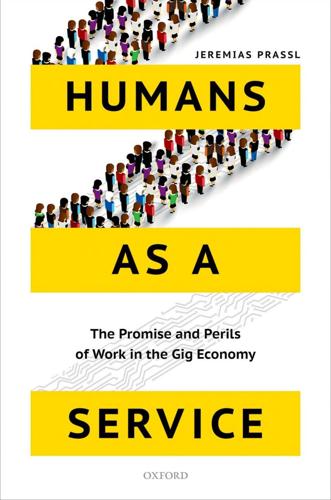
Humans as a Service: The Promise and Perils of Work in the Gig Economy
by
Jeremias Prassl
Published 7 May 2018
Chapter 6 returns to questions of consumer protection and tax enforcement to show how characterizing gig-economy ‘micro- entrepreneurs’ as workers and platforms as their employers closes down avenues for exploiting regulatory arbitrage, corrects negative externalities, and avoids asset misallocation. At a fundamental level, the gig economy’s problems—for workers, con- sumers, taxpayers, and markets—are all driven by a single issue: by presenting themselves as mere intermediaries rather than powerful service providers, platforms can shift nearly all of their business risk and cost onto others. Regulatory arbitrage, externalities, and asset misallocation all skew the play- ing field in favour of platforms and impose cost on everyone else.
…
The key to understanding the business model, Tomassetti points out, is a different one: platforms are but the latest example of ‘postindustrial corporations’.33 They seek ‘to maxi- mize profit, but not necessarily through productive enterprise. Rather, [they] may create shareholder value by other means, like asset manipulation, specu- lative activity, and, most pertinent here, regulatory arbitrage.’34 What does that mean? Victor Fleischer’s seminal work defines regulatory arbitrage as ‘the manipulation of the structure of a deal to take advantage of a gap between the economic substance of a transaction and its regulatory treatment’.35 Firms, in other words, may try to structure their business so as to hide what is actually going on from regulators and evade the law.
…
The postindustrial corporation and advanced information technology’ (2016) 34(1) Hofstra Labor and Employ- ment Law Journal 1, 17. 33. Ibid., pt IV. 34. Ibid., 34. 35. Victor Fleischer, ‘Regulatory arbitrage’ (2010) 89(2) Texas Law Review 227, 230. Not all commentators agree with the terminology, even though the phenom- enon itself is generally accepted. Oei and Ring, for example, characterize platforms’ decision to classify themselves as mere intermediaries and their ‘affirma- tive adoption of independent contractor classification’ as examples of ‘tax opportunism’, rather than regulatory arbitrage, whilst acknowledging that the overlap between those categories can be significant—‘In some cases, it may be questionable whether the transaction should be viewed as arbitrage (i.e., one that has been deliberately structured, in a manner that incurs some transaction costs, to secure larger regulatory benefits) or opportunism (i.e., taking advan- tage of an existing gap in the law available due to inherent features of the new sharing model): Shu-Yi Oei and Diane Ring, ‘Can sharing be taxed?’
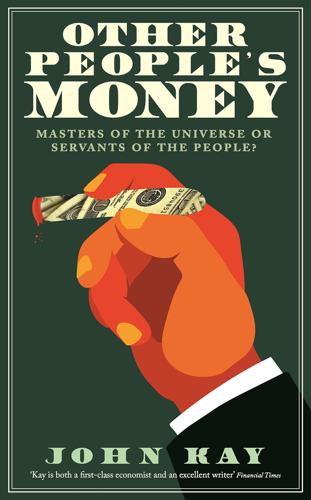
Other People's Money: Masters of the Universe or Servants of the People?
by
John Kay
Published 2 Sep 2015
To the relief of both parties, the US government came to the rescue, providing an extraordinary $85 billion to the failing insurer, which was thus able to meet its obligations in full. Significantly, Goldman had separately insured itself against the failure of AIG.13 But regulatory arbitrage was in place long before Brooke Masters, an executive at J.P. Morgan, invented credit default swaps. An early example of regulatory arbitrage was the circumvention of interest rate restrictions on current accounts under Regulation Q through the Eurodollar market. A different mechanism of regulatory arbitrage was created for retail customers – the money market fund. An investor in a US money market fund holds a share in a portfolio of debt, while the manager of the fund is expected to redeem the share at a fixed price and the income from the portfolio is paid to the investors (in effect, the depositors).
…
The outcome is regulation that becomes progressively more complex but which is rarely fully effective in achieving its intended purpose. Both the Eurodollar market and the market in credit default swaps had origins in regulatory arbitrage, but both acquired a life of their own. This is also a recurrent pattern. The ‘repo market’ is an example of a financial investment that began as a mechanism of regulatory arbitrage and has survived and prospered despite extensive attempts to remove its arbitrage benefit. A repo agreement is the means by which many large corporations make deposits with banks and other financial institutions.
…
The company that saves tax gains, the advisers gain, the trader gains: the taxman loses a corresponding amount. Fiscal arbitrage is a means of taking money out of the pockets of the public and transferring it to advisers, traders and the firms that employ them. With regulatory arbitrage, the loser is the potential beneficiary of the regulation. If the regulation is useless, as may often be the case, the costs of regulatory arbitrage simply represent a transfer from the operating profits of the business to the financial professionals who make the arbitrage possible. If the regulation would have benefited customers, or protected taxpayers or other firms from potential loss, then these customers or taxpayers are losers from the efforts to avoid regulation.
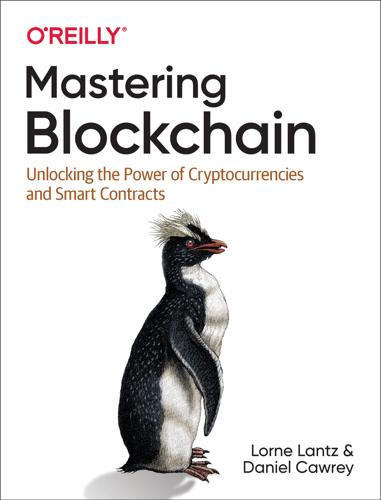
Mastering Blockchain: Unlocking the Power of Cryptocurrencies and Smart Contracts
by
Lorne Lantz
and
Daniel Cawrey
Published 8 Dec 2020
Initially an MIT project that launched in 2015, Enigma raised $45 million selling ENG tokens. Enigma’s settlement with the SEC involved a fine of $500,000, registration of its token as a security, and the establishment of a claims process for harmed investors. Avoiding Scrutiny: Regulatory Arbitrage Regulatory arbitrage is a term for measures taken to avoid compliance scrutiny in heavily regulated jurisdictions like the US. This can be done in a number of ways, such as by falsifying the nature of transactions or switching geographical areas. It has long been a common practice in finance, and the blockchain industry has followed this trend by moving to various jurisdictions, including the ones discussed here.
…
Gox-Bitfinex multisignature wallet contracts, Multisignature Contracts-Multisignature Contracts N Namecoin, Altcoins naming services, Naming Services network hash rate, Block discovery networkscentralized versus decentralized versus distributed design, Distributed Versus Centralized Versus Decentralized Corda, The Corda networknodes having visibility into transactions, Corda ledger DAG design, DAGs Libra's centralization challenge, Novi transactions confirmed by network on Bitcoin, Transaction life cycle New York Department of Financial Services (NYDFS), FinCEN Guidance and the Beginning of Regulation NiceHash, NiceHash Nightfall blockchain, Nightfall nodes, Distributed Versus Centralized Versus Decentralizedin Avalance consensus mechanism, Avalanche Libra, validator and full nodes, How the Libra Protocol Works Lightning, Lightning nodes and wallets in proof-of-stake networks, Proof-of-Stake nonces, The mining processin block discovery on Bitcoin, The mining process running out of nonce space or overflow, The mining process in Satoshi Nakamoto's whitepaper, The Whitepaper noncustodial wallets, Wallet Types: Custodial Versus Noncustodial(see also wallets) nonfungible tokens, Fungible and Nonfungible TokensERC-721 standard for, ERC-721 Nothing-at-Stake problem, Proof-of-Stake Novi wallet, Novi NuBits, NuBits NXT blockchain, NXT O oligarchical model dominating the web, Web 3.0 Omni Core, Understanding Omni Layerlimitations of, Deploying and Executing Smart Contracts in Ethereum Omni Layer, Understanding Omni Layer-Adding custom logicadding custom logical operations to Bitcoin, Adding custom logic-Adding custom logic how it works, How Omni Layer works limitations of, Deploying and Executing Smart Contracts in Ethereum technical stack, overview of, Understanding Omni Layer Tether project built on, Tether opcodes, Gas and Pricing Open Systems Interconnection (OSI) model, The More Things Change operating system platform (EOS), Blockchains to Watch operators, ERC-777, ERC-1155 Optimistic Rollups, Other Altchain Solutions, Lightning nodes and wallets options, Derivatives OP_RETURN field, Adding custom logictranslation of metadata in, Adding custom logic Oracle, Blockchain Platform, Blockchain as a Service oracles, Important Definitionsmanipulation in Fulcrum attack, The Fulcrum Exploit order books, Order Booksthin, slippages and, Slippage over-the-counter (OTC) market, Slippage P paper wallets, Wallet Type Variations Parity, Parity Parity hack (2017), Parity participants, Participants passwordssecurity vulnerabilities, Zero-Knowledge Proof Thinbus Secure Remote Password protocol, Zero-Knowledge Proof pay-to-play, Tools for fundamental analysis payment channels, Lightningnode dropping or losing connection to, Lightning nodes and wallets opening by sending funding transaction, Funding transactions withdrawing funds from, Off-chain transactions payment systemsLibra, Borrowing from Existing Blockchains permissioned ledger uses of blockchain, Payments physical cash versus digital, Electronic Systems and Trust Permacoin, Alternative methods permissioned ledger uses of blockchain, Permissioned Ledger Uses-Paymentsbanking, Banking central bank digital currencies, Central Bank Digital Currencies gaming, Gaming health care, Health Care Internet of Things, Internet of Things IT systems, IT payments systems, Payments permissioned ledgers, Databases and Ledgers permissionless ledgers, Databases and Ledgers person-to-person trading of cryptocurrency, Evolution of the Price of Bitcoin phishing attacks, Security Fundamentals Plasma implementation of sidechains, Other Altchain Solutions Ponzi schemes in cryptocurrency, Skirting the Laws PotCoin, More Altcoin Experiments precompilation of zk-SNARKs, zk-SNARKs preminingissues with, Litecoin premined altcoin, Ixcoin, Altcoins prices (gas), Gas and Pricing Primecoin, Altcoins privacyand censorship resistance with dapps, Use Cases Ethereum-based privacy implementations, Ethereum-Based Privacy Implementations future developments in blockchains, Privacy information security in decentralizing finance and the web, Privacy-Ring Signaturesring signatures, Ring Signatures Zcash, Zcash zero-knowledge proof, Zero-Knowledge Proof zk-SNARKs, zk-SNARKs insufficient anonymity on Bitcoin, The Evolution of Crypto Laundering paired with scalability, Mimblewimble blockchain protocol, Mimblewimble, Beam, and Grin privacy-focused blockchains, PrivacyMonero, Blockchains to Watch-How Monero Works Zcash, Zcash privacy-focused cryptocurrencies, Privacy-Focused CryptocurrenciesDash, Dash Monero, Monero Zcash, Zcash private blockchain networks, Privacy private blockchains, The Enterprise Ethereum Alliance private keys, Public/private key cryptography(see also public/private key cryptography) products/services, buying or selling, Evolution of the Price of Bitcoin proof-of-history, Alternative methods proof-of-stake, Proof-of-Stake-Proof-of-StakeByzantine fault-tolerant algorithm, HotStuff, Borrowing from Existing Blockchains Casper algorithm in Ethereum 2.0, Ethereum Scaling proof-of-stake velocity, More Altcoin Experiments proof-of-storage, Alternative methods proof-of-work, Block Generation, Proof-of-Work-Confirmationsbit gold's client puzzle function type, Bit Gold block discovery, Block discovery confirmations by miners of blocks to include in blockchain, Confirmations criticisms of, Proof-of-Stake, Ripple and Stellar CryptoNote protocol, Monero Ethereum's Ethash protocol, Ethereum: Taking Mastercoin to the Next Level longest chain rule, The mining process mining process for block discovery on Bitcoin, The mining process mining process on Bitcoin, The mining process in Satoshi Nakamoto's whitepaper, The Whitepaper transaction life cycle, Transaction life cycle use by B-Money, B-Money use by Hashcash, Hashcash X11 ASIC-resistant, Dash protocols, Electronic Systems and Trust pseudonimity, KYC rules and, KYC and pseudonymity public keys, Public/private key cryptography(see also public/private key cryptography) public/private key cryptographyBitcoin's use of, Public/private key cryptography examples of public and private keys, Naming Services generating keys, Generating keys private key storage for digital wallets, Authoring a smart contract private keys for wallets, Private Keys public and private keys in cryptocurrency systems, Public and Private Keys in Cryptocurrency Systems-Public and Private Keys in Cryptocurrency Systems unauthorized access to private key, Bitcoin Transaction Security use in controlling access to personal information, Identity and the Dangers of Hacking pull transactions, Bitcoin Transaction Security, ERC-777 push transactions, Bitcoin Transaction Security, ERC-777 Q Quantum Ledger Database (QLDB), Blockchain as a Service Quorum blockchain, Quorum, JPMorgan R ransomware, CryptoLocker and, CryptoLocker and Ransomware rate limiting, Exchange Risk, Rate Limiting real estate transactions, using tokens on a blockchain, Tokens on the Ethereum Platform recovery seed, Recovery Seed recursive call vulnerability, Forking Ethereum and the creation of Ethereum Classic regulationof cryptocurrency exchanges, Jurisdiction FATF and the Travel Rule, The FATF and the Travel Rule FinCEN guidance and beginnings of, FinCEN Guidance and the Beginning of Regulation-FinCEN Guidance and the Beginning of Regulation regulatory challenges in cryptocurrency market, Regulatory Challenges-Basic Mistakes regulatory issues with ICOs, Tokenize Everything regulatory arbitrage, Avoiding Scrutiny: Regulatory Arbitrage-Crypto-Based StablecoinsICOs as example of, Initial Coin Offerings relational databases, Databases and Ledgers replay attacks, Replay attacksprotecting against, on Ethereum and Ethereum Classic, The Ethereum Classic Fork replication systems, Databases and Ledgers REST APIsEthereum network, Interacting with Code WebSocket versus, REST Versus WebSocket ring confidential transactions, Blockchains to Watch, How Monero Works ring signatures, Monero, Ring Signatures, Blockchains to Watchhiding public address of sender on Monero, How Monero Works Ripple, Other Concepts for Consensus, Rippleblock times, Float Configuration 2 Robinhood mobile app, Brokerages Rollups, Zero Knowledge (ZK) and Optimistic, Other Altchain Solutions, Lightning nodes and wallets Royal Mint, The Royal Mint S Santander, blockchain-issued bonds, Banking SAP, Blockchain as a Service, Blockchain as a Service satoshi, Gas and Pricing Satoshi Nakamotobitcoin address related to, The Evolution of Crypto Laundering efforts to establish identity of, Storing Data in a Chain of Blocks identity, guesses at, Bahamas Satoshi's Vision group (Bitcoin SV), The Bitcoin Cash Fork whitepaper, The Whitepaper savings services (DeFi), Savings scalabilitycentralized versus decentralized exchanges, Scalability discontent over Bitcoin network's scaling, The Bitcoin Cash Fork EOS solution to blockchain issues, Tokenize Everything privacy paired with, Mimblewimble blockchain potocol, Mimblewimble, Beam, and Grin Scalable Transparent ARguments of Knowledge (STARKs), STARKs scaling blockchains, Scaling Blockchains-Other Altchain Solutions, The Scaling Problem-Ethereum ScalingAvalanche consensus mechanism, Avalanche DAG network design, DAGs Ethereum, Ethereum Scaling-Ethereum Scaling Lightning solution, Lightning, Lightning-Lightning nodes and wallets Liquid multisignature wallet, Liquid other altchain solutions, Other Altchain Solutions SegWit, SegWit sharding, Sharding sidechains, Sidechains STARKs, STARKs Schnorr algorithm, Privacy Scott, Mark, Skirting the Laws SCP consensus protocol, Stellar scripted money, Improving Bitcoin’s Limited Functionality Scrypt mining, Altcoins, Litecoin Secret Network, Privacy securitiestokens proposed in ICOs, Different Token Types unregistered securities offerings, Skirting the Laws Securities and Exchange Commission (SEC), FinCEN Guidance and the Beginning of Regulation securityBitcoin transaction security, Bitcoin Transaction Security custody infrastructure for exchanges, Counterparty Risk detection of blockchain tampering with Merkle roots, The Merkle Root early vulnerability on Bitcoin, An Early Vulnerability exchanges taking care of private keys, Counterparty Risk flash loans exploiting vulnerabilities in DeFi platforms, The Fulcrum Exploit fundamentals for cryptocurrencies, Security Fundamentals-Recovery Seed identity and dangers of hacking, Identity and the Dangers of Hacking information security in decentralizing finance and the web, Privacy Lightning Network vulnerabilities, Lightning proof-of-stake consensus algorithm, criticisms of, Proof-of-Stake recursive call vulnerability, Forking Ethereum and the creation of Ethereum Classic replay attacks vulnerability, Replay attacks, The Ethereum Classic Fork sharding, vulnerabilities with, Other Altchain Solutions theft of cryptocurrencies in exchange hacks, Exchange Hacks-NiceHash theft of cryptocurrencies in other hacks, Other Hacks-Summary transaction malleability vulnerability, Lightning nodes and wallets security token offerings (STOs), Different Token Types security tokens, Token Economics seeds (recovery), Recovery Seedstorage of, Authoring a smart contract SegWit (Segregated Witness), SegWit, Lightning nodes and wallets self-sovereign identity, Identity and the Dangers of Hacking SHA-256 hash algorithm, Introducing the Timestamp Server, Hashes SHA256 and RIPEMD160 functions, Generating keys shadow market for disinformation, Tools for fundamental analysis sharding, Other Altchain Solutions, Shardingin Ethereum 2.0, Ethereum Scaling Shavers, Trendon, Skirting the Laws Shrem, Charlie, Skirting the Laws sidechains, Other Altchain Solutions, SidechainsLiquid technology and, Liquid Optimistic Rollups and, Lightning nodes and wallets Silk Road, Catch Me If You Cancriminal investigation tracking bitcoin address to operator, The Evolution of Crypto Laundering provision of bitcoin to users without KYC/AML, Skirting the Laws SIM swapping, SIM Swapping-SIM Swapping Singapore, regulatory arbitrage, Singapore single-shard takeover attacks, Other Altchain Solutions slashing algorithms, Proof-of-Stake slippage, Slippage smart contracts, Mastercoin and Smart ContractsDAML language for distributed applications, DAML for decentralized exchanges, Decentralized Exchange Contracts, Custody and counterparty risk deploying and executing in Ethereum, Deploying and Executing Smart Contracts in Ethereum-Interacting with Codeauthoring a smart contract, Authoring a smart contract deployment, Deploying a smart contract-Deploying a smart contract Ethereum Virtual Machine (EVM), The Ethereum Virtual Machine executing a smart contract, Executing a smart contract gas and pricing, Gas and Pricing interacting with a smart contract, Interacting with a smart contract programmatically interacting with Ethereum, Interacting with Code reading a smart contract, Reading a smart contract writing a smart contract, Writing a smart contract deployment for dapps, Challenges in Developing Dapps EOS platform, Blockchains to Watch ERC-20 compliantevents supported by, ERC-20 example of, ERC-20-ERC-20 methods implemented, ERC-20 ERC-compliant, library of, Decentralized Exchange Contracts flash loanscreating the contract, Creating a Flash Loan Contract-Deploying the Contract deploying the contract, Deploying the Contract manipulation of oracles in Fulcrum attack, The Fulcrum Exploit steps in process, Flash Loans Libra support for, Borrowing from Existing Blockchains Omni Layer providing, Understanding Omni Layer publicly viewable record of method call to Uniswap smart contract, Custody and counterparty risk-Exchange rate sending tokens to via push and pull transactions, ERC-777 third-party auditors of, Fungible and Nonfungible Tokens Uniswap contract viewable on Ethereum, Infrastructure social media, campaigns to influence cryptocurrencies, Tools for fundamental analysis soft forks, Understanding Forks software development, changes from use of cryptcurrency and blockchain, Web 3.0 software forks, Understanding Forks software wallets, Wallets Solidcoin, Altcoins Solidity language, Authoring a smart contract South Korean exchanges, Regulatory Challenges speculation in cryptocurrency, Market Infrastructure, Tulip Mania or the internet?
…
Decentralizing Finance and the Web Redistribution of Trust Identity and the Dangers of Hacking Wallets Private Keys Naming Services Decentralizing Finance Important Definitions Stablecoins DeFi Services Lending Savings Derivatives Decentralized Exchanges Decentralized Versus Centralized Exchanges Flash Loans Creating a Flash Loan Contract Deploying the Contract Executing a Flash Loan Flash Loans for Arbitrage The Fulcrum Exploit Privacy Zero-Knowledge Proof Zcash Ring Signatures Web 3.0 Summary 8. Catch Me If You Can The Evolution of Crypto Laundering FinCEN Guidance and the Beginning of Regulation The FATF and the Travel Rule Skirting the Laws Avoiding Scrutiny: Regulatory Arbitrage Malta Singapore Hong Kong Bahamas Crypto-Based Stablecoins NuBits Digix Basis Tether Initial Coin Offerings Founder Intentions Token Economics Whitepaper Exchange Hacks Mt. Gox Bitfinex Coincheck NiceHash Other Hacks Bloomberg TV BTC Stolen EtherDelta Redirection CryptoLocker and Ransomware SIM Swapping Summary 9.
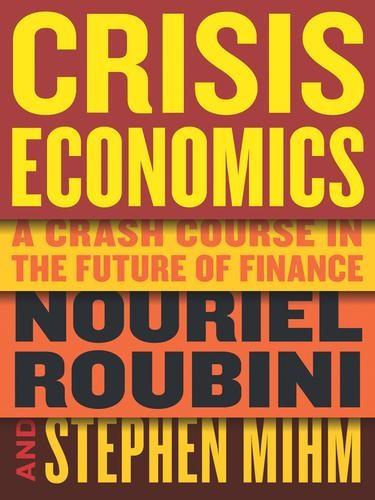
Crisis Economics: A Crash Course in the Future of Finance
by
Nouriel Roubini
and
Stephen Mihm
Published 10 May 2010
That’s all well and good, but bankers and traders have a funny way of dodging even the most carefully constructed regulations. Such regulatory arbitrage is one of the issues that policy makers must confront if reforms are going to have any effect. In the years before the crisis, ordinary banks were reasonably well regulated, and in exchange, they had access to a government safety net: deposit insurance and explicit lender-of-last-resort support. This bargain was stifling for bankers who wanted more freedom to take risks. So they increasingly shifted banking activities to the shadow banks: institutions that looked and acted like banks but weren’t regulated like them. This was regulatory arbitrage: the purposeful movement of financial activity from more regulated to less regulated venues.
…
They are far more common and comprehensible than conventional wisdom would lead you to believe. In the pages that follow, we’ll move between past and present, revealing how the foregoing questions were asked and answered in the wake of previous crises. Along the way we’ll explain several intimidating and often misunderstood concepts in economics: moral hazard, leverage, bank run, regulatory arbitrage, current account deficit, securitization, deflation, credit derivative, credit crunch, and liquidity trap, to name a few. We hope our explanations will prove useful not only to financial professionals on Wall Street and Main Street but also to corporate executives at home and abroad; to undergraduate and graduate students in business, economics, and finance; to policy makers and policy wonks in many countries; and most numerous of all, to ordinary investors around the world who now know that they ignore the intricacies of the international financial order at their peril.
…
A growing number of people who joined the financial services industry from the 1980s onward realized that they could make plenty of money, so long as they were willing to walk the banking tightrope without a safety net underneath. There were ways to conduct banking free of regulations, but also free of the protections afforded ordinary banks. So began a game of “regulatory arbitrage,” the purposeful evasion of regulations in pursuit of higher profits. This quest gave rise to the shadow banks. The shadow banks didn’t have tellers; they didn’t stand on street corners in neighborhoods across the country. They had funny acronyms, or what Paul McCulley aptly called a “whole alphabet soup of levered up non-bank investment conduits, vehicles, and structures,” many of which lurked off the balance sheets of conventional banks.
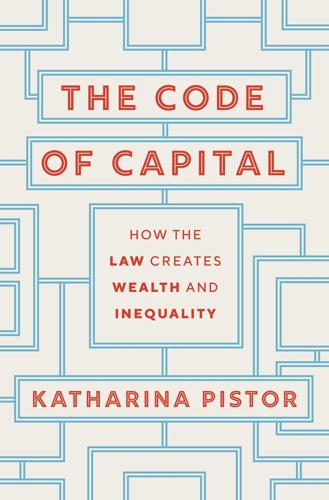
The Code of Capital: How the Law Creates Wealth and Inequality
by
Katharina Pistor
Published 27 May 2019
I will show that it can be and is used not just to optimize the allocation of risks and returns in the production of goods and services; instead, it can be turned into a capital minting operation by employing the ability to partition assets and shield them behind a chain of corporate veils to access low-cost debt finance, and to engage in tax and regulatory arbitrage. Separating the use of corporate law for organizing a business from its capital-minting function is not always easy, and one function frequently morphs into the other, but ignoring the power of corporate law as a capital mint risks missing a major source of private wealth in our age of shareholder value maximization.
…
OECD member states have vowed to crack down on tax havens and have blacklisted countries that offer rates below what they deem proper, but they have not yet reconsidered their willingness to recognize any corporation created anywhere, even if it maintains no operations and has no employees there, and its only purpose is to engage in tax arbitrage.58 REGULATORY ARBITRAGE Within hours after LBHI had filed for bankruptcy on September 15, 2008, its major UK-based subsidiary, Lehman Brothers International Europe (LBIE), went into administration under UK law. Soon, seventy-five distinct bankruptcy proceedings were opened in various jurisdictions in an attempt to salvage assets for the various creditors of Lehman’s many subsidiaries.
…
When the creditors of LBF argued that the entire scheme was only a scam and should simply be set aside, the chancellor was in disbelief: It is, at least at first sight, counter-intuitive to think that one of the largest and most sophisticated investment banking institutions in the world, staffed by some of the foremost experts in the business and advised by the most eminent law firms, should have spent more than a decade solemnly entering into countless thousands of mutual transactions which were either completely unnecessary, completely ineffective or both. The suspension of disbelief called for by the parties’ primary cases has not been easy.66 The chancellor was not surprised, it seems, that the same experts had spent all this time devising a scheme that had no intrinsic economic value but was devoted entirely to regulatory arbitrage. Like the chancery courts of the eighteenth century, which had sided with the landed elites, he had few qualms about parties using the law to their own private benefits, even if this put the entire system at risk. Indeed, he explicitly sidestepped an inquiry into the legality of an endless chain of repos that never settle or the ramification for trust law that followed from this scheme.

The Price of Time: The Real Story of Interest
by
Edward Chancellor
Published 15 Aug 2022
When the price of leverage declines, the amount of borrowing increases and Wall Street has a stronger incentive than normal to evade regulations in search of an extra buck.56 Thus, ultra-low interest rates and other monetary novelties after 2008 induced an increase in leverage, a debt-fuelled merger boom and countless carry trades (most of which involved ‘volatility-selling’ in some form or other). The search for yield brought about a collapse in underwriting standards and the return of less-regulated ‘shadow banks’. Regulatory arbitrage abounded. In Switzerland, where new regulations restricted the size of bank mortgages, construction companies stepped in to provide home loans.57 In 2017, the UK’s chief financial regulator identified several cases of what he called ‘pure regulatory arbitrage’ by British banks, but neglected to mention that the Bank of England’s monetary policy provided a strong incentive to evade the rules.58 Andrew Haldane identified another problem.
…
Enoch, 290 Powell, Jerome, 262, 305, 310 Price, Richard, 8–9 price-stabilization policy of 1920s, 86, 87–91, 89, 92–4, 96–8, 108, 112, 120, 203; contemporary criticisms of, 87, 88, 90–91, 92, 97–8, 101; Hayek’s critique of, 92, 96, 96*, 101, 105, 108, 114, 133; rate cut after Long Island (1927), 83, 88, 92, 98; tightening (1928), 93, 94, 98, 108, 261 private equity firms, xxii, 162–3, 166, 204, 207, 223 ‘promoter’s profit’ concept, 158–9, 160, 161, 164 property markets: ‘Bank of Mum and Dad’, 212; booms in Spain and Ireland, 253; bubble in US before 2008 crisis, 112, 114, 115, 115†, 116, 117, 148, 191, 205; bubbles as red flags, 132, 135; bubbles in 1920s USA, 90, 93; bubbles in 1980s Japan, 106–7, 108; bubbles in post-crisis decade, 44, 173, 174–5; Chinese bubble, xxiii, 271, 272–4, 282, 288, 289; Fannie Mae and Freddie Mac, 292; ‘Generation Rent’ in UK, 212; housing affordability crisis in UK, 212–13; housing crisis in UK, 174; housing in ancient world, 15; importance of interest rates, 15, 44, 173, 174–5; inequality after 2008 crisis, 210–11, 212–13; mortgage equity withdrawal, 112–13, 191, 205; negative growth impact of building booms, 135–6, 144–5, 148; and negative interest rates, 174, 245; New York’s pencil towers, 209; post-2008 recovery in luxury real estate, 209–10, 212, 213; and quantitative easing, 292; skyscraper building in 1920s, 90; Turkish bubble bursts, 259–60; Xi’s ‘three red lines’, 310 protectionism, 261–2 Protestant Reformation, 26 Proudhon, Pierre-Joseph, xvii–xviii, xix, xxi, xxv, 9, 306 ‘public choice’ school, 286–7 Puerto Rico, 196 quantitative easing, 131*, 138, 236, 239–40, 263, 292; and ECB, 146, 241, 242; by Emperor Tiberius, 12; Fed’s rounds of, 175, 228, 238, 240; and international carry trade, 137; in Japan, 241, 242, 294; Law anticipates, xxii; and market volatility, 228, 237; the rich as chief beneficiaries of, 12*, 214, 215; timeline for adoption of, 241 Quarles, Francis, 172 Radio Corporation of America, 90 Rae, John, 30, 31 railways: in 1930s USA, 142–3; amalgamations in robber baron era, 157, 158, 159; in Argentina, 80, 80*; China’s high-speed network, 275; completion of US and European networks, 78; nineteenth-century manias, 70–72, 73–4 Rajan, Raghuram, 133, 134, 192, 205 Rand, Ayn, 110 rare earth elements, 173 Razak, Najib, 258 regulation of financial markets: after 2008 crisis, 227, 232, 292–4, 304; in ancient Near East, 9–10, 14, 24; Basel banking rules, 232; under Bretton Woods, 291; and causes of 2008 crisis, 114–15, 117; compliance staff, 232†; and interest rates, xxv; ‘macroprudential’ regulation, 232–3, 293; National Banking System in USA, 157; off-shore regulatory arbitrage, 65; ‘regulatory arbitrage’, 9–10, 14, 23–4, 65, 232–3 Renaissance, Italian, 21–4, 25 rent, xxiii*, 7, 15, 26, 31, 37, 212, 237, 299 Rifkin, Jeremy, The Zero Marginal Cost Society (2014), 127–8 Rigby, Edouard de, 56 risk: carry trading, 220–24, 227, 229, 233, 234, 236, 237–8; and central banks, 230–31; as central to capitalism, 220, 298; duration risk, 224–6; insurance underwriting, 219–20, 219†, 233; liquidity risk, 72–3, 75, 226–8, 304–5; measurement of, xxv, 139, 176–7, 218–19, 220–34; medieval Church acknowledges, 25–6; mispricing of, 176–7, 220, 222, 230–31; moral hazard, 75, 76, 136, 220, 226, 233, 284, 298; ‘portfolio balance channel’, 222; premiums, xxv, 12, 13, 14; ‘risk parity’ strategy, 229; and ultra-low interest rates, xxi, 52–61, 64–73, 77–81, 121–2, 135–9, 145, 149, 176–9, 220–34, 283, 285, 291–2; variety/types of, 219, 224–8; and volatility, 228–30, 233, 234, 254, 304, 305 Rist, Charles, 82, 83, 92 Robertson, Dennis, 97, 124, 311, 311* Robinhood Markets, 307 Robinson, Joan, 11 Robinson, William, 65 Rockefeller, John D., 157, 203 Rogoff, Kenneth, 235–6, 245, 294 Romania, 253 Rome, ancient, 9, 11, 12, 13, 13, 15, 25; attitudes to usury, 17–18, 20–21, 200, 219 Roosevelt, F.
…
The conditions for keeping persons as collateral for loans were specified. After crop damage caused by flooding or drought, the Code instructs that interest must be forgiven.34 Drawing up financial regulations is one thing but getting people to follow the spirit of the law is another matter. What we call ‘regulatory arbitrage’ – namely, the attempt by financial practitioners to evade regulation – turns out to be as old as the law itself. The highest chargeable rates may have been capped by Hammurabi, but he didn’t specify over what time period. Lenders could apply the maximum legal rate for a term as short as a month, which made an extremely high annual percentage rate.
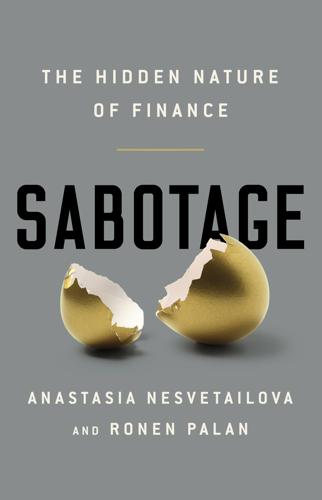
Sabotage: The Financial System's Nasty Business
by
Anastasia Nesvetailova
and
Ronen Palan
Published 28 Jan 2020
A wide definition comes from the regulators, who describe financial innovation as the introduction of ‘something new that reduces costs, reduces risks or provides an improved product/service/instrument that better satisfies participants’ demands’ within a financial system.2 Who can object to that? What could possibly be wrong with improving services to clients? Alas, somehow innovation, at least in finance, often leaves a bitter aftertaste, not least among the many who have been sabotaged by the ‘innovation’. One sceptic recently described financial innovation as, simply, regulatory arbitrage.3 Or, put differently, a technique for sabotaging the public welfare and the government. We agree. Only we would add that if we have learned anything in the past four decades, it is that financial innovation includes the sabotage not only of governments but also of clients and competitors.
…
This means that buyers often discover an unwanted or risky element far too late, and it may be impossible to correct the outcome due to the conditions of the contract. Third, financial innovations increasingly span several markets, making oversight and regulation of the process extremely challenging. Historically, regulatory arbitrage has been feeding a lot of financial and legal innovation. These three elements, we argue, make financial innovation not only the ideal tactic of moneymaking but also a perfect tool in the Veblenian arsenal of sabotage. As an industry, finance is uniquely primed to capitalize on the opportunity to carry out such ‘new combinations’.
…
While some markets centred in London have achieved great efficiencies in terms of liquidity and scale (for instance, in foreign exchange trading), the network of city-based financial institutions, as well as law and accounting firms, has been essential to making possible schemes that play a key role in regulatory arbitrage, tax avoidance and money laundering. Cryptocurrencies have the potential to become ‘super tax havens’.6 In fact evidence suggests that they already are. To date there exist no effective enforcement mechanisms to track the online movement of bitcoins or other cryptocurrencies. According to one estimate, if even 1 per cent of funds currently sitting in offshore accounts were transferred into bitcoin, the value of this virtual currency would grow exponentially.

Live Work Work Work Die: A Journey Into the Savage Heart of Silicon Valley
by
Corey Pein
Published 23 Apr 2018
Michael Froomkin, who presented a paper on that subject at a Harvard symposium in 1996. Froomkin wrote that “the multinational nature of the Internet makes it possible for users to engage in regulatory arbitrage.” What that clever coinage refers to is the practice of using the internet to make money doing something that might be illegal if you did the same thing without using the internet. The VC Marc Andreessen, who made a fortune in the early nineties as a cofounder of the once dominant Web browser Netscape, revealed regulatory arbitrage to be a crucial plank in the strategy of his investment firm, Andreessen-Horowitz, in a 2014 interview with Bloomberg News.
…
The VC Marc Andreessen, who made a fortune in the early nineties as a cofounder of the once dominant Web browser Netscape, revealed regulatory arbitrage to be a crucial plank in the strategy of his investment firm, Andreessen-Horowitz, in a 2014 interview with Bloomberg News. Andreessen enthused that tech startups could “reinvent the entire system” of finance and commerce. “To me, it’s all about unbundling the banks,” he said. There are regulatory arbitrage opportunities every step of the way. If the regulators are going to regulate banks, then you’ll have nonbank entities that spring up to do the things that banks can’t do. Bank regulation tends to backfire, and of late that means consumer lending is getting unbundled. What exactly is “unbundling”? Andreessen’s buzzword simply means taking a regulated service provided by traditional banks, such as making cash loans to individuals, and offering the same service online, where legal precedent did not apply and where regulators were often poorly prepared to police.
…
The only innovation such startups have offered is an exciting new way to get screwed. * * * The wildly successful cowboys of the tech industry imperium set a clear example for up-and-coming entrepreneurs. Sites like Hacker News and Product Hunt, where newly launched startups seek publicity and investment, are full of barely disguised efforts to get rich through “regulatory arbitrage.” With a quick search I found dozens of examples of startups whose founders knew, or were warned, that they might be breaking the law. Bitcoin Fax built a service to “send faxes anywhere in the world with no sign up required” and payment accepted in Bitcoin. One reviewer recognized the likely customer base immediately: communications for “highly illegal” transactions involving drugs or child pornography on the Deep Web, where Silk Road once thrived.
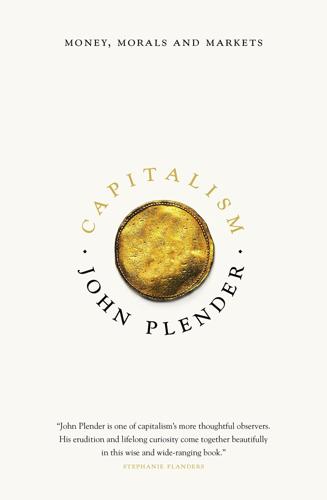
Capitalism: Money, Morals and Markets
by
John Plender
Published 27 Jul 2015
There is a more bizarre and ruthless logic in the cynical way the Catholic Church tolerated usury on the basis that the Jews who carried out the business were going to hell anyway. (In Dante’s Inferno, usurers were consigned to the seventh circle of hell in the company of sodomites.) As time progressed, both Jewish and Christian merchants also became adept at finding ways around the Church’s usury laws through what would now be called regulatory arbitrage. For example, interest could be disguised if the lender issued an IOU, or a bill of exchange, at a discount while insisting on being paid back at face value. In some countries, the laws themselves also ceased to be enforced as the pre-Reformation Catholic Church became more lax. So, like the bank robber Willie Sutton, who reputedly said he robbed banks ‘because that’s where the money is’, the asset-rich, cash-poor European feudal elite went to such merchants because they were the only available source of money for the pursuit of war, grand projects or conspicuous consumption.
…
The rise of new, capital-intensive industries such as railways made capital demands that could only be satisfied by large numbers of investors. Entrepreneurs responded to legislative restraints in England by setting up companies in the US and in France to conduct operations in their home country. In recognition of the needs of industry and the reality of cross-border regulatory arbitrage, the Bubble Act was repealed in 1824. There followed another flurry of incorporations approved by Parliament. These stock promotions were all too often accompanied by fraud, as the temptation to make off with other people’s money became overwhelming. Anyone who wishes to understand this phenomenon should turn not to economic historians but to Dickens and, more specifically, Nicholas Nickleby (of which more in Chapter Five).
…
In the case of the British, they were also being urged by government ministers not to be too tough on the City of London, which appeared to have a unique capacity for creating employment and generating tax revenue in an industry where Britain appeared to enjoy a remarkable comparative advantage. The regulators will continue to struggle because they are locked in a vicious circle. Every time there is a financial crisis, a political backlash ensures a raft of ever more complex re-regulatory measures. Financial market practitioners react to these by engaging in regulatory arbitrage, which is relatively easy in a world of global capital flows without a global regulator – banks simply put their business through markets in countries that have less draconian rules. There is always some jurisdiction, after all, in which the rules are looser than in most of the countries where a given bank is domiciled.
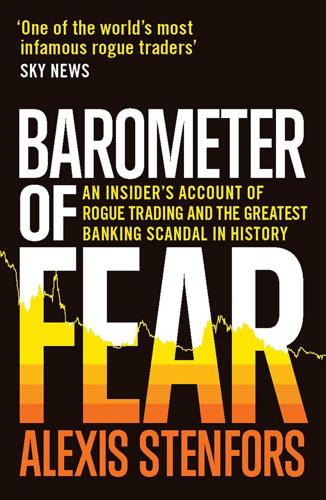
Barometer of Fear: An Insider's Account of Rogue Trading and the Greatest Banking Scandal in History
by
Alexis Stenfors
Published 14 May 2017
Money markets were heavily regulated at the time, particularly in the US, making a strong case for setting up a US dollar money market outside the jurisdiction and scrutiny of the Federal Reserve and other US authorities.8 This also coincided with the end of the foreign exchange controls that had existed in Western Europe. With the Eurocurrency market, a free, competitive and global money market was beginning to take shape for the first time. A platform for engaging in regulatory arbitrage was formed, and European banks jumped at the opportunity to exploit loopholes in different jurisdictions. As policy makers began to realise that this market was impossible to curb (there was no global regulator, no global central bank nor any global state), they began to embrace and even encourage it.
…
However, LIBOR was never an outcome of a market-determined process. As mentioned previously, the submitted quotes are not binding, tradeable prices. Instead, LIBOR (and its equivalents elsewhere) can be seen as a benchmark for where the selected panel banks argue that the money market is. The Eurodollar market prompted regulatory arbitrage between different jurisdictions, which resulted in a competitive deregulation process among states. Likewise, LIBOR (with its roots in the Eurodollar market) managed to escape the confines of particular regulatory jurisdictions. The benchmark remained unregulated up until 2013.14 The definition, the fixing mechanism and the panel bank compositions of the LIBOR benchmarks managed to remain remarkably unchanged, despite far-reaching changes in financial markets more generally from the 1980s onwards.
…
Although the Basel rules were designed as a deterrent to excess risk taking (lending is a risky activity because the borrower might default), they also came to have a perverse effect by acting as an incentive for increased derivatives trading by banks. The fear of risky assets, combined with the generous treatment of derivatives by regulators, led to a kind of ‘regulatory arbitrage’. Financial derivatives increasingly became part of the daily trading and funding routines. And as the banks’ risk appetite grew, their speculative activity increasingly took place via derivatives that replicated the idea of borrowing and lending. Instruments were created that looked like old-fashioned borrowing and lending but were not treated as such – because that was not what they were.
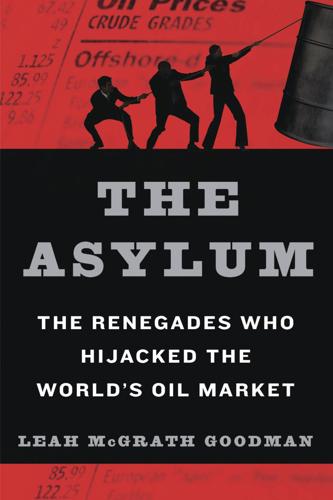
The Asylum: The Renegades Who Hijacked the World's Oil Market
by
Leah McGrath Goodman
Published 15 Feb 2011
over-the-counter market (or spot market)—A multitrillion-dollar, largely unmonitored trading realm existing outside the regulated exchanges, immense in its scope (although the exact scope remains as yet undetermined). Over-the-counter trades are often conducted privately online, in person, by telephone, or via Internet instant-messaging. regulatory arbitrage—The act of moving a business or market to a location where the legal rules applying to it are more relaxed and, thus, more favorable. When Wall Street threatens to take its businesses offshore, it is essentially engaging in regulatory arbitrage. securities—Any contracts assigned a value that may be traded. Securities and Exchange Commission (SEC)—A government body created by Congress during the Great Depression to regulate the securities markets and protect the investing community against fraudulent and manipulative practices.
…
A partner at Sullivan & Cromwell, Raisler had once been general counsel for the CFTC and, oddly enough, had also done work for Nymex under Guttman as far back as the 1980s. Like the Nymex silver traders who’d arbed silver coins against silver futures decades ago, the advent of the London loophole was a prime example of a game that industry insiders liked to call “regulatory arbitrage,” the objective being to operate from the region with the fewest rules. The Nymex executives suddenly felt outmaneuvered and hemispherically challenged. For years, they’d been toying with the idea of building an oil market in Dubai, maybe opening a few satellite exchanges in Singapore, Shanghai, Tokyo, Taiwan, or Budapest, but nothing had ever come to fruition.
…
Realizing he wasn’t going to make any headway, Newsome issued a veiled threat that would be hard to forget. He suggested that if Nymex had no choice but to offer its energy market through a foreign country, like ICE, to get around the U.S. trading rules, then that’s what it would have to do. He was talking about entering the hazardous game of regulatory arbitrage. Nobody batted an eye. At a press conference that spring, Newsome announced Nymex would be opening an electronic exchange in Dubai. The most controversial thing about his announcement was that the Arab officials who’d traveled to New York from Dubai to meet the press proclaimed the venture would cost $300 million.
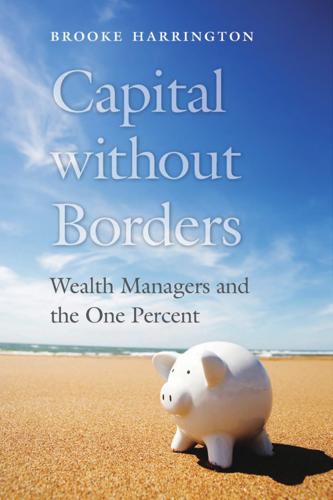
Capital Without Borders
by
Brooke Harrington
Published 11 Sep 2016
The timeline described by Mark and by several other participants in this study coincides roughly with the phenomenon that social scientists now term “financialization.”6 In particular, the combination of loosened currency controls and decreasing regulation of financial markets in the 1970s and 1980s led to an explosion of international commerce and of profits derived from investment.7 One result was the emergence of a new group of elites in need of wealth management services—people who, along with their fortunes, have become so mobile that they seem to exist between nation-states, rather than within the ordinary territorial boundaries that the law assumes.8 This new, “multiterritorial” client required a different kind of service, one focused not on making the most of legal and financial opportunities within a given state but on exploiting the conflicts and gaps between the laws of individual countries.9 This technique, known as “regulatory arbitrage,” is now part of a basic wealth management strategy for many clients.10 In keeping with these changes, wealth management firms have altered the way they present themselves to clients, shifting from a message of institutional stability—as shown in the Northern Trust advertisement in Chapter 2—to one of institutional nimbleness in the international arena.
…
Their offerings ranged from “bespoke international tax structures” and “property, yacht and aircraft acquisitions, onshore and offshore,” to “emigration and immigration” and “tax-efficient divorce settlements.” These diverse activities all hinge on managing and maximizing client benefit from the legal gaps and conflicts involved in cross-border transactions. The essence of this “regulatory arbitrage” has been to foreground a contemporary version of that “shrewd practice and chicanery” Veblen identified more than a century ago. This modern practice involves innovative financial-legal activity that “operates within the letter but against the spirit of the law.”11 What seems most troubling to observers is that while such tactics are perfectly legal, they represent a “heads I win, tails you lose” approach to rules and regulations.
…
There is also continual innovation taking place, driven by legislative action onshore to make certain practices illegal, as well as by counterlegislation offshore designed to create new alternatives and opportunities.119 A key element of the professional’s job is to keep abreast of these changes and to innovate on the basis of the new possibilities they present. Through skillful regulatory arbitrage, use of offshore financial centers, and insertion of legal distance between clients and their assets, wealth managers can neutralize many political risks and make many forms of legislation and regulation optional, if not irrelevant. With good professional advice, clients can pick and choose the laws to which they wish to be subject—and they usually choose the ones that maximize their ability to control their wealth.
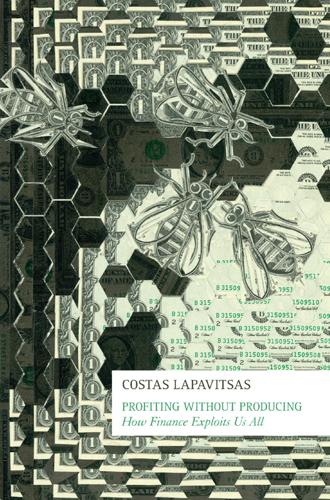
Profiting Without Producing: How Finance Exploits Us All
by
Costas Lapavitsas
Published 14 Aug 2013
Banks were able to continuing lending and making profits while appearing to meet capital adequacy requirements. This process has been referred to as ‘regulatory arbitrage’, often implying that it was due either to the inadequacy of the regulators, or to a temporary lapse in bank operating practice.35 However, the bypassing of Basel II is merely an instance of the spontaneous tendency of the financial system to undermine regulation by creating new activities with higher returns, which was briefly discussed above. Basel II created opportunities for large banks to engage in ‘regulatory arbitrage’ since it placed emphasis on ‘hard’ techniques of risk measurement to set the precise level of capital adequacy.
…
Basel II created opportunities for large banks to engage in ‘regulatory arbitrage’ since it placed emphasis on ‘hard’ techniques of risk measurement to set the precise level of capital adequacy. But it is misleading to assume that market-conforming regulation could ever be designed permanently to avoid the danger of ‘regulatory arbitrage’. The best that could be hoped for would be continually to revise the regulatory framework to contest the efforts of financial institutions to bypass existing regulations. The failures associated with market-conforming regulation in the context of financialization have led to a search for new approaches to ‘systemic’ regulation. Ideas have been put forth of treating the financial system as a ‘network’ or as a biological system, but these have not led to concrete suggestions regarding regulation.
…
Effective Tobin taxes would probably require international coordination among states, though there is scope in practice for introduction at a national or regional level. If public property and control were widely re-established in the sphere of finance, the introduction of Tobin taxes would probably become easier. Public banks operating in a spirit of public service would more easily refrain from regulatory arbitrage and would more naturally accept restricted trading in open financial markets. A weightier presence for public banks in the financial system, moreover, would reduce the ability of private banks to influence the policymaking environment. In short, regulatory change would benefit from changes in the property relations within the financial system.

Broken Markets: A User's Guide to the Post-Finance Economy
by
Kevin Mellyn
Published 18 Jun 2012
In the wake of the 2008 crisis, which required two trillion-pound banking groups to be bailed out by the government, it is hard to believe that this was a good bargain for the UK taxpayer. Broken Markets The Shell Game The vast expansion of both rules- and principles-based regulation at the expense of the subtler supervision of the markets and players by the Bank of England and its peers set off a game called regulatory arbitrage. At its crudest, this simply meant moving the legal locus of activities to the least-regulated jurisdictions, such as the Cayman Islands. However, there were clear limits to this. The more common practice was to game capital adequacy rules—both Basel standards and those set by national regulators.
…
w 163 I Index A C Anglo-Saxon capitalism, 84 Card Act, 68, 70 Anglo-Saxon-type banking systems, 156 CHIPS.See Clearing House Interbank Payment System Asset securitization, 66 Association of Community Organizers for Reform Now (ACORN), 65 Austerity definition, 98 Euro, real unification, 99 Germany, 99–101 B BankAmericard, 29 Bankcard association/card scheme, 29 Bank-centric system, 110 Bank for International Settlements (BIS), 108 Basel III process, 50–51 Basel process, 27–28 Basel standards, 61 Bipartisan government policy, 72 Boom optimistic entrepreneurs, 77 Bretton Woods system, 26, 111 Bureaucracies, 21 Civilization, 64 Clearing House Interbank Payment System (CHIPS), 106, 107 Committee of Payment and Settlement Systems (CPSS), 108 Community Reinvestment Act (CRA), 65–66 Consumer banking BankAmericard, 29 bankcard association/card scheme, 29 branch-based customer relationship, 29 credit card industry, 30 Depression-era Glass-Steagall Act, 33 “diseconomies of scale”, 35 FDIC, 34 four-party model, 29 institutional investors, 34 “market-centric” financial system, 33 merchant/customer relationship, 29 Pac-Man banking, 34 risky business, 31–33 RTC, 31 SEC, 33 S&L industry, 28, 30 1 166 Index Consumer banking (continued) statistical analysis, 30 US “flow-of-funds” data, 28 usury laws, 30 Consumer Finance Protection Bureau (CFPB), 68 Continuous Linked Settlement (CLS), 108 Creative destruction, 85 Credit-driven economy, 76–77 Crony capitalism, 85 Cross-Pacific economy, 97 D Debtor Nation, 64 Dirigisme, 83 Dollar-centric financial system, 112 Durbin Amendment, 70 E ECB.See European Central Bank Economic consequences, financial regulation, 55 bank P & Ls and balance sheets bureaucratic regulation, 59 capital allocation, 57 capitalism, 57 clearinghouse/transaction switch, 58 contradictory rules, 59 creative destruction, 63 free-market capitalism, 57 full-blown panic leading, 57 lender-of-last-resort function, 58 payments system, 58–59 private-sector banks, 58 consumer protection vs. access, 67–68 financial access restriction brick-and-mortar branches, 66 civilization, 64 clearinghouse, 63 CRA, 65–66 credit judgments, 65 economic enfranchisement, 64 government paternalism, 65 joint-stock banks, 63 loan securitization, 66 mass-market retail banking, 66 national and multilateral development agencies, 65 non-credit worthy segments, 66 ownership society, 66 paychecks, 64 premium/reward cards, 66 individual banker accountability, 55 interest reduction, 56 predatory lending, 56 product differentiation, 68–69 public utility, 55, 56 regulatory, capital, and litigation costs, 56 regulatory compliance and fraud losses, 56 savers and investors, 71–73 shell game asset-securitization process, 61 commercial and industrial loans, 62 credible assessment, 62 Dodd-Frank Act, 63 Federal Reserve Bank, 63 free-market creative destruction, 63 globalization, 62–63 Great Depression, 61 Great Moderation, 61 least-regulated jurisdictions, 61 regulatory arbitrage, 61 relationship banking, 62 retail banking revolution, 63 return-on-equity business, 62 rules-based regulation, 61 securitization and market-based funding, 63 supervision vs. rule making, 59–60 unbanking, 70–71 utility-style banking, 56 European Central Bank (ECB), 6, 99, 102–103 F Federal Deposit Insurance Corporation (FDIC), 34 Index Federal Reserve, 101 Finance consumers, 117 American Revolutionary War song, 118 bondholders and money market funds, 138 Bureau of Labor Statistics, 126 business-to-business commerce, 119 consumerism, 118 credit score, 120–121 debt free, 138–139 “dot-com” bubble, 1264 employment and consumer credit, 121–122 Gallup polling organization, 127 Great Society, 126 house prices, 133 “infrastructure”, 119 innovation and education, America advantage, 129 American living standards, 129 global success, 128 high-stakes examinations, 130 industrial policy, 128 student loans, 131 mass-market pottery, 119 money saving, 136–137 New Class, new elite educated caste, 132–133 non-tradable private sector, 127 one’s station in life, 118 overseas trade, 119 pent-up demand, 119 private-sector employment, 125 property taxes, 127 “self-liquidating”, definition, 119 shelter asset bubbles and distorts markets, 133 electoral process, 134 Japanese economy, 135–136 retirement plans and financial advisors, 134 Travellers Club, 133 wealth effect, 133 short-term insurance scheme, unemployment assistance, 127 stock market, 137–138 structural unemployment American economy, 123–125 labor force participation rate, 123 labor markets, Europe, 122 solidarity, 123 three-tiered system, 122 subsidy-based industries, 125 super-safe government debt, 125 technological creativity and economic progress, 117 unionized public-service employees, 125 US job growth, 126 “welfare to work” requirements, 126 You, Inc., 139 Finance-driven economy, 1, 72 anti-capitalism, 2 capitalism, 1 chronic debt crisis, 22 corporate America, 20 current movie artificial bank earnings, 7 asset prices, 6 banking implosions, 6 borrowers and investors connection, 10 borrowing demand, 7 catastrophic financial bubble, 10 civilization, 10 corporatism, 9 democratic crony capitalism, 9 Dodd-Frank act, 8 economic growth and social stability, 10 financial repression, 9 Glass-Steagall Act, 8 human ingenuity, 10 interbank funding markets, 6 low interest rates and easy money, 6 market collapse, 10 money market, 6 overexuberence, 6 overinvestment and speculation, 6 pre-crisis conditions, 8 printing money, 7 private capital, 7 167 168 Index Finance-driven economy (continued) profitability, 7 quantitative easing, 8 recovery, 8 regulation, 8 regulatory capital rules, 8 resources and tools, 9 shell-shocked enterprises and households, 8 end of employment, 21–22 financial leverage magic and poison CEO class, 14–15 consumer debt, 15–16 disconnection problem, 11–12 market bargain, 10 real economy, 10 wealth financialization, 13–14 working capital, 11 global financial crisis, 2 Great Moderation, 16–18 Great Panic, 18–19 household sector agony, 19–20 investor class, 22 Marx, Karl asset bubble, 5 cash nexus, 4 dot-com bubble, 5 economic revolution, 3 First World War, 4 free markets, 3 French Revolution, 3 globalization, 3 Great Depression, 5 liberalism, 3 normalcy, 4 overproduction and speculation, 3 Wall Street, 4, 5 revolutionary socialism, 2 sovereign debt, 8, 22 Finance reconstruction, 142 bank bashing, 146 “bankers”, 142 business model, challenges, 145 Citigroup, 145 cyclical businesses, 143 government management, 142 legitimacy bonus culture, 148–150 privileged opportunity, longestablished bank, 146 short-term share-price manipulation, 148 state and legal systems, 147 stock price, 147 mark-to-market price, 144 “producers”, 143 profession, definition, 163 prudence, 145, 161–163 root-and-branch transformation, 145 talent pool, 144 “the race for talent”, 143 trust cash management, 160 Financial Market Meltdown, 159 FSA, 159 hackneyed term, 159 information asymmetry, 159 non-bank financial service provider, 161 oversold/up-sold products, 159 utility Anglo-Saxon-type banking systems, 156 big data tools, 158 bills-of-exchange market, 150 branch and payment services, 157 clearinghouse creation, 158 core banking, 154 economic value transmission, 150 exchange of claims, 151 fee-income growth, 155 fiat money system, 151 financial intermediation, 150 financial transactions, 157 flexible contractor/subcontractor relationship, 158 information technology, 156 “liquidity premium”, 152 multidivisional/M-form organization, 153 non-interest income, 155 old-media companies, 157 Index overhead value analysis, 154 “privileged opportunity”, 152 quill pen–era practice, 158 sheer utility value, 155 silos, product business, 153 transaction accounts, 152 venture capital industry, 142 “War for Talent”, 143 Financial crises, 23 affordable housing, 24 banking “transmission” mechanism, 43 Basel III process, 50–51 basel process, 27–28 consumer banking(see Consumer banking) Dodd-Frank, 49–50 domestic banking system, 38 European Union, 51–53 FDIC, 40 finance-driven economy’s leverage machine, 43 Financial Market Meltdown, 25 GDP, 38 Government Policy and Central Banks, market meltdown(see Regulation process) government policy failure, 45 “government-sponsored” public companies, 24 Great Depression, 44 GSEs, 24 legal missteps, 47–48 New Deal, 43 panic-stricken markets, 40 political missteps, 45–47 Ponzi scheme, 42 postwar financial order, 25–27 printing money, 38 private profits and socialized losses, 40 private-sector demand, 43 public-sector demand, 42 quantitative approach, 25 TARP, 39 too-big-to-fail institutions, 41 Triple A bonds, 41 US Federal Reserve System, 38 Financial liberalization, 89 Financial Market Meltdown, 25, 61, 89, 109, 159 Financial repression, 9, 78, 111 Financial Services Authority (FSA), 60, 159 Food and Drug Administration (FDA), 69 Fordism, 68 Free-market capitalism, 89 Free markets, 3 French Revolution, 3 Front-end trading systems, 107 FSA.See Financial Services Authority G GDP, 11 “Giro” payments systems, 151 Global imbalance, 96 Globalization, 3 Global whirlwinds, 93 Asia, finance movement cultural differences, 110–111 Financial Market Meltdown, 109 Interest Equalization Tax, 109 language, law, and business culture, 109 primacy, 109 austerity(see Austerity) British Empire, 30 Chimerica, 97 China and United States cross-Pacific economy, 97 foreign interference and aggression, 98 headline growth rates, 97 repression revolution and series, 97–98 Second World War, 98 Smoot-Hawley Tariff, 98 surpluse trade, 97 sustainable development, 98 Chinese ascendancy, 113 clearing and settlement bottleneck, 106–107 Dynastic China, 112 169 Download from Wow!
…
eBook <www.wowebook.com> 170 Index Global whirlwinds (continued) economic primacy, 113 European banking crisis ECB, 102–103 federal funds market, 102 Federal Reserve, 103 global money market, 102 interbank market, 101 interbank-lending market, 102 interest rate and currency risks, 101 investment-banking industry, 101 recession, 103 short-and medium-term credit, 101 short-term funding and liquidity, 101 sovereign risk, 102 steroids, 103 globalization, 113 global money pump, 103–105 global trade, zero-sum game ants and grasshoppers, 96 cheap TV deal, 94–95 Chinese Central Bank, 94 currency manipulation, 95–96 multilateral trade, 94 political demagoguery, 94 hegemon, 113–116 sustainable development, 112 technology vs. friction, 105–106 US global economic leadership, 112 US losing clout, 111–112 war, settlement risk, 108–109 Western decline acceleration, 113 Government-sponsored enterprises (GSEs), 17 Graham-Leach-Bliley Act, 36 Great Depression, 5, 44, 61 Great Moderation, 16–18, 21, 61 “Green” economy, 85 Growth-killing austerity, 111 H Home equity lines of credit (HELOCs), 16 I Industrial Revolution, 77 Infinite customization, 68 J Joint-stock banking, 63, 76 L Laissez-faire economy, 84–86 Liberal arts, 132 Life after finance, 75 credit-driven economy, 76–77 death knell, consumer credit American optimism, 90 big data, 90 entrepreneurs starvation, 91–92 loan factories, 90 per-account/per-transaction, 90 securitization, 90 unbanking, 91 financial repression Bretton Woods system, 79 capital exports and foreignexchange transactions, 79 captive domestic audience, 79 debt restructuring, 78 GDP, 79 government banks ownership, 79 industrial policy, 86 monopolies, 86 negative real interest rates, 78, 79 prudential regulation, 79 rules, 80 subsidized green energy, 86 tax raising and lowering, 81–82 World War II, 79 Government expenditure, 75–76 low interest rates, 77–78 political direction, credit and investment formal taxation, 82 government-run utility, 83 Japanese banks, 83 laissez-faire economy myth, 84–86 Index market-driven banking system, 83 winners and losers, 83–84 risky business amalgamation, 88 coincidence, 88 competition, 89–90 joint-stock banks, 87 often-contradictory rules and requirements, 88 private partnerships, 87 separation of functions, 87 shareholder-owned banks, 87 small-town banks, 87 Life-line banking, 70 R Liquidity trap, 72 Ring fencing, 88 London Interbank Offered Rate (LIBOR), 102 Rules-based regulation, 59, 61 M S “Market-centric” financial system, 110 Real Time Gross Settlement (RTGS), 108 Regulation process “Anglo-Saxon” world, 36 balance sheets and trading desks, 35 definition, 36 finance deregulation, 35–36 Graham-Leach-Bliley Act, 36 Triple A–rated bonds, 37 “ultra-safe” money market mutual fund, 37 Regulatory arbitrage, 61 Resolution Trust Corporation (RTC), 31 Savings-and-loan (S&L) industry, 28, 30 Mass-market retail banking, 66 Securities and Exchange Commission (SEC) rules, 33 McKinsey Global Institute (MGI), 110 S&L industry.See Savings-and-loan industry Micro-regulation, 92 Ministry of International Trade and Industry (MITI), 83 Society for Worldwide Interbank Financial Telecommunications (SWIFT), 107 Moral hazard, 18 Straight-through procession, 107 N National Bank Act, 49 National Bureau of Economic Research (NBER), 78 O Outsourcing, 13 P Personal Consumption Expenditure (PCE), 90 Price discovery, 104 Principles-based regulation, 59 Printing money, 78 Professional/proprietary trading, 12 Subprime mortgage market, 66 T The Dodd-Frank Act, 49 Trillion-pound banking groups, 60 Troubled Asset Relief Program (TARP), 39 U US Federal Reserve, 6 V Volcker rule, 88 W Working capital, 11 171 Broken Markets A User’s Guide to the Post-Finance Economy Kevin Mellyn Broken Markets: A User’s Guide to the Post-Finance Economy Copyright © 2012 by Kevin Mellyn All rights reserved.

Obliquity: Why Our Goals Are Best Achieved Indirectly
by
John Kay
Published 30 Apr 2010
From 1987 the Basel agreements prescribed the amount of capital that banks must hold to support their lending and deposit taking activities. These agreements do so in some detail—the accords of Basel II run to four hundred pages. The effect, we now realize, was to make banks riskier, not safer. Banks engaged in regulatory arbitrage—a mortgage-backed security might have a lower capital requirement than a mortgage, for example, even though the underlying risk was the same. Worse still, the targets relieved managers from making their own judgments. Since the crash of 2007–8, bankers who were paid millions a year have, with evident seriousness, blamed regulators for failing to impose sufficient constraints on their own risk taking.
…
“hedgehogs” Franklin’s gambit for goals of by governments historical analysis of information for intention in judgment in leadership and limited comparison in maximization in in military affairs models for oblique approach to, see obliquity outcomes of political process of psychology of quantification in rationality in rules for scientific simplification in social in sports trust in types of uncertainty in profits profit-seeking paradox Pruitt-Igoe housing project psychology Pursuit of Happyness, The puzzles quantification Quebec Quiller-Couch, Arthur railroads RAND Corp. randomness Rawls, John Reed, John reengineering Reengineering the Corporation (Hammer and Champy) regulatory arbitrage religion Rembrandt van Rijn Renaissance retail sector Ricks, Christopher risk management RiskMetrics Rockefeller, John D. Roosevelt, Franklin D. root method Rotella, Bob Rousseau, Jean-Jacques rules Saint-Gobain salesmen Salomon Brothers Samuelson, Paul Santa Maria del Fiore cathedral Scholes, Myron science scorecard Scottish Enlightenment Sculley, John Sears securities selfish gene September 11 attacks (2001) shareholder value share options Sieff, Israel Sierra Leone Simon, Herbert simplification Singapore Singer Smith, Adam Smith, Ed Smith, Will SmithKline soccer (English football) social contract socialism social issues socialist realism sociopaths Solon Sony Sony Walkman Soros, George Soviet Union sports Stalin, Joseph “Still Muddling, Not Yet Through” (Lindblom) Stockdale, James Stockdale Paradox stock prices Stone, Oliver successive limited comparison sudoku Sugar, Alan Sunbeam Sunstein, Cass Super Cub motorcycles superstition surgery survival sustainability Taleb, Nassim Nicholas Tankel, Stanley target goals teaching quality assessment technology see also computers teleological fallacy telephones Tellus tennis Tetlock, Philip Tet Offensive (1968) Thales of Miletus Thornton, Charles Bates “Tex” tic-tac-toe Tolstoy, Leo transnational corporations transportation Travelers Treasury, U.S.
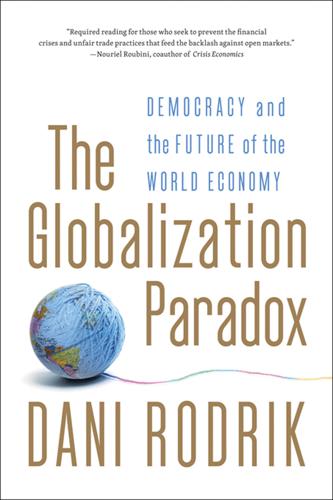
The Globalization Paradox: Democracy and the Future of the World Economy
by
Dani Rodrik
Published 23 Dec 2010
Banks and investment houses can simply move to jurisdictions with less onerous restrictions. Financial globalization in effect neutralizes differences in national regulations. This is what is known in the trade as “regulatory arbitrage,” a race to the bottom in finance.15 For this reason, a commitment to regulatory diversity has a very important corollary: the need for restrictions on global finance. The rules of the game have to allow for restrictions on cross-border finance designed to counter regulatory arbitrage and protect the integrity of national regulations. Governments should be able to keep banks and financial flows out—not for financial protectionism but to prevent the erosion of national regulations.
…
In an October 2009 interview with the Financial Times, the chairman of Barclays warned about adverse implications for Britain’s financial sector if “regulators are too rigorous in their implementation of a global crackdown on bonuses and capital requirements while other nations, such as the US, are lax.” “There is the real risk of regulatory arbitrage,” he added. “This is a global financial system. It is fungible. So I am very concerned there should be a level playing field.” See http://www.ft.com/cms/s/0/47fd0f82- bc23-11de-9426-00144feab49a.html. 16 These ideas were first outlined in Dani Rodrik, “A Plan B for Global Finance,” The Economist, March 12, 2009. 17 There is much debate among economists about whether a tax of this sort would also serve to curb destabilizing short-term speculation.
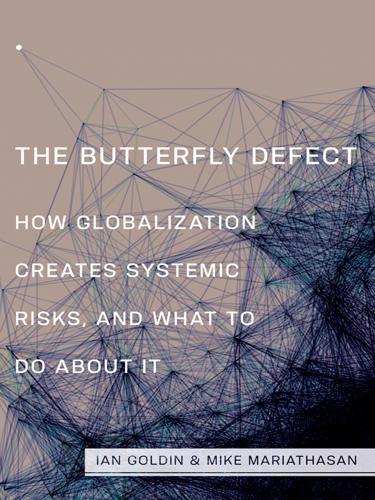
The Butterfly Defect: How Globalization Creates Systemic Risks, and What to Do About It
by
Ian Goldin
and
Mike Mariathasan
Published 15 Mar 2014
The total outstanding debt of the domestic financial sector in the United States increased from just over US$250 billion in the first quarter of 1975 to a peak value of over US$17 trillion during 2008.45 Like the national policy makers tasked to regulate them, banks had no concern for the global risks they helped to manufacture. In fact, it appears that regulatory regimes were effectively encouraging regulatory arbitrage. Financial institutions in the United States, for example, could essentially choose whether they wanted to be supervised by the Office of the Comptroller (designed for banks) or the weaker Office of Thrift Supervision (designed for savings and loans).46 Abetted by permissive legislation and regulation, the financial system became systemically risky.
…
Lesson 2: The financial system is complex, and thus must be analyzed systemically Our first lesson tells us that the existing regulation is inadequate; the second provides advice on how to begin rebuilding existing institutions. The financial crisis emphasized the need to adapt our fundamental understanding of economic networks to include the systemic complexities of the twenty-first century. Because we did not adequately understand the systemic vulnerabilities caused by increasing complexity, regulatory arbitrage grew outside the control of regulators. We now know that nodes of the financial network cannot be analyzed in an additive or linear manner. They cannot be isolated from their interactions with other links in the broader network. Systemic analysis must examine nodes, pathways, and the relationships between them, because “catastrophic changes in the overall state of a system can ultimately derive from how it is organized—from feedback mechanisms within it, and from linkages that are latent and often unrecognised.”86 All banks should be required to map their interdependencies in terms of the volume and frequency of their trade, and their net and gross exposures to their counterparties, not least in trading, should be fully understood by their audit and risk committees.
…
See extremist political parties Raduege, Harry D., Jr., 193, 194 Rama, Martin, 172 rare earth elements, 70–71, 71f RECs. See right-wing extremist crimes regulation: benefits of, 99; capture of agencies, 61; competition policy, 98, 122, 213; environmental, 140, 142–43; of infrastructure, 122; simplifying, 63, 67–68, 207; of supply chain management, 97–99. See also financial regulation regulatory arbitrage, 44, 52, 66, 207 Reinert, Kenneth, 168, 197 Renn, Ortwin, 25 research and development expenditures, 173f resilience: building, xiii, 4, 96, 195, 199, 205, 207–8, 212; definition of, 32; of ecosystem, 142; of energy supply networks, 109, 122; as goal, 2, 31, 199, 208, 219; of infrastructure, 121, 122; investments in, 213–14; of marine organisms, 95; pillars of, 64–65; of supply chains, 70, 80–81, 91, 94, 95–96, 213–14; threats to, 208; of transportation infrastructure, 122 Ricardian efficiency, 31, 33, 221n2 Ricardo, David, 2, 221n2 rightists.
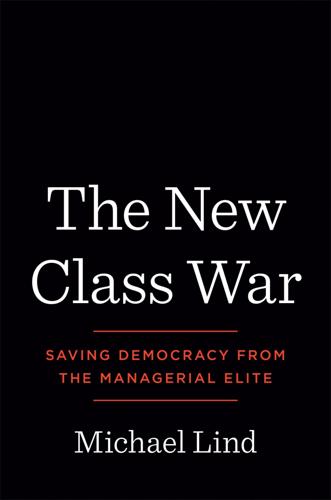
The New Class War: Saving Democracy From the Metropolitan Elite
by
Michael Lind
Published 20 Feb 2020
Henry, has estimated that roughly one-fourth of all the world’s wealth is held in tax havens.6 According to the Congressional Research Service, in 2015 US-based multinationals recorded 43 percent of their foreign earnings as taking place in five tax havens—Bermuda, Ireland, Luxembourg, the Netherlands, and Switzerland—which accounted for only 4 percent of their workforces.7 A single office building in Grand Cayman, named Ugland House, is the registered legal address of 18,557 companies.8 Even as they have exploited opportunities for international tax arbitrage, firms and lobbies in the post–Cold War era of globalization have also promoted regulatory arbitrage, the selective harmonization of laws and rules, when it has been in their interest to do so. In the second half of the twentieth century, successive rounds of negotiation under the auspices of the General Agreement on Tariffs and Trade (GATT) and, more recently, the World Trade Organization (WTO) effectively reduced most traditional tariff barriers.
…
Cross-class compromises among labor and business, for example, are pointless if businesses can unilaterally annul the contracts at any time by transferring operations to foreign workers or bringing foreign workers into the country to weaken or replace organized labor. The various cross-class settlements in the US and Europe from the 1940s to the 1970s would not have been possible if employers had been able to use large-scale tax and regulatory arbitrage and offshoring and access to high amounts of low-wage, non-union immigrant labor to escape the constraints imposed on them by “new deals” with organized labor and democratic national governments. For this reason, a world order that can support many countries organized along democratic pluralist lines will be quite different from a neoliberal world order in which most decision-making has been transferred from nation-states to supranational institutions or from national legislatures to national executive bureaucracies and judiciaries.
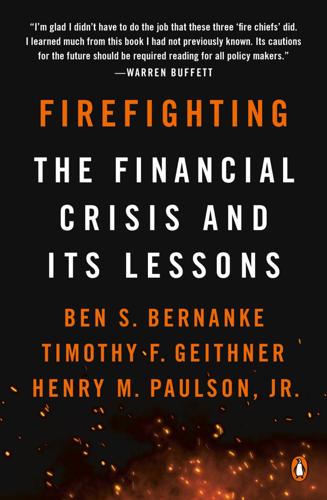
Firefighting
by
Ben S. Bernanke
,
Timothy F. Geithner
and
Henry M. Paulson, Jr.
Published 16 Apr 2019
But as Bagehot wrote, bluster rarely restores confidence: “Every banker knows that if he has to prove that he is worthy of credit, however good may be his arguments, in fact his credit is gone.” Countrywide was a case study in just about all the vulnerabilities in the system: overreliance on lower-quality mortgages, regulatory arbitrage, and especially runnable short-term financing. First some of its creditors stopped “rolling over” its commercial paper, forcing it to sell off assets to pay them back. Then on the night of August 15, it looked like the Bank of New York Mellon (BoNY), Countrywide’s clearing bank, would refuse to “unwind” its $45 billion repo book—that is, take temporary responsibility for Countrywide’s maturing obligations while new lenders were being lined up—which would have signaled its unwillingness to guarantee Countrywide’s stability.
…
And as the traumas of 2008 recede further into the distance, extended periods of stability could encourage renewed complacency, policymakers may be tempted to soften the post-crisis restrictions on risk taking, and markets could again get comfortable financing significant amounts of maturity transformation outside the perimeter of strict regulatory oversight. It’s worth remembering how much leveraged risk taking migrated away from banks before the crisis, even when capital requirements were much lower. Now the incentives to find new opportunities for regulatory arbitrage are even stronger, and regulation tends to fall behind the curve. It’s certainly conceivable that the world will get better at anticipating and preempting shocks. Central banks and international institutions have invested heavily in financial stability units that try to identify danger signs through “big data” illustrated with elaborate “heat maps,” and we wish them well.

The Shifts and the Shocks: What We've Learned--And Have Still to Learn--From the Financial Crisis
by
Martin Wolf
Published 24 Nov 2015
Improve standards for valuation of financial instruments. Make oversight of credit-rating agencies more effective. This indicates the immediate regulatory response to the crisis. This, in turn, reflected a consensus that almost everything had gone wrong: inadequate oversight; insufficient capital; regulatory arbitrage; irresponsible behaviour; misleading accounts; and misleading credit ratings. Subsequently, the authorities added yet more objectives: structural change (altering the way banks are allowed to organize themselves internally), stress tests (assessments of the ability of banks to survive extreme conditions), resolution regimes (new legal mechanisms for reorganizing the finances of failing financial institutions), changes to market structure (shifting trading from over-the-counter markets towards exchanges and clearing houses); and reforms of regulatory structures.
…
Moreover, with substantially higher equity, banks could take on more risk safely. Finally, the disaster came from what banks wrongly thought to be safe. Risk-weighting is extremely unreliable, because the samples from which the weights are derived are always too small or irrelevant. A similar objection arises over regulatory arbitrage: with high levels of equity imposed on banks, risk would migrate elsewhere, as happened prior to the crisis of 2007–08. It would be extremely important, therefore, to ensure that the balance sheets of significant financial institutions are fully consolidated. It would be equally important to ensure oversight over the system as a whole, to check where risks might be emerging.
…
Similarly, it will be important to impose constraints, in the form of charges or higher capital requirements, on extreme maturity transformation – that is the funding of ultra long-term and risky assets with short-term and safe liabilities. Much of this can, in principle, be done automatically. But there are some things that cannot be done in a mechanical way. One of the most obvious is watching over regulatory arbitrage: if risks are migrating out of the formal system, regulators will need to remain very alert. Unfortunately, this is not the only area where discretion will be necessary. Another is being aware of the systemic risks created by regulation, particularly the tendency to force regulated institutions to take the same risks in the same way and so become more homogeneous and thus more exposed to identical surprises.

The Crisis of Crowding: Quant Copycats, Ugly Models, and the New Crash Normal
by
Ludwig B. Chincarini
Published 29 Jul 2012
For example, longer maturity instruments are generally more risky than shorter maturity instruments, but Basel I doesn't account for this. The guidelines didn’t consider risk diversification. In Basel I, a pool of credit risks with well-diversified counterparty correlation has the same risk weight as one with heavily concentrated counterparties. Basel I let banks engage in regulatory arbitrage. Many instruments’ true measured risk was different than their assigned risk under the regulatory requirements, so banks might replace assets with lower true risk with assets carrying higher true risk. That gave a lower measured risk, according to the BIS ratio, but meant that banks could look healthier than they actually were.
…
Basel II’s risk weightings didn’t correlate entirely with the actual differential default rates of different type of bonds. For example, a typical B-rated bond’s default rate might be 100 times higher than that of a typical BBB-rated bond, yet the difference in credit weights was just 150% versus 100% (a difference of 1.5 times). This was an inconsistency and an opportunity for regulatory arbitrage. Although Basel II considered how hard it is for outsiders to monitor banks’ true risks, the standard reporting items it required were not sufficient to truly expose bank risks. This, in part, led to runs on banks that may have otherwise been healthy. Basel II let banks use a VaR structure with simplified minimum requirements.
…
Furthermore, they suggested that firms involved in CDOs should make sure they understand their risks.14 The committee missed this one.15 In the future, the Basel Committee and other regulators must be more ambitious, not so much in the number of rules they create, but perhaps by substituting forward-thinking talent for risk-averse bureaucrats. Regulators need stronger incentives to attract top talent, talent that is motivated to keep up as the markets innovate around specific guidelines. By reducing the risk weighting for mortgages and allowing banks a relatively high amount of leverage assisted by regulatory arbitrage, the Basel Committee encouraged banks to load up on mortgage-backed securities. That fueled the boom. When the mortgage market crashed and Lehman failed, the financial turbulence washed away the last intermediaries: the relative-value hedge funds. One of the casualties was JWMP, Meriwether’s new hedge fund.
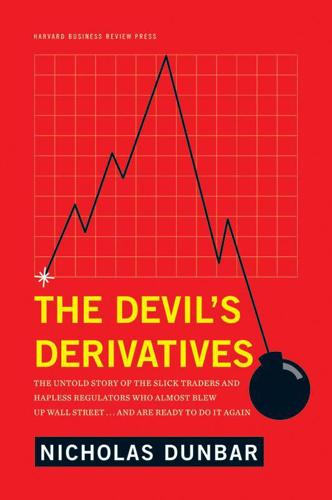
The Devil's Derivatives: The Untold Story of the Slick Traders and Hapless Regulators Who Almost Blew Up Wall Street . . . And Are Ready to Do It Again
by
Nicholas Dunbar
Published 11 Jul 2011
They would incorporate Michael Gordy’s correlation model, hard-coding into bank capital requirements the same kind of actuarial diversification benefit that underpinned investment-grade corporate CDO ratings. And banks would be able to feed into the model their “internal ratings” for loans on their balance sheets, with the idea that this would reduce the pressure for regulatory arbitrage. Banks that weren’t sophisticated enough to build these lending radar systems would be allowed to use old-fashioned credit ratings. The interminable meetings about Basel II around the world took their toll. In its rush to finalize the new rules, the committee adopted a few shortcuts, overruling its technical experts.
…
It was different from the way LB Kiel invested with UBS, where at least the Germans had a stated interest in getting exposure to the U.S. real estate market. Here, armed with a triple-A rating and the protection of a default swap, an investor had little incentive to investigate what they were buying. The larger European banks, such as Société Générale or UBS, were already buying triple-A-rated CDOs to cash in on this regulatory arbitrage and were asking dealers to sell them default swaps on their investments. The Goldman European sales force had a list of second-tier banking clients on the continent, firms like Germany’s cooperative savings bank Deutsche Zentral-Genossenschaftsbank, Switzerland’s Zürcher Kantonalbank, and Dutch agricultural lender Rabobank, and wanted to sell them an entire package of CDOs and default swaps.
…
However, the governance mechanism underlying private sector confidence in bank equity had been fatally undermined by the fall of 2008. Regulators initially hoped that they could seize banks and “shoot the hostage”—punish investors for lax governance. But the tricks of financial innovation and regulatory arbitrage meant that these investors held them hostage instead. That’s how they made themselves “too big to fail.” In the United States, the only regulator courageous enough to stick to the principles of the free market after Lehman collapsed was the FDIC’s Sheila Bair, who seized Washington Mutual bank, sold its deposits to J.P.

Markets, State, and People: Economics for Public Policy
by
Diane Coyle
Published 14 Jan 2020
However, there is another mechanism that can restore competition: technological disruption. This is exactly what is happening in many sectors of the economy now, from finance to travel accommodation to taxis. Some economists argue in a slightly disparaging way that new digital entrants to these markets are engaging in regulatory arbitrage, in other words, specifically picking the markets where there is heavy regulation. The implication is that the new disrupters are trying to evade well-intentioned regulations. The other way of looking at it is that they have spotted the most obvious opportunities to serve consumers better because the heavy regulatory burden favors the incumbent producers at least as much as the consumers it is supposedly protecting.
…
Prospect theory: A set of regularities about how people make decisions between alternative options that involve risk and uncertainty, involving reference point, risk aversion, and asymmetric preferences as between gains and losses. Public good: A good that is neither excludable nor rivalrous. That is, individuals cannot be excluded from its use nor does use by one individual reduce the benefit that another individual can gain from its consumption. Regulatory arbitrage: Seeking ways to legally circumvent costly regulations. Regulatory asset base (RAB): The assets owned by a utility company whose pricing and/or rate of return is governed by regulation. Regulatory capture: Regulation in the interests of the regulated industry. Rent seeking: The pursuit of gain (in excess of costs) by an individual or firm that has no economic welfare benefit for society.
…
See also inequality reference points, 178, 181, 190, 191 referenda, 181 regulation, 31, 55, 303; of cafés and restaurants in UK, 63; competition vs., 44, 46, 64, 68, 69, 72–73, 95, 241, 265–66; cost of, 274; cost-benefit analysis for, 305; counterproductive, 46, 95, 273–74; ebb and flow of, 99, 101–3, 134; of electric industry, 84, 113–14; as entry barrier, 63, 65–66; of financial sector, 3, 67–68, 69, 130, 264; of prices, 67, 112; of privatized industries, 111–16, 122; of profits, 113; of services, 64, 65, 67, 70; of trucking industry, 262; types of, 64, 67 regulatory arbitrage, 71 regulatory asset base (RAB), 114 regulatory capture, 68, 80, 256, 262–71 remedies, in competition policy, 60, 187–88 Renault, 63 renewable energy, 86–87, 88, 90 rent control, 67 rent seeking, 49, 226, 240–42, 262 Resolution Trust Corporation, 103 retirement, 21, 185, 186–87, 194, 206, 233, 252 revealed preference, 318–19, “right to repair” laws, 151 risk aversion, 178, 180, 181 risk compensation (Peltzman effect), 274, 275 risk homeostasis, 274 rival vs. non-rival goods, 12, 17, 25–29, 34, 142, 143, 149–50, 152 roads, 25, 26; financing of, 29, 278; private, 29, 30 robotics, 132 Rodrik, Dani, 126–27 Rolls Royce, 109 Roosevelt, Franklin D., 100, 204 Roosevelt, Theodore, 95 Rosen, Sherwin, 52 Roth, Al, 81–82 RPI-X formula, 112, 114, 121, 122 rules of the road, 292–93 Russia, 86, 196 safety standards, 45, 63, 65, 274, 325 Saint-Paul, Gilles, 197 sales taxes, 228 same-sex marriage, 153 Samuelson, Paul, 12 San Diego, 148–49 satisficing, 176 saving, 185, 187, 194, 210, 231, 233 scarcity, 161–62 Schelling, Thomas, 291–92 Schumpeter, Joseph, 20, 51, 126 Scotland, 166, 282, 284, 290 Seattle, 240 sea urchins, 148–49 second best theorem, 13–14, 19, 47, 303 Second World War, 21, 99, 107 Sen, Amartya, 40–41, 245 sensitivity analysis, 306 Sethi, Rajiv, 160–61 sewage, 22, 104 shaming, 147 shared space, 275 “shareholder value,” 223 Shenzhen, China, 157 shipbuilding, 102, 109 signaling, 163–64 Silicon Fen, 157 Silicon Valley, 157 Simon, Herbert, 176 Singapore, 278 “sin taxes,” 19, 25, 137, 152, 228, 272 skill premium, 220, 227 Skinner, B.
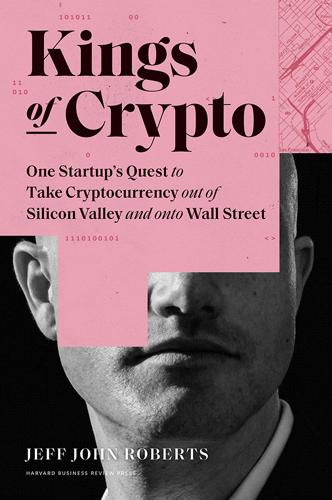
Kings of Crypto: One Startup's Quest to Take Cryptocurrency Out of Silicon Valley and Onto Wall Street
by
Jeff John Roberts
Published 15 Dec 2020
Lacking laws to regulate automobiles, governments in the early twentieth century did their best by adapting rules designed for horses and carriages. In the long run, of course, this proved impractical, and new laws were required to regulate cars. Coinbase has many of the same backers as Airbnb, Uber, and other Silicon Valley companies that built their business on what some call “regulatory arbitrage”—exploiting regulatory loopholes while also unleashing feel-good PR that includes fluffy phrases like “the sharing economy.” The strategy had worked well for those other startups, letting them grow big enough to fight every court battle and curry favor with politicians. But Brian knew that for the crypto industry to catch a break, it would need new laws.
…
C., 151 Patriot Act, 71 PayPal, 70–71, 206 Pelosi, Nancy, 130 Pierce, Brock, 58, 136 Pistor, Katharina, 206 pivots, 73 Pizza Day, 22 Polychain Capital, 96, 177, 223 Pomp, 208 Ponzi schemes, 141–142, 224 Popper, Nathaniel, 23 pop-up blockchain ventures, 136–138 Powell, Jesse, 97 pre-Cambrian explosion, 203 private keys, 9, 43 Project Libra, 205–207 prop shops, 192 Puertopia, 167 Qash, 138 QuarkChain, 138 Quorum, 212 R3 consortium, 104 RAPID process, 191 Reddit, 78, 151, 161 on the crash, 166 threats against Coinbase on, 158–159 Reeves, Ben, 8–9, 179 regulation, 49, 53–54, 71, 118, 121–131, 187 Binance and, 180, 209 DeFi and, 217–218 GDAX and, 114 ICOs and, 145–146 IRS and, 121–126 lobbying on, 129–131 safe harbors from, 128 regulatory arbitrage, 128–129 renminbi, 207 Ribbit Capital, 36–37 Ridenour, Andrew, 224 “The Rise and Fall of Bitcoin” (Wallace), 26 Rockdale, Texas, 171–172 Romero, Dan, 157, 195–196 safe harbors, 128 SAFT (Simple Agreement for Future Tokens), 146, 169–170 San Jose, California, 3–4 Santori, Marco, 169–170 Satoshi Dice, 127 Satoshi Roundtable, 80–81, 94 Schuler, Barry, 213–214 Schumpeter, Joseph, 214 Secret Service, 49 Securities and Exchange Commission (SEC), 145–146, 168–170 security threats, 78–80 Selkis, Ryan, 57, 58, 115–116 ShapeShift, 127 Shiller, Robert, 218 Shin, Laura, 76 shitcoins.

Unelected Power: The Quest for Legitimacy in Central Banking and the Regulatory State
by
Paul Tucker
Published 21 Apr 2018
To have any chance of success, any such regime could not be confined to businesses falling under the legal description of “bank.” There would not be much point in requiring de jure banks to hold 100 percent of their assets in government bonds if the economic substance of their current liquidity creation and liquidity insurance services could be replicated elsewhere, as they surely would be in a world of endemic regulatory arbitrage. The policy would need to extend to any form of intermediation that had the economic substance of banking, known today as shadow banking in its myriad shapes and sizes.12 It is worth pausing to absorb how radical this is. It rules out open-end mutual funds replacing banks as the economy’s core lenders to households and small businesses.
…
While for the time being leaving open the key policy decisions on how resilient the private part of the monetary system should be (chapter 21), this structural benchmark makes clear that constraints on and, thus, supervision of banking soundness are integral to an economy’s Money-Credit Constitution.28 Both are indeed conditions for the legitimacy of private banking itself, given the privilege of access to the lender of last resort and officially imposed barriers to entry. But, compared with twentieth-century doctrine, and given endemic regulatory arbitrage and legion financial-system interconnections, the focus would be on the economic substance of banking (maturity transformation, leverage, and credit intermediation) rather than solely on intermediaries having the legal form of “banks.” Challenges for Multiple-Mission Central Banks: Culture Quite apart from whether satisfactorily constrained purposes, objectives, and powers can be framed, a multiple-mission central bank entrusted with such a Money-Credit Constitution faces serious cultural and political challenges.
…
When, instead, the state writes rules to constrain intermediaries’ balance-sheet choices, regulated firms find ways of taking more risk than contemplated in the calibration of those rules; and unregulated intermediaries structure themselves so as to stay outside the scope of the rules even though the economic substance of their business is essentially the same. In other words, finance is a shape-shifter. Regulatory arbitrage is endemic, and the rule writers can end up chasing their tails. On this way of thinking, the Great Financial Crisis was waiting to happen. That it was triggered by the relatively small US subprime mortgage market reveals that the system’s resilience was wafer thin. It had been eaten away over the preceding years by the dynamics of the system itself.
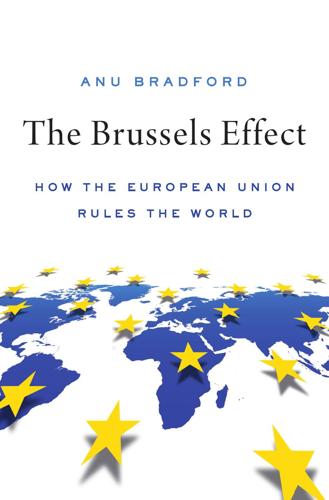
The Brussels Effect: How the European Union Rules the World
by
Anu Bradford
Published 14 Sep 2020
Such a transaction may be documented under New York law and supported by collateral that includes German Government bonds held in Euroclear (which is located in Belgium and operates under Belgian law).160 The absence of a requisite geographical link between a particular clearinghouse and the parties to the transaction means that the parties have a choice as to where to conduct their clearing activities.161 This high degree of elasticity suggests that regulators like the EU’s ESMA—the European Securities and Markets Authority—face a serious threat of regulatory arbitrage. The CCPs can migrate to less-burdensome jurisdictions without difficulty if the EU regulation hinders their ability to offer services to their clients on a competitive basis.162 Because there is nothing irreplaceable about the EU clearing markets that the CCPs lose by migrating to avoid the regulation, it is unlikely the EU would be able to promulgate overly stringent regulations and maintain an active market.
…
High standards for waste disposal are costly for domestic producers, and so producers gain little by disposing or recycling their waste in the EU.175 Waste is movable, and illegal transfers of hazardous waste remain common as producers have an incentive to evade stringent regulations by finding jurisdictions that do not enforce waste management standards.176 The discussion of the elastic versus inelastic nature of regulatory targets is closely related to the literature on regulatory races and jurisdictional competition.177 The early literature argued that globalization produces a “race to the bottom,” which leads states to lower their regulatory standards in order to attract firms and capital. According to this view, mobile capital exploits regulatory arbitrage and locates to a jurisdiction where it can earn the highest rate of return. These returns are higher when firms are not burdened by high corporate tax rates or stringent labor or environmental protection standards. Other states then respond by lowering their respective regulatory standards to avoid capital flight.178 The result of this race is, theoretically, regulatory convergence at the bottom.
…
Industries that produce consumer products, such as household goods or cosmetics, are common targets of such pressures. Consumer awareness is often further increased in the case of high-profile regulatory failures, or whenever a brand name is involved, as the public can relate to those products. In these instances, consumers and activists can easily call out the company for its efforts to exploit regulatory arbitrage and take advantage of less-burdensome obligations in some markets rather than others. Public campaigns by non-governmental organizations (NGOs) and other activists can effectively expose the double standards of multinational companies, if they, for example, continue to use or produce chemicals in the rest of the world that they no longer use in the EU.215 As a result, many cosmetics firms protect the reputation of their highly visible and valuable brands by conforming to European standards worldwide.216 While multiple pressures for standardization exist, many products or types of conduct remain divisible, limiting the Brussels Effect.

No One Would Listen: A True Financial Thriller
by
Harry Markopolos
Published 1 Mar 2010
If the SEC can’t coordinate two examinations within its own agency, there is little reason to believe that five separate agencies can successfully coordinate their examinations. It seems to me that the existence of so many financial regulators leaves gaping holes for financial predators to engage in what I called regulatory arbitrage. They find those regulatory gaps where no agency is looking or there is some question about which agency has the oversight responsibility, and they exploit them. I’ve seen corporations in which employees have two very different business cards. One card identifies them as a registered investment adviser, which falls under SEC regulation, while the other card has their bank title, which falls under the control of banking regulators.
…
If both the Fed and the SEC were to show up to search for fraud in the company’s pension accounts under management, that company could claim, “I’m sorry, but those are Employee Retirement Income Security Act (ERISA) accounts and they fall under the Department of Labor, so unfortunately you don’t have jurisdiction.” Obviously this structure allows firms to play regulators against each other, and literally to choose to be regulated by that agency least likely to pose any problems. The objective should be to combine regulatory functions into as few agencies as possible to prevent regulatory arbitrage, centralize command and control, ensure unity of effort, eliminate expensive duplication of effort, and minimize the number of regulators to whom American corporations must respond. It seems logical to me that one super-regulatory agency be formed, perhaps called the Financial Supervisory Authority (FSA).
…
Bernie Madoff got caught for the first time in 1992, but apparently none of the investigators after the turn of the century knew about it. Cross-functional teams of regulators from the SEC, the Fed, a national insurance regulator, and the Treasury or Department of Justice should be sent together on audits whenever possible to prevent regulatory arbitrage. The SEC, the Fed, and the national insurance regulator would be responsible for the inspections, while the Treasury or Department of Justice would be responsible for taking legal action against offenders. American businesses need and deserve a simple, easy-to-follow set of rules and regulations, and they deserve to have competent regulation.
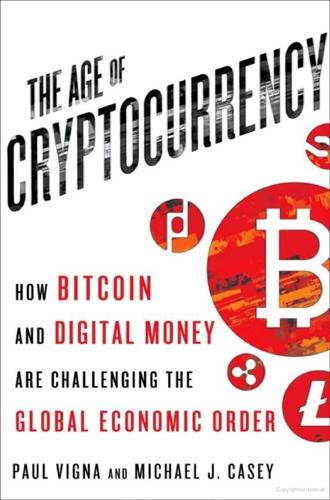
The Age of Cryptocurrency: How Bitcoin and Digital Money Are Challenging the Global Economic Order
by
Paul Vigna
and
Michael J. Casey
Published 27 Jan 2015
Indeed, as the elation generated by the FinCEN hearings in November gave way to dismay at New York’s initially ham-fisted handling of the BitLicense, some U.S.-initiated bitcoin businesses started making this happen. They moved. * * * It’s an axiom of finance that in a globalized economy, businesses will respond to regulation and tax burdens by moving operations to where they are less inhibiting. The phenomenon is known as regulatory arbitrage, because it allows businesses to leverage one location’s lax posture to extract an easier stance from another. In 2014, the problem became a political lightning rod in the United States as company after company engineered “inversion” mergers, acquiring competitors overseas and then co-opting their corporate headquarters to lower their U.S. corporate tax bill.
…
philanthropy Philippines Philo Pierce, Brock Piper pizza Plug and Play Tech Center Polis, Jared political donations Ponzi schemes Portugal poverty Powell, Jesse Prasad, Eswar Pretty Good Privacy printing press privacy private key proof of burn proof of stake proof of work property rights ProtonMail public key Purse QuickCoin Quigley, William Rabois, Keith Radar Capital Radtke, Autumn Raspberry Pi Ratha, Dilip Reagan, Ronald Realcoin Reddit Reed, John regulation regulatory arbitrage remittance business Renaissance revolutions Ripple Rivest, Ron Robbins, Scott Robinson, Scott Rolling Stone Roman Empire Rosen, Sholom Rossiello, Elizabeth Roszak, Matthew Roubini, Nouriel RSA Rulli, Francesco Russia Sacramento Kings Safaricom Saggers, Laura Salomon Smith Barney Salt Lake City San Francisco, Calif. 20Mission in SAP satellites SatoshiDice Schechter, Joshua Schmidt, Eric Schopenhauer, Arthur Schumer, Chuck Sclavos, Stratton scrypt Sean’s Outpost SecondMarket Secure Electronic Transactions (SET) Securities and Exchange Commission (SEC) securities contracts seigniorage Selkis, Ryan Serrano, Sebastian sharing economy Shasky Calvery, Jennifer Shavers, Trendon Shiller, Robert Shrem, Charlie Silbert, Barry Silent Circle Silicon Valley accelerator programs Silicon Valley Silk Road Simpson, David Singapore Sirer, Emin Gün Skype smart contracts smartphones smart property Smith, Adam Smith, Peter Snowden, Edward societal changes Softcard Spain spam bitcoin and Square stagflation Stanford, Leland Starbucks Starfish and the Spider, The: The Unstoppable Power of Leaderless Organizations (Brafman and Beckstrom) staters Stein, Josh Stellar Stockholm Stockman, Steve Strauss, Levi StrictlyVC Stripe Summers, Larry Sutter, John Sutter’s Mill Swarm Sweden Switzerland Szabo, Nick Taaki, Amir Tally Capital Target taxes capital-gains regulatory arbitrage and taxi services technology(ies) bitcoin as disruptive Tel Aviv Tencent Holdings Terpin, Michael TerraMiner terrorism Tesla Texas 37Coins Thornburg, Jonathan Time Times (London) T-Mobile Toronto trade Tradehill Tradenet transaction fees bitcoin and Travelers Group Treasury Department, U.S.
…
philanthropy Philippines Philo Pierce, Brock Piper pizza Plug and Play Tech Center Polis, Jared political donations Ponzi schemes Portugal poverty Powell, Jesse Prasad, Eswar Pretty Good Privacy printing press privacy private key proof of burn proof of stake proof of work property rights ProtonMail public key Purse QuickCoin Quigley, William Rabois, Keith Radar Capital Radtke, Autumn Raspberry Pi Ratha, Dilip Reagan, Ronald Realcoin Reddit Reed, John regulation regulatory arbitrage remittance business Renaissance revolutions Ripple Rivest, Ron Robbins, Scott Robinson, Scott Rolling Stone Roman Empire Rosen, Sholom Rossiello, Elizabeth Roszak, Matthew Roubini, Nouriel RSA Rulli, Francesco Russia Sacramento Kings Safaricom Saggers, Laura Salomon Smith Barney Salt Lake City San Francisco, Calif. 20Mission in SAP satellites SatoshiDice Schechter, Joshua Schmidt, Eric Schopenhauer, Arthur Schumer, Chuck Sclavos, Stratton scrypt Sean’s Outpost SecondMarket Secure Electronic Transactions (SET) Securities and Exchange Commission (SEC) securities contracts seigniorage Selkis, Ryan Serrano, Sebastian sharing economy Shasky Calvery, Jennifer Shavers, Trendon Shiller, Robert Shrem, Charlie Silbert, Barry Silent Circle Silicon Valley accelerator programs Silicon Valley Silk Road Simpson, David Singapore Sirer, Emin Gün Skype smart contracts smartphones smart property Smith, Adam Smith, Peter Snowden, Edward societal changes Softcard Spain spam bitcoin and Square stagflation Stanford, Leland Starbucks Starfish and the Spider, The: The Unstoppable Power of Leaderless Organizations (Brafman and Beckstrom) staters Stein, Josh Stellar Stockholm Stockman, Steve Strauss, Levi StrictlyVC Stripe Summers, Larry Sutter, John Sutter’s Mill Swarm Sweden Switzerland Szabo, Nick Taaki, Amir Tally Capital Target taxes capital-gains regulatory arbitrage and taxi services technology(ies) bitcoin as disruptive Tel Aviv Tencent Holdings Terpin, Michael TerraMiner terrorism Tesla Texas 37Coins Thornburg, Jonathan Time Times (London) T-Mobile Toronto trade Tradehill Tradenet transaction fees bitcoin and Travelers Group Treasury Department, U.S.
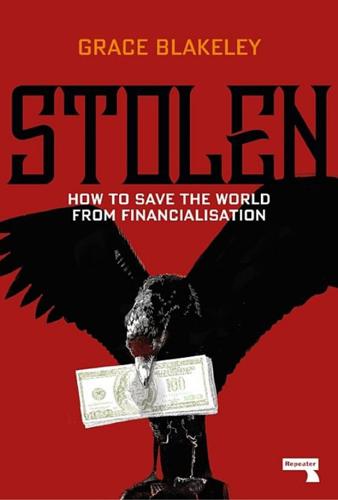
Stolen: How to Save the World From Financialisation
by
Grace Blakeley
Published 9 Sep 2019
Mortgages and MBSs were judged to be low-risk, so banks had to hold less capital to insure themselves against potential losses. Banks worked out that they could increase their profits under Basel by holding low levels of capital against risky mortgages that provided them with high returns. This “regulatory arbitrage”— opportunities for profit-seeking created by regulation — encouraged banks to hold securities based on mortgage debt, even though they were often far riskier than many other assets. Capital requirements also fostered the growth of the shadow banking system by encouraging the banks to undertake many activities “off balance sheet” in the less-regulated shadow banking sector.
…
Non-bank systemically-important financial institutions (SIFIs) would be subject to capital requirements, leverage ratios, liquidity requirements, and transparency measures. A similar approach should be taken in the UK. Any rigid regulation in this area would be evaded by financial institutions, who have historically found ingenious ways to undertake regulatory arbitrage. As such — and this should be a general principle for macroprudential regulation — the rules should be laid out in as broad terms as possible and implemented based on regulators’ and central bankers’ monitoring of risk as it arises and their interpretation of their mandate. As Andy Haldane, the Chief Economist of the Bank of England, argued in a 2012 speech, “complex environments often… call for simple decision rules… because these rules are more robust to ignorance”.9 Such an approach would, however, require regulatory institutions to be subject to continuous democratic and diverse expert scrutiny.

The Greed Merchants: How the Investment Banks Exploited the System
by
Philip Augar
Published 20 Apr 2005
Self-regulatory organizations, notably the New York Stock Exchange and the National Association of Securities Dealers, also have significant responsibilities over areas of the industry. With so many overlapping and at times competing agencies, there is room for financial services firms to exploit the gaps between the agencies, a practice known as regulatory arbitrage. Even allowing for a confused structure and the ‘hands off’ messages that came out of government, it is hard to escape the conclusion that the US regulators should have seen the problems of the eighties and nineties coming and done more to prevent them. It was obvious that when negotiated commissions were introduced in 1975 and the advisory and underwriting businesses took off in the eighties, the potential conflict of interest that had always existed in the integrated investment banking model would come alive.
…
Rothschild 31–2 narcissism, organizational 198 NASDAQ index 12, 13 National Association of Securities Dealers (NASD) 185, 188, 201 National City Bank 6–7 Neuer Markt 73–4 New York Stock Exchange 187–8, 201, 205 Office of Federal Home Loan Oversight 80 Office of Risk Assessment 205 O’Kelly, Gene 200–201 oligopoly 102 O’Neal, Stanley 23, 61, 135–6 Ong, Belita 11–12 options, definition of 77 output of investment banks, evaluation of 63–5, 85, 100 over-the-counter derivatives 77–8, 81, 89 Paine Webber 45 Parmalat 84, 161 Partnoy, Frank 41, 181–2, 209 Paulson, Henry 197, 206 Pecora, Judge Ferdinand 85 Perella, Joseph 43 perfect competition 102 Pitt, Harvey 187 Plender, John 208 PNC Financial 81–2 political connections 181–4, 209 prices 86–7, 97–8, 100–101, 172 advisory work 90–91, 94–5, 96–7 basis point pricing 91–3 collusion 93–8, 100–103 derivatives 88–9 and fund managers 192 negotiation, lack of 176–8, 179 under oligopoly 102 pre-announcement movements, shares 122 share trading 87–8, 89 strategic pricing 94–5, 98 underwriting 89–90, 92, 94–6 prime brokerage 133 private equity 132 privatization, UK 181 product development 131–4 product range 33 profits 51–2, 61–2 and compensation 60, 99–100 diverting attention from 95 falling, implications of 209–10 identification of 192–3 outlook for 209–10 return on equity (ROE) 54–7, 58 source of 166–7 programme trades 87, 88 proprietary trading 114–19, 192, 206, 211–12 prospect theory 180 Prudential-Bache Securities 11 Prudential plc 82 Public Company Accounting Oversight Board 200 Purcell, Philip 14, 22, 23–4, 39, 138, 205–6 Quattrone, Frank 19–20, 137–8, 151 Qwest 82 Racketeer-Influenced Corrupt Organizations law (RICO) 10, 26 recession, post-2001 13–14 Reed, John 189 regulation 7–8, 20, 81, 183, 185–90, 199 and bundling 193 integrated structure, failure to reform 22, 23, 24 and lobbying 209 recent 19, 200–203, 205, 209–10 regulatory arbitrage 185 relationship banking, demise of 35–6, 152–3, 170 research 66–7, 68, 69, 140–41, 145, 146 independent 69, 201–2, 204 internal position of 196 see also analysts Restoring Trust: Investment in the Twenty-First Century 194 returns 49–51, 61–2, 99–100, 165–6 and analysts’ recommendations 67 compensation 58–60, 99–100, 165–6 and cost of equity capital 57–8 excess, source of 166–7 falling, implications of 209–10 margins 52–3, 88–9, 119 outlook for 209–10 profits 51–2 return on equity (ROE) 54–7, 58, 61 risk management 111–13, 125–31 risk premium 55, 56 Ritter, Professor Jay 71, 89–90, 94–5, 179 Rogers, John 68 Roosevelt, President Franklin D. 7 Roye, Paul 191 Rubin, Robert 42, 182–3 salaries see compensation Salomon Brothers 11, 34, 37, 41–2, 137, 148–9 cynicism, culture of 152, 153 losses, 1994 128 and WorldCom 121 Salomon Smith Barney 17, 41, 150–51, 195 Sanford Bernstein 32 Sants, Hector 170–71, 189 Sarbanes-Oxley Act (2002) 19, 200–201, 209 Sassoon, James 184 Saunders, Ernest 11 scandals see corruption/malpractice Schapiro, Mary 188 Schroders 42 Securities and Exchange Commission (SEC) 7, 19, 21, 23, 185–7, 205 Securities Industry Association 183 securitization 78 securitized bonds 46 settlements paid by investment banks 19, 20, 23, 24, 38, 39, 42, 43, 201, 207 share prices, pre-announcement movements 122 shareholder activism 203–4 shareholder value 8–9, 63, 169 shareholders, and corporate control 163–4, 203–4 Sherman Anti-Trust Act (1890) 5–6, 8 Smith, Adam 86, 171–2 Smith, David 171 Smith, Professor Roy 195 Smith Barney 40, 41 Southern Peru Copper Corp 91 special purpose entities/vehicles (SPEs/SPVs) 78, 82, 83 ‘specialists’ 115–16 ‘spinning’ 17–18, 43, 137, 160 Spitzer, Eliot 15, 65–6 inquiry headed by 15, 16–17, 21, 22, 24, 38, 200 whispering campaign against 23 status of investment banking 4–5, 12, 18 Stevenson, Lord 175 Stiglitz, Joseph 12, 64, 176, 182–3 stock exchanges, structural reform 212 stock markets bull market mentality 3–5, 12–13, 64, 65, 71–3 performance of 63–4 public interest in 12 stock options 176 new accounting rules 201, 209 Stonehill, Charles 147–8 structural reform 211–15 Sudarsanam, Professor Sudi 76 Summers, Lawrence 63 swaps 77, 132 Sykes, Sir Richard 210 taxation, 401K amendment 9 team ethos 124–5 Thain, John 188, 209 Time Warner 13, 14, 76–7 Tomlinson, Lindsay 194 transaction banking 152–3, 170 transaction costs 67 Travelers 41 treasurers (company), and derivatives 80 Treasury bond scandal 41–2 ‘Triple Play’ 121 Truman, President Harry S. 7 trustees, mutual/pension funds 191–2 UBS 31, 32, 37 underwriting fees 89–90, 92, 94–6 value-at-risk (VAR) 117, 129–31 volatility of markets, and performance of investment banks 24–5, 51–2, 57–8 Wall Street 9 Wall Street Crash 6–7 Walter, Professor Ingo 195 Wasserman, Ed 18 Wasserstein, Bruce 31, 43, 77 Weill, Sanford 195 Welch, Jack 45 Wertheim 147 Wheat, Allen 59, 137 WorldCom 17, 121, 150–51, 161 Zumwinkel, Klaus 178–9
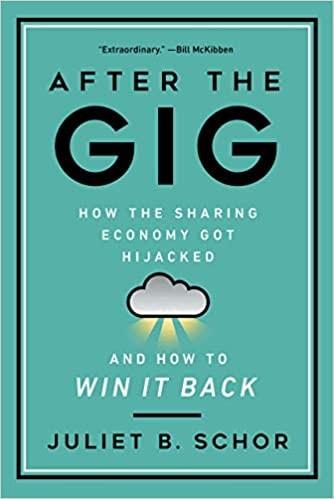
After the Gig: How the Sharing Economy Got Hijacked and How to Win It Back
by
Juliet Schor
,
William Attwood-Charles
and
Mehmet Cansoy
Published 15 Mar 2020
In municipalities and courts around the country advocates are attempting to apply existing regulations to the platforms and to push for new rules and precedents. Big Sharing companies have spent a decade evading these public protections. Legal scholars and others have argued that their actions amount to “regulatory arbitrage,” or the ability to capitalize on loopholes or selective enforcement of the law.24 This strategy is an essential feature of the business model. By not bearing the burdens of compliance, such as the obligation to serve disabled customers or pay minimum wages, these firms gain an unfair competitive advantage.
…
See also nonprofits; platform earning; sharing economy; access to, 45–46, 84; and capitalism, 13, 30, 39; capital/labor-intensive, 73; destigmatization, 99–101; downside of, 11; economics of, 31–34; and entrepreneurship, 109; exiting, 46–47; idealist discourse, 24, 27–31; ideology, 24; and investment, 35–36; monopolistic, 151, 158; origin stories, 24–25; outsourcing, 33; as parasites, 71–72; participation, 93, 95; peer-to-peer (P2P) structure, 26, 111–14, 191–93; personalized exchange, 28–29; prehistory, 33; and racial discrimination, 84–85; and regulation, 34; and scaling, 34; social interaction, 55, 78, 111–14, 128; as two-sided markets, 31; types of, 26–27; value proposition, 124, 143–47; and worker satisfaction, 11, 13 Plenitude: The New Economics of True Wealth, 1 poor door, 64–65 Postmates, 10–11, 46, 61, 74 Poteat, Emilie DuBois, 126, 178, 181 precarious work, 70, 110 precarity, 60, 70–71 preemption, 157 pricing strategies, 56–57 product-service economy, 192 proprietary data, 159–60 public transportation, 117–18 “putting-out” system, 76 racial discrimination, 82–91, 141–42 ratings systems, 31–32; crowdsourced, 47, 192; and deactivation, 92; and dependent earners, 63–64; and discrimination, 89–92 Ravenelle, Alexandrea, 13, 58, 88, 193–94 Raw Deal, 12 rebound effects, 116 redlining, 92 regulation, 34, 150, 152–62; consumer protections, 154–55; European, 152–54; lodging, 160; monopolies, 151, 158; platform opposition to, 156, 161–62; and proprietary data, 159–60; regulatory arbitrage, 155–56; ride-hailing, 152–53, 161; U.S. debate on, 154–58 Reich, Michael, 193 RelayRides, 26 Remix, 191 rental housing, 105–7, 160 rental services, 193 RenttheRunway, 112 reputational data, 89–90, 192 resale market, 120 research methods, 177–84; conferences, 178; data, 178; ethnography, 178; for-profit cases, 181–84; interviews, 177; nonprofit cases, 178–80; recruitment, 177 residential segregation, 92–95 retreat from control, 43, 76–81 Rich, 59 Richardson, Lizzie, 193 ride-hailing, 26, 31, 34–37.
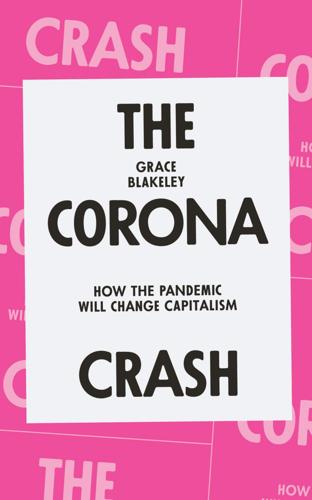
The Corona Crash: How the Pandemic Will Change Capitalism
by
Grace Blakeley
Published 14 Oct 2020
Some use anti-competitive practices designed to penalise their rivals, most use various accounting mechanisms to avoid taxation in order to boost their profits, and almost all have cosy relationships with local and national governments, which often allow them to access preferential treatment denied to their competitors.15 States stood by as these companies became ever more powerful, often providing them with subsidies, turning a blind eye to regulatory arbitrage and competing with one another to attract their investment. As the coronavirus pandemic has deepened, the big tech companies have emerged as some of the greatest beneficiaries. Microsoft, Apple, Alphabet, Amazon and Facebook now make up a fifth of the entire value of the S&P 500 Index, and Jeff Bezos is on track to become the world’s first trillionaire.16 Part of the reason these companies’ stocks are doing so well is that their business models, to varying extents, render them immune from the impact of the virus-induced lockdown.
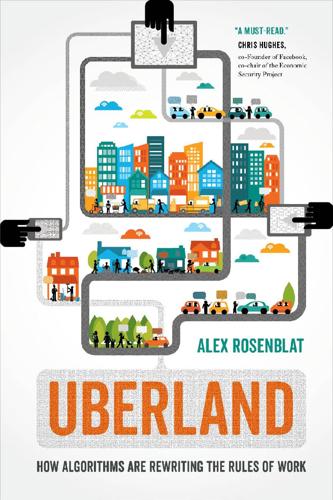
Uberland: How Algorithms Are Rewriting the Rules of Work
by
Alex Rosenblat
Published 22 Oct 2018
These tech giants reason that the technology services they offer to achieve a familiar goal (like moving a passenger from A to B in a taxi) are qualitatively different from the actions that these laws were designed to govern. This effectively renders laws archaic, to some degree, and this pattern among Silicon Valley tech companies is often termed “disruption.” Law scholar Julia Tomassetti argues that the sharing economy amounts to regulatory arbitrage (an attempt to circumvent unfavorable regulation).61 THE MYTH OF GLAMORIZED MILLENNIAL LABOR Uber has carefully crafted its recruitment messages to invite potential drivers to work for a global technology company, rather than a newfangled taxi service. Its marketing is almost exclusively organized around the archetypical image of the “millennial.”
…
When presented with the idea that drivers are customers, he said, “The fact that you screen drivers, select them, the fact that you, Uber, sets [sic] the fare, not the drivers, the fact that the company could not operate and exist as a company and make money without drivers, you think that does not establish, among other things, that these drivers serve Uber?”38 Uber’s shifts between the language of labor and the language of consumers evoke its earlier tactics of regulatory arbitrage. There’s no “sharing” in the sharing economy it has come to represent. In practice, drivers are hardly “entrepreneurs” or true partners with Uber, even though the company calls them “Uber Driver-Partners”; drivers are not suspended or fired, they are “deactivated.” This conflation of workers with customers is clearly cause for disbelief.
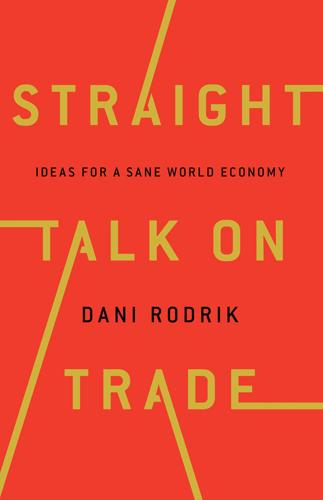
Straight Talk on Trade: Ideas for a Sane World Economy
by
Dani Rodrik
Published 8 Oct 2017
Although it is not a perfect substitute for local sourcing, international trade does allow a company to serve a high-tax market from a low-tax jurisdiction. The problem becomes particularly acute when the arrangement in question has a “solidarity” motive and is explicitly redistributive (as in many tax examples). In such cases, it becomes desirable to prevent “regulatory arbitrage” even if it means tightening controls at the border. What Do Global Citizens Do? Let’s circle back to Teresa May’s comments at the beginning of this chapter. What does it even mean to be a “global citizen”? The Oxford English Dictionary defines “citizen” as “a legally recognized subject or national of a state or commonwealth.”
…
Some countries will opt for greater stability, imposing tough capital and liquidity requirements on their banks, while others may favor greater innovation and pursue a lighter regulatory touch. Free capital mobility poses a severe difficulty here. Borrowers and lenders can resort to cross-border financial flows to evade domestic controls and erode the integrity of regulatory standards at home. To prevent such regulatory arbitrage, domestic regulators may be forced to take measures against financial transactions originating from jurisdictions with more lax regulations. A world in which finance is regulated in diverse ways by different sovereigns requires some traffic rules on managing the interface of national regulations.
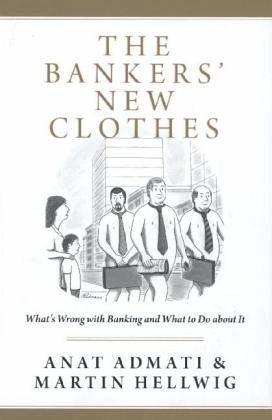
The Bankers' New Clothes: What's Wrong With Banking and What to Do About It
by
Anat Admati
and
Martin Hellwig
Published 15 Feb 2013
If Kate makes risky investments with the funds, then of course how she will end up doing depends on how these investments turn out, but clearly, having no money in the house and experiencing only the upside from it is a highly beneficial situation for Kate. 10. This represents a recent increase in the eligible amount. Placing a higher amount under deposit insurance is easy if one divides it across multiple accounts or multiple banks. There are even deposit brokers who would help in this process. Kane (2012b) describes a regulatory arbitrage created by a deposit-swap market in which one can place practically any amount under deposit insurance. Malysheva and Walter (2010) discuss the expansion of the safety net in the United States in recent years. 11. See Acharya et al. (2010) and ASC (2012). 12. For more information on the use of implicit guarantees and recapitalization, see Laeven and Valencia (2010, 2012). 13.
…
As discussed in Chapter 4 (see note 27) and Chapter 10 (see note 46), money market mutual funds were developed in the 1970s in order to get around the regulation of commercial banks and savings banks. These funds are regulated by the SEC, which means that they are very lightly regulated relative to banks and operate with few restrictions. The concern with shadow banking and so-called regulatory arbitrage can be traced to the establishment of money market funds. Since that time, regulators have feared that regulating banks might lead to the displacement of regulated banks with new unregulated institutions. The problem of enforcement is particularly challenging in the United States because the regulatory system is highly fragmented.
…
See also mortgage(s) recessions (downturns): of 2008–2009, 5, 11, 233n19; associated with financial crises, history of, 233n19; duration of recovery after, 172, 304n16; fears of, in delay of regulation, 171–72; and risks of lending, 56 referees, home-team bias of, 205, 326n59 Regalia, Martin A., 248n2 regulation. See banking regulation Regulation Q, 53, 251n26, 299n46 regulatory arbitrage, 288n10, 308n47, 335n53. See also shadow banking regulatory capture, 203–7; causes of, 204–5; definition of, 194; effects of, 206; example of, 319n9; in financial crisis of 2007-2009, 204; revolving door and, 204–5, 325n56. See also lobbying rehypothecation, 301n55, 317n88 Reichsbank, in banking crisis of 1931, 272n45, 294n14 Reilly, David, 266n13 Reinhart, Carmen M., 65, 239n1, 244n3, 249n15, 258n22, 258n24, 276n6, 295n16, 296n26, 297n38, 322n34, 323n37, 331n19 repo (repurchase) agreements: in bankruptcy, exceptions for, 164, 227, 236n35, 300n54, 301n55, 336n57; collateral in, 164, 300n54, 301n55; definition of, 164; runs, 300n54 repurchase agreements.
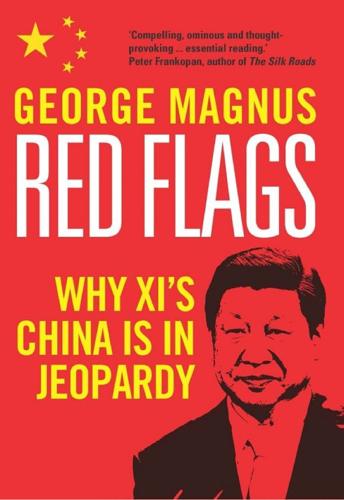
Red Flags: Why Xi's China Is in Jeopardy
by
George Magnus
Published 10 Sep 2018
Until 2017, at least, the authorities paid insufficient attention to the balkanisation of the financial system, the spread of unregulated or weakly regulated financial institutions, or the funding that became increasingly dependent on riskier and more leveraged instruments and products. This spawned ‘regulatory arbitrage’ on an industrial scale, or, put another way, the exploitation of loopholes in financial regulation leading to increasingly risky behaviour by financial companies and market participants, poor regulation and risks to financial stability. Repo markets and wealth management products Repo, or repurchase, markets came to play a central role in the build-up of financial leverage in the Western world in the 2000s, and were instrumental in transmitting the shocks of the financial crisis.
…
In March 2018, at the National People’s Congress, the merger of the Banking and Insurance Regulatory Commissions under the State Council was announced as part of a sweeping restructuring of government ministries and agencies. This move was designed to streamline financial regulation and curb the opportunities for regulatory arbitrage, leaving the merged commissions with operational responsibilities, and referring the power to initiate laws and regulations, as well as macro-prudential oversight, to the People’s Bank of China. Yi Gang, the deputy to Governor Zhou Xiaochuan, was promoted to governor, and Guo Shuqing, the CBRC head, was also made Party secretary of the People’s Bank, and Yi’s boss.

The City
by
Tony Norfield
But in October 1969 the US Federal Reserve imposed a reserve requirement at 10 per cent on extra eurodollar borrowings (not on the whole amount) as a means of limiting this new source of funds for US banks.38 Nevertheless, since the euromarket continued to grow very rapidly after 1969, this suggests that reserve requirements were not a significant restraining factor, even if the earlier lack of reserve requirements might have been a spur to their growth at that point.39 The euromarkets clearly created room for ‘regulatory arbitrage’, in other words, for making deals that got around the rules imposed by different central banks and governments. But it was an arbitrage game that could only be played by those already working in a big financial market, one where dealing costs were not so high that they eliminated the benefit of engaging in these transactions.
…
See also financial power; economic power price fixing 118, 120–1 privatisation 120 production 77, 78, 86 productive capital 90 productivity 69, 148–9, 150 profit and profitability 21–2, 77, 129–39 American rate of 153–9, 154, 157 amount 149, 150 comparing 136–9 and costs 149–50 drivers 135–6 equalising 137 and financial crisis 135 and financial returns 135 and fixed assets 137 global 156 and interest rates 156–7 investment location 152 and labour costs 155–6 leverage 130–6, 133, 134 measurement 153 moribund 159–60 and productivity 148–9, 150 rate of 130, 147–50 restoration of 152, 154–5 return on equity (RoE) 129–30 role of financial assets 137 sources 129, 139–47, 143 volatility 131 property bubbles 151 proprietary positions 79 quantitative easing 65, 152, 157–9 Radcliffe Report 35 Reagan, Ronald 65 real economy, the 5 reform agenda 214 regulation 9, 215–16 American 39–40 state 115–16 Regulation Q (US) 39, 48 regulatory arbitrage 42 rentiers 98 repo borrowing 46 return on assets 132 return on equity (RoE) 129–30, 132 returns, distribution of 102–3 revenue-earning assets, bank creation of 137, 137–8 Rich, Marc 122 risk 130 rivalry 28 Robin Hood tax 215–16 Rolling Stone 161 Rome, Treaty of 33, 57, 58, 69 Royal Bank of Scotland 4 Royal Dutch/Shell Group plc 3, 112–13, 220 Rubin, Robert 16 Russia 18, 93, 106, 107, 109, 113–14, 154, 171, 216, 222, 223, 224 SABMiller 121 Samsung 118, 120, 121–2 sanctions 113–14, 172, 216 San Francisco 37 Saudi Arabia 55–6, 109, 208, 220 Scotland, independence referendum 217–18 Second World War 26–8, 151 seigniorage 43, 163–6 Shanghai 18, 182, 222–3 shareholders, power 88 share issues 179 shares 139 value 86–7 share swaps 179, 199 Sharpe ratio 131 Shell 114 Shenzhen 18 Sherman Antitrust Act (US) 119 short-term money-market instruments 79, 144 Simon, William 55–6 Singapore 177–8, 179, 206, 209 Snowden, Edward 59 South Africa 18, 222, 224 South Korea 101, 120 Soviet Union 29, 30 Spain 65 speculation, madcap 135–6 stamp duty 48 Standard Chartered 225 Standard Oil 119 state, the and capitalism 111–15 and finance 115–17 and imperialism 119 imperialist 126 power 115, 126 sterling collapse, 1992 62 convertibility 31 devaluation, 1949 31 Sterling Area, the 31–3, 35, 58 stock exchange prices 182 stock market crash, 1987 xi, 68 stock swaps 179 Suez crisis 27–8, 60 supply-chain links 77 surplus labour 149 surplus value 90, 140 appropriation of 173–4 creation of 149 global system 161 and securities 144–6 transfer of 97 Sveriges Riksbank 116 Sweden 4, 9, 116 Swiss Bankers’ Association 176 Switzerland 4, 9, 165, 175–6, 178, 184 Taibbi, Matt 161 Taiwan 18 Tanzanian groundnut scheme 33 tariffs 114 tax and taxation 114, 215–16 tax avoidance 48 tax havens 2, 22, 71, 184, 193, 209, 211 Temasek 177 Thailand 101 Thatcher, Margaret xi, 63, 65, 69 Tokyo 49, 50 Toyota 121 trade gap 188 trade patterns 6, 60–1, 61 trading revenues 146–7 Treasury, the 48 UK Independence Party 219 unemployment 53 Unilever 112–13 United Kingdom anti-monopoly policies 119–21 appropriation of value 187 balance of payments 187, 188, 200, 203 bank assets and liabilities 4, 141–4, 143 bank borrowing 206–8 bank deficits 206–10 bank lending 208–10 bank leverage data 134 banking centre status 50 banks 4, 116, 134, 191–7, 192, 194, 196, 206–10, 214 borrowing 201–2, 204–5 China policy 225–6, 227 colonial exploitation 30–3 colonialism 30–1 credit rating 204–5 current account balance 188–90, 189, 190 current account deficit 200, 202, 211, 217 current account surplus 33, 34, 69 debt costs 204–5 decolonisation 30 direct investment returns 202–3, 203 domination 162 earnings from financial services 43–4 economic power 2 economic weakness 35 Empire protectionism 30, 33 equity holdings 102–3 equity market capitalisation and turnover 181, 182 and the EU 16–17, 21 European policy 53–4 FDI 107, 200, 205 financial account 197–200, 199 financial machine 22 financial market share 70–1, 71 financial operations 185–212 financial policy 14, 44–7, 65–70 financial position, 1950s 34–5 financial power 2, 3, 64–5 financial sector benefits 185 financial sector employment 186 financial sector tax revenues 186 financial services assets location 205–6, 207 financial services exports 174 financial services revenues 190–7, 192, 194, 196 financial wealth 103 foreign direct investments 3, 66 foreign exchange trading 109 foreign exchange turnover 193–5, 194 foreign investment income 189–90 freedom of action 63, 64 GDP 4, 106, 107, 155–6 Gowan’s analysis 11–12 Helleiner’s analysis 13–14, 70 Hilferding’s analysis 93, 94 imperialism 7–8, 186, 228 imperial strategy 59–65 inflows of foreign money-capital 69 international banking index 108 international banking position 191–2, 192 international banking share 70–1, 71 international financial revenues 10 international investment position 200–1, 201 investment income 200–4, 203 investment income, 1899–1913 98 invisible empire 7–8 joins EEC 34, 57–8 Lend-Lease debts 29, 36 liabilities 204–5, 206–7 military interventions 1–2 military spending 110 monetary policy 66 OPEC’s investment in 57 pension fund assets 103 quantitative easing 158–9 relationship with America 21, 27–8, 29–30, 36, 59, 73 relationship with Europe 62 return to gold standard 23–6 seigniorage 165–6 status 1–2, 3–4, 27–8, 30, 30–5, 52, 73–4, 110, 111, 196, 204, 210, 213, 214, 216–17, 227–8 tax havens 193 trade currency pricing 163 trade deficit 44, 188–9, 189, 211 trade gap 22 trade pattern 60–1, 61 wealth distribution 102–3 United Nations 3–4, 123 United Nations Security Council 109 United States of America 2, 205 aftermath of First World War 24 anti-monopoly policies 119–21 attitude to Bretton Woods 31 bank Eurodollar deposits 41–2 bank leverage data 132–3 bank regulation 36 banking system fragmented 40 banks 132–3, 193 capital flows from 38 capital markets 55 China policy 226, 227 Chinese challenge to 17–18 corporate rate of profit 153–5, 154 cost of living 155 credit bubble 156 credit restrictions 42 current account deficit 167–8 domestic market 28 domination 3, 7, 10, 11, 26–7, 35, 162, 183–4, 223 equity holdings 102 equity market capitalisation and turnover 181–2, 181 exorbitant privilege 166–9 FDI 107 Federal Reserve System 40 financial business split 37 and financial crises 12 financial market regulations 39–40 financial policy 11, 65–6, 67–8 financial power 6, 11–12, 14–15, 55, 170–3, 183 financial services exports 173–4 financial services revenues 190 financial system 36–40 foreign direct investments 3, 42 foreign exchange trading 108–9, 109 foreign exchange turnover 194, 194 foreign investment revenues 9–10 foreign investment stock position 169 foreign securities market 48 GDP 106, 107 gold reserves 39 gold standard abandoned 54 Gowan’s analysis 11–12 hegemony 21, 105 Helleiner’s analysis 12–14 Hilferding’s analysis 93 imperial advantage 164 imperialism 12, 14–15, 166–9 interbank money market 46 interest rates 168 international banking index 108 international banking position 192, 192 international banking share 50, 71, 71 international capital outflows 66 investment income 169 leverage ratios 131 military spending 109 millionaires 99 mortgage-backed securities 140 mortgage debt 56 Panitch and Gindin’s analysis 14–17 privileged position 22 quantitative easing 157–8 rate of profit 153–9, 154, 157 relationship with Britain 21, 27–8, 29–30, 36, 59, 73 relationship with Saudi Arabia 55–6 role in the world economy 12–14, 14–17 role of 111 seigniorage 163–5 status 105, 110, 111 UK-based lending 209–10 UK debt 29 working-class living standards 154–5 United Technologies 121 unsecured loans, interbank 46 US–China Economic and Security Review Commission 18 US Commerce Department 56 US dollar, the 6, 15, 30 Chinese foreign exchange reserves 167 domination 55, 164–5 exchange rate 68, 163 exorbitant privilege 166–9 financial power 170–3 global role 170–3 glut 38–9 gold standard abandoned 54 imperial advantage 164 privileged position 22 as reserve currency of choice 166 status 35, 108–9 UK colonies surplus 33 US Federal Reserve 14, 41, 42, 44, 116, 157–8, 157, 172–3, 185 US Treasury 14 value xi–xiii appropriation of 187 creation 76, 104, 150–1 extraction 77, 104 relations 90 surplus 90, 97, 144–5, 149 transfer of 164–5 Vietnam War 54, 105 Vodafone Group plc 3, 180 Volcker, Paul 156 Volkswagen 121 wages 77, 144, 148, 152, 155–6 Wal-Mart 77, 155 waste, elimination of 152 wealth concentration of 91–2 distribution 102–3 fictitious capital 88, 147 UK household 103 West, Admiral Lord 1–2, 3, 4 West African Marketing Boards 32 WhatsApp 91 Wilson, Harold 32 Wolf, Martin 214 working-class, living standards 154–5 working hours 38 World Bank 14, 27, 29, 73, 223 world economy 2, 9–10 American role 14–17 world hierarchy 105–11, 111 world monetary system 10 ‘zero hour’ contracts 152 zero sum games 145 Zuckerberg, Mark 91

MegaThreats: Ten Dangerous Trends That Imperil Our Future, and How to Survive Them
by
Nouriel Roubini
Published 17 Oct 2022
In this ideal world, dreamers forget that DeFi firms have developers and backers that, like banks, seek profits using practices that warrant regulation and supervision, not a Wild West of unregulated chaos. Free-riding DeFi flouts the supervision and regulation that traditional financial institutions face, a practice called regulatory arbitrage. Banks need to do proper AML (Anti Money Laundering) and KYC (Know Your Customer) tracking. Both impose hefty compliance costs. This is unfair competition that also invites financing of illegal activities. Would DeFi survive if properly regulated and subject to the same compliance costs as traditional financial institutions?
…
Don’t unbuckle your seat belt yet. Even the smoothest ride promises scary twists and turns.28 In 2021 Dan Berkovitz of the Commodity Futures Trading Commission (CFTC) stressed the shortcomings of DeFi: it is most certainly illegal, as it flouts securities laws; it lacks investor protections; it preys on regulatory arbitrage against regulated financial institutions because it doesn’t pay the compliance and regulatory costs that regulated institutions do. And it doesn’t provide the essential services that financial intermediaries provide: “There is no intermediary to monitor markets for fraud and manipulation, prevent money laundering, safeguard deposited funds, ensure counterparty risk performance, or make customers whole when processes fail.”29 Moreover, decentralization is more myth than reality in crypto land.
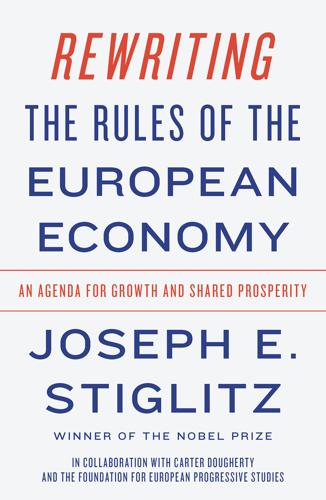
Rewriting the Rules of the European Economy: An Agenda for Growth and Shared Prosperity
by
Joseph E. Stiglitz
Published 28 Jan 2020
Europe should promote stronger macroeconomic cooperation, based on the tenets that we outlined in Part I of this book. In finance especially, more concerted action is crucial, and here, too, Europe must take the lead. In the absence of such coordination, there is a risk of what is known as regulatory arbitrage, when countries try to attract banks by offering a less regulated environment (often dressed up as “business friendly”). Given the high degree of interdependence among global financial institutions, reflected in the speed with which problems in American markets translated into problems elsewhere, cooperation in financial regulation is crucial.
…
See also 2008 financial crisis countercyclical measures for, 33–34 measuring impacts of, 49–50 post-crisis, and health, 242 post-crisis, and housing, 229 redistribution, strengthening, 223–24 regulation(s) of banking sector, 84, 85–86, 161–63, 180–81 of executive compensation, 140–41 financial, need for, 20, 159, 161–63 of global financial institutions, 309–10 impacting economic ecology, 124 impacting society, 149–50 of information, 133 of internet-based service providers, 269–70 macro-prudential, 92–94 of mergers and acquisitions, 134 of mortgage lending, 233 of private schools, 228–29 of shadow banking system, 172–73 of trade agreements, 317–18 regulatory arbitrage, 309 regulatory harmonization, 317–18 regulatory structures, improving, 161–74 repo market, 173 Report of the European Commission’s High-level Expert Group on Bank Structural Reform, 167 research and development ECB research agenda, 83 government role in, 23, 100, 312 intellectual property rights and, 144 small company revenues, 42 underinvestment in, 108–10, 109 retirement benefits (European).

Extreme Money: Masters of the Universe and the Cult of Risk
by
Satyajit Das
Published 14 Oct 2011
They were required to hold cash or securities that could be readily sold to raise funds to meet the needs of depositors wanting to take out their money. The eighteenth-century English playwright Susannah Centlivre observed that: “Tis my opinion every man cheats in his own way, and he is only honest who is not discovered.” Regulatory arbitrage—the process of exploiting gaps in bank regulations—evolved into a business model. Banks reduced the amount of expensive capital, transferring loans, investments, and trading into a network of unregulated off-balance-sheet vehicles, which did not need to hold as much capital as the bank itself.
…
As one commentator put it: “it’s no longer an act, it’s word processors gone mad.”12 In 2010, 500 central bankers and regulators from 27 nations produced Basel III, 440 pages of new rules. The frenetic activity recalled Italian author Giuseppe di Lampedusa: “everything must change so that everything can stay the same.” As before, the revised rules were susceptible to being manipulated, through regulatory arbitrage. Many of the rules had little to do with improving regulation, instead focusing on familiar regulatory turf wars or battles for power, staff and budgets, as well as settling of old scores. Regulatory initiatives did little to address the quality of regulators and the acuity of oversight or enforcement of breaches of the law.
…
See also currency Quayle, Dan, 95 Queen, 157 Queen Elizabeth, 278 R Rabbit Is Rich, 363 Racketeer Influenced and Corrupt Organizations (RICO) Act, 150 Radaker, Byron, 134 Rain Man, 153, 166 rainbows, 211 Raines, Sylvain, 309 Rains, Claude, 77 Rajaratnam, Raj, 244 Ralphie’s Funds, 191, 204 Ramones, The, 79 RAND Corporation, 35 Rand, Ayn, 294, 296 random walks, 118 rands, 21 Range Rover, 346 Ranieri, Lewis, 170 Rapid American, 143 Rappaport, Alfred, 124 Raskob, John, 97 Ratergate (2008), 285 ratings agencies, 141 bonds, 282-285 CDOs, 285 credit, 282 Rational Man, 119 Rattner, Steven, 274 Raynes, Sylvain R., 196 re-re-securitizations, 191 re-securitizations, 191 Reagan, Ronald, 65-66, 97, 101, 298, 364 real estate, 179-182 adjusted rate mortgages (ARMs), 183-184 reals, 21 recessions, 350 recovery, 359-360 rates, 171 recruitment of finance candidates, 310 recycling in Japan, 39 Red Force, 264 Redline, 186 Reed, John, 71, 75 reflexivity, 327 Regnault, Jules, 118 regulations, 81 banks, 65-67 Basel 1, 74 Basel 2, 200 central banks, 279-281 self-regulating markets, 102 synthetic securitization, 176 regulators preparation for financial crises, 264-278 understanding of securitization, 282 regulatory arbitrage, 75 Reid, Harry, 299 relative value funds arb (arbitrage) market inefficiencies, 242 religious prohibitions on usuries, 32 remote risk of loss, 220 renminbi, 21 rentiers, 33 repackaging corporate debt, 173 repos (repurchase agreements), 288 reserves banking, 32 gold, 30 resources, financial news, 89-99 restructures, corporations, 57 retirement, 20, 46, 48 Japan, 49-50 pension plans, 50 self-funded savings, 180 returns benchmarking, 123 on capital, 57 hedge funds, 243-244 private equity, 162 Revco drug stores, 150 Reykjavík, Iceland, 275 as a financial center, 84 Reynolds, Glenn, 283 Reynolds/Tube, 58 Rhodesia.
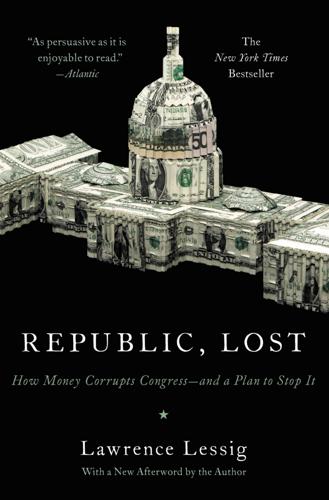
Republic, Lost: How Money Corrupts Congress--And a Plan to Stop It
by
Lawrence Lessig
Published 4 Oct 2011
For not only would secrecy weaken the efficiency of the market as a whole (since the public signal of price helps discipline a market),26 but it would also lead to a kind of regulatory arbitrage: because regulation is costly, deals that were subject to the New Deal regulations would be recast into a form that could evade those regulations. Indeed, that’s what happened: financial instruments that were “economically equivalent to many other financial instruments”27 were substituted for those “other financial instruments,” because unlike those “others,” they were unregulated. As the Financial Crisis Inquiry Commission concluded, “[G]iven these circumstances, regulatory arbitrage worked as it always does: the markets shifted to the lowest-cost, least-regulated havens.”28 Evading regulation has its own value.
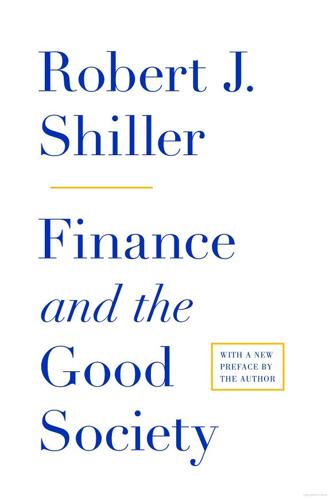
Finance and the Good Society
by
Robert J. Shiller
Published 1 Jan 2012
And that is the problem that so often plagues nance. We can build beautiful models and theories about what kinds of nancial products to provide, but thanks to human foibles we are always vulnerable to bubbles and their bursting. The enormous growth of mortgage securitization in the United States also arose in part from regulatory arbitrage, that is, from businesses trying to please the regulators as e ciently as possible, and from bureaucrats who were not thinking deeply about the rules they were enforcing. Ever since the Basel I agreement in 1988, which set the rst important international bank regulatory standards, banks around the world have been subject to capital requirements that are tied by a formula to their so-called risk-weighted assets.
…
See also housing Reconstruction Finance Corporation, 109, 216 Recourse Rule, 55 Redleaf, Andrew, 29 reforms: broadening ownership, 214–18; debt, 158; dispersal of control, 210–11; of financial system, 114, 157, 177, 235; of fiscal policy, 116; increasing access to legal and financial advice, 85–86; information availability, 235; lobbying, 92–93; in tax treatment of contributions, 202–3, 254n19 registered representatives, 80, 97 regulation, financial: bubble prevention, 184–85; capital requirements, 40, 55, 155, 163, 244n3 (Chapter 3); consumer protection, 9, 154; Dodd-Frank Act, 23, 43, 51, 114, 154, 184, 217; of executive compensation, 22–23; G20 statements, 184; improving, 157; of monopolies, 217; need for, 9, 238; securities regulations, 35–36, 46, 80, 96–97, 161; of shadow banking, 42–43 regulations: enforcement, 94; growth of, 95; occupational licensing, 95; positive effects, 210. See also self-regulatory organizations regulators: civil servants, 95; criticism of, 94–96; errors, 96, 184–85; importance, 94; industry capture of, 95; motives, 96, 98–99, 225; public perceptions, 97–98; roles, 99; slow adoption of change, 148 regulatory arbitrage, 55 Reinhart, Carmen, 2 religions: callings, 141; caste systems and, 232–33; legal systems, 83, 157; negative views of debt, 157; Shakers, 120 religious organizations, contributions to, 205 reparations payments, 156–57, 221–22 repurchase agreements, 43, 239, 244n7 Reshef, Ariell, 189 residential mortgage–backed securities (RMBSs), 51, 52–55.

Traders, Guns & Money: Knowns and Unknowns in the Dazzling World of Derivatives
by
Satyajit Das
Published 15 Nov 2006
The cash settled and off-balance nature of derivatives poses another problem. You can now simulate an investment without actually ever owning anything. Our wheat speculator could create the same effect as buying wheat by using wheat forwards. He didn’t actually ever need to own the wheat. It is deliciously ambiguous, opening up a whole new frontier – ‘reg arb’ (regulatory arbitrage). It is illegal for you to own shares in other countries because of limits on foreign ownership. You just do a forward on the share or an equity swap. You have shares in a company that has done a hugely successful IPO (initial public offering). Can’t sell your shares as you have agreed not to sell for 12 months?
…
However, the text is different. 6 ‘What Worries Warren’ (3 March 2003) Fortune. 13_INDEX.QXD 17/2/06 4:44 pm Page 325 Index accounting rules 139, 221, 228, 257 Accounting Standards Board 33 accrual accounting 139 active fund management 111 actuaries 107–10, 205, 289 Advance Corporation Tax 242 agency business 123–4, 129 agency theory 117 airline profits 140–1 Alaska 319 Allen, Woody 20 Allied Irish Bank 143 Allied Lyons 98 alternative investment strategies 112, 308 American Express 291 analysts, role of 62–4 anchor effect 136 Anderson, Rolf 92–4 annuities 204–5 ANZ Bank 277 Aquinas, Thomas 137 arbitrage 33, 38–40, 99, 114, 137–8, 171–2, 245–8, 253–5, 290, 293–6 arbitration 307 Argentina 45 arithmophobia 177 ‘armpit theory’ 303 Armstrong World Industries 274 arrears assets 225 Ashanti Goldfields 97–8, 114 Asian financial crisis (1997) 4, 9, 44–5, 115, 144, 166, 172, 207, 235, 245, 252, 310, 319 asset consultants 115–17, 281 ‘asset growth’ strategy 255 asset swaps 230–2 assets under management (AUM) 113–4, 117 assignment of loans 267–8 AT&T 275 attribution of earnings 148 auditors 144 Australia 222–4, 254–5, 261–2 back office functions 65–6 back-to-back loans 35, 40 backwardation 96 Banca Popolare di Intra 298 Bank of America 298, 303 Bank of International Settlements 50–1, 281 Bank of Japan 220 Bankers’ Trust (BT) 59, 72, 101–2, 149, 217–18, 232, 268–71, 298, 301, 319 banking regulations 155, 159, 162, 164, 281, 286, 288 banking services 34; see also commercial banks; investment banks bankruptcy 276–7 Banque Paribas 37–8, 232 Barclays Bank 121–2, 297–8 13_INDEX.QXD 17/2/06 326 4:44 pm Page 326 Index Baring, Peter 151 Baring Brothers 51, 143, 151–2, 155 ‘Basel 2’ proposal 159 basis risk 28, 42, 274 Bear Stearns 173 bearer eurodollar collateralized securities (BECS) 231–3 ‘behavioural finance’ 136 Berkshire Hathaway 19 Bermudan options 205, 227 Bernstein, Peter 167 binomial option pricing model 196 Bismarck, Otto von 108 Black, Fischer 22, 42, 160, 185, 189–90, 193, 195, 197, 209, 215 Black–Scholes formula for option pricing 22, 185, 194–5 Black–Scholes–Merton model 160, 189–93, 196–7 ‘black swan’ hypothesis 130 Blair, Tony 223 Bogle, John 116 Bohr, Niels 122 Bond, Sir John 148 ‘bond floor’ concept 251–4 bonding 75–6, 168, 181 bonuses 146–51, 244, 262, 284–5 Brady Commission 203 brand awareness and brand equity 124, 236 Brazil 302 Bretton Woods system 33 bribery 80, 303 British Sky Broadcasting (BSB) 247–8 Brittain, Alfred 72 broad index secured trust offerings (BISTROs) 284–5 brokers 69, 309 Brown, Robert 161 bubbles 210, 310, 319 Buconero 299 Buffet, Warren 12, 19–20, 50, 110–11, 136, 173, 246, 316 business process reorganization 72 business risk 159 Business Week 130 buy-backs 249 ‘call’ options 25, 90, 99, 101, 131, 190, 196 callable bonds 227–9, 256 capital asset pricing model (CAPM) 111 capital flow 30 capital guarantees 257–8 capital structure arbitrage 296 Capote, Truman 87 carbon trading 320 ‘carry cost’ model 188 ‘carry’ trades 131–3, 171 cash accounting 139 catastrophe bonds 212, 320 caveat emptor principle 27, 272 Cayman Islands 233–4 Cazenove (company) 152 CDO2 292 Cemex 249–50 chaos theory 209, 312 Chase Manhattan Bank 143, 299 Chicago Board Options Exchange 195 Chicago Board of Trade (CBOT) 25–6, 34 chief risk officers 177 China 23–5, 276, 302–4 China Club, Hong Kong 318 Chinese walls 249, 261, 280 chrematophobia 177 Citibank and Citigroup 37–8, 43, 71, 79, 94, 134–5, 149, 174, 238–9 Citron, Robert 124–5, 212–17 client relationships 58–9 Clinton, Bill 223 Coats, Craig 168–9 collateral requirements 215–16 collateralized bond obligations (CBOs) 282 collateralized debt obligations (CDOs) 45, 282–99 13_INDEX.QXD 17/2/06 4:44 pm Page 327 Index collateralized fund obligations (CFOs) 292 collateralized loan obligations (CLOs) 283–5, 288 commercial banks 265–7 commoditization 236 commodity collateralized obligations (CCOs) 292 commodity prices 304 Commonwealth Bank of Australia 255 compliance officers 65 computer systems 54, 155, 197–8 concentration risk 271, 287 conferences with clients 59 confidence levels 164 confidentiality 226 Conseco 279–80 contagion crises 291 contango 96 contingent conversion convertibles (co-cos) 257 contingent payment convertibles (co-pays) 257 Continental Illinois 34 ‘convergence’ trading 170 convertible bonds 250–60 correlations 163–6, 294–5; see also default correlations corruption 303 CORVUS 297 Cox, John 196–7 credit cycle 291 credit default swaps (CDSs) 271–84, 293, 299 credit derivatives 129, 150, 265–72, 282, 295, 299–300 Credit Derivatives Market Practices Committee 273, 275, 280–1 credit models 294, 296 credit ratings 256–7, 270, 287–8, 297–8, 304 credit reserves 140 credit risk 158, 265–74, 281–95, 299 327 credit spreads 114, 172–5, 296 Credit Suisse 70, 106, 167 credit trading 293–5 CRH Capital 309 critical events 164–6 Croesus 137 cross-ruffing 142 cubic splines 189 currency options 98, 218, 319 custom repackaged asset vehicles (CRAVEs) 233 daily earning at risk (DEAR) concept 160 Daiwa Bank 142 Daiwa Europe 277 Danish Oil and Natural Gas 296 data scrubbing 142 dealers, work of 87–8, 124–8, 133, 167, 206, 229–37, 262, 295–6; see also traders ‘death swap’ strategy 110 decentralization 72 decision-making, scientific 182 default correlations 270–1 defaults 277–9, 287, 291, 293, 296, 299 DEFCON scale 156–7 ‘Delta 1’ options 243 delta hedging 42, 200 Deming, W.E. 98, 101 Denmark 38 deregulation, financial 34 derivatives trading 5–6, 12–14, 18–72, 79, 88–9, 99–115, 123–31, 139–41, 150, 153, 155, 175, 184–9, 206–8, 211–14, 217–19, 230, 233, 257, 262–3, 307, 316, 319–20; see also equity derivatives Derman, Emmanuel 185, 198–9 Deutsche Bank 70, 104, 150, 247–8, 274, 277 devaluations 80–1, 89, 203–4, 319 13_INDEX.QXD 17/2/06 4:44 pm Page 328 328 Index dilution of share capital 241 DINKs 313 Disney Corporation 91–8 diversification 72, 110–11, 166, 299 dividend yield 243 ‘Dr Evil’ trade 135 dollar premium 35 downsizing 73 Drexel Burnham Lambert (DBL) 282 dual currency bonds 220–3; see also reverse dual currency bonds earthquakes, bonds linked to 212 efficient markets hypothesis 22, 31, 111, 203 electronic trading 126–30, 134 ‘embeddos’ 218 emerging markets 3–4, 44, 115, 132–3, 142, 212, 226, 297 Enron 54, 142, 250, 298 enterprise risk management (ERM) 176 equity capital management 249 equity collateralized obligations (ECOs) 292 equity derivatives 241–2, 246–9, 257–62 equity index 137–8 equity investment, retail market in 258–9 equity investors’ risk 286–8 equity options 253–4 equity swaps 247–8 euro currency 171, 206, 237 European Bank for Reconstruction and Development 297 European currency units 93 European Union 247–8 Exchange Rate Mechanism, European 204 exchangeable bonds 260 expatriate postings 81–2 expert witnesses 310–12 extrapolation 189, 205 extreme value theory 166 fads of management science 72–4 ‘fairway bonds’ 225 Fama, Eugene 22, 111, 194 ‘fat tail’ events 163–4 Federal Accounting Standards Board 266 Federal Home Loans Bank 213 Federal National Mortgage Association 213 Federal Reserve Bank 20, 173 Federal Reserve Board 132 ‘Ferraris’ 232 financial engineering 228, 230, 233, 249–50, 262, 269 Financial Services Authority (FSA), Japan 106, 238 Financial Services Authority (FSA), UK 15, 135 firewalls 235–6 firing of staff 84–5 First Interstate Ltd 34–5 ‘flat’ organizations 72 ‘flat’ positions 159 floaters 231–2; see also inverse floaters ‘flow’ trading 60–1, 129 Ford Motors 282, 296 forecasting 135–6, 190 forward contracts 24–33, 90, 97, 124, 131, 188 fugu fish 239 fund management 109–17, 286, 300 futures see forward contracts Galbraith, John Kenneth 121 gamma risk 200–2, 294 Gauss, Carl Friedrich 160–2 General Motors 279, 296 General Reinsurance 20 geometric Brownian motion (GBM) 161 Ghana 98 Gibson Greeting Cards 44 Glass-Steagall Act 34 gold borrowings 132 13_INDEX.QXD 17/2/06 4:44 pm Page 329 Index gold sales 97, 137 Goldman Sachs 34, 71, 93, 150, 173, 185 ‘golfing holiday bonds’ 224 Greenspan, Alan 6, 9, 19–21, 29, 43, 47, 50, 53, 62, 132, 159, 170, 215, 223, 308 Greenwich NatWest 298 Gross, Bill 19 Guangdong International Trust and Investment Corporation (GITIC) 276–7 guaranteed annuity option (GAO) contracts 204–5 Gutenfreund, John 168–9 gyosei shido 106 Haghani, Victor 168 Hamanaka, Yasuo 142 Hamburgische Landesbank 297 Hammersmith and Fulham, London Borough of 66–7 ‘hara-kiri’ swaps 39 Hartley, L.P. 163 Hawkins, Greg 168 ‘heaven and hell’ bonds 218 hedge funds 44, 88–9, 113–14, 167, 170–5, 200–2, 206, 253–4, 262–3, 282, 292, 296, 300, 308–9 hedge ratio 264 hedging 24–8, 31, 38–42, 60, 87–100, 184, 195–200, 205–7, 214, 221, 229, 252, 269, 281, 293–4, 310 Heisenberg, Werner 122 ‘hell bonds’ 218 Herman, Clement (‘Crem’) 45–9, 77, 84, 309 Herodotus 137, 178 high net worth individuals (HNWIs) 237–8, 286 Hilibrand, Lawrence 168 Hill Samuel 231–2 329 The Hitchhiker’s Guide to the Galaxy 189 Homer, Sidney 184 Hong Kong 9, 303–4 ‘hot tubbing’ 311–12 HSBC Bank 148 HSH Nordbank 297–8 Hudson, Kevin 102 Hufschmid, Hans 77–8 IBM 36, 218, 260 ICI 34 Iguchi, Toshihude 142 incubators 309 independent valuation 142 indexed currency option notes (ICONs) 218 India 302 Indonesia 5, 9, 19, 26, 55, 80–2, 105, 146, 219–20, 252, 305 initial public offerings 33, 64, 261 inside information and insider trading 133, 241, 248–9 insurance companies 107–10, 117, 119, 150, 192–3, 204–5, 221, 223, 282, 286, 300; see also reinsurance companies insurance law 272 Intel 260 intellectual property in financial products 226 Intercontinental Hotels Group (IHG) 285–6 International Accounting Standards 33 International Securities Market Association 106 International Swap Dealers Association (ISDA) 273, 275, 279, 281 Internet stock and the Internet boom 64, 112, 259, 261, 310, 319 interpolation of interest rates 141–2, 189 inverse floaters 46–51, 213–16, 225, 232–3 13_INDEX.QXD 17/2/06 4:44 pm Page 330 330 Index investment banks 34–8, 62, 64, 67, 71, 127–8, 172, 198, 206, 216–17, 234, 265–7, 298, 309 investment managers 43–4 investment styles 111–14 irrational decisions 136 Italy 106–7 Ito’s Lemma 194 Japan 39, 43, 82–3, 92, 94, 98–9, 101, 106, 132, 142, 145–6, 157, 212, 217–25, 228, 269–70 Jensen, Michael 117 Jett, Joseph 143 JP Morgan (company) 72, 150, 152, 160, 162, 249–50, 268–9, 284–5, 299; see also Morgan Guaranty junk bonds 231, 279, 282, 291, 296–7 JWM Associates 175 Kahneman, Daniel 136 Kaplanis, Costas 174 Kassouf, Sheen 253 Kaufman, Henry 62 Kerkorian, Kirk 296 Keynes, J.M. 167, 175, 198 Keynesianism 5 Kidder Peabody 143 Kleinwort Benson 40 Korea 9, 226, 278 Kozeny, Viktor 121 Krasker, William 168 Kreiger, Andy 319 Kyoto Protocol 320 Lavin, Jack 102 law of large numbers 192 Leeson, Nick 51, 131, 143, 151 legal opinions 47, 219–20, 235, 273–4 Leibowitz, Martin 184 Leland, Hayne 42, 202 Lend Lease Corporation 261–2 leptokurtic conditions 163 leverage 31–2, 48–50, 54, 99, 102–3, 114, 131–2, 171–5, 213–14, 247, 270–3, 291, 295, 305, 308 Lewis, Kenneth 303 Lewis, Michael 77–8 life insurance 204–5 Lintner, John 111 liquidity options 175 liquidity risk 158, 173 litigation 297–8 Ljunggren, Bernt 38–40 London Inter-Bank Offered Rate (LIBOR) 6, 37 ‘long first coupon’ strategy 39 Long Term Capital Management (LTCM) 44, 51, 62, 77–8, 84, 114, 166–75, 187, 206, 210, 215–18, 263–4, 309–10 Long Term Credit Bank of Japan 94 LOR (company) 202 Louisiana Purchase 319 low exercise price options (LEPOs) 261 Maastricht Treaty and criteria 106–7 McLuhan, Marshall 134 McNamara, Robert 182 macro-economic indicators, derivatives linked to 319 Mahathir Mohammed 31 Malaysia 9 management consultants 72–3 Manchester United 152 mandatory convertibles 255 Marakanond, Rerngchai 302 margin calls 97–8, 175 ‘market neutral’ investment strategy 114 market risk 158, 173, 265 marketable eurodollar collateralized securities (MECS) 232 Markowitz, Harry 110 mark-to-market accounting 10, 100, 139–41, 145, 150, 174, 215–16, 228, 244, 266, 292, 295, 298 Marx, Groucho 24, 57, 67, 117, 308 13_INDEX.QXD 17/2/06 4:44 pm Page 331 Index mathematics applied to financial instruments 209–10; see also ‘quants’ matrix structures 72 Meckling, Herbert 117 Melamed, Leo 34, 211 merchant banks 38 Meriwether, John 167–9, 172–5 Merrill Lynch 124, 150, 217, 232 Merton, Robert 22, 42, 168–70, 175, 185, 189–90, 193–7, 210 Messier, Marie 247 Metallgesellschaft 95–7 Mexico 44 mezzanine finance 285–8, 291–7 MG Refining and Marketing 95–8, 114 Microsoft 53 Mill, Stuart 130 Miller, Merton 22, 101, 194 Milliken, Michael 282 Ministry of Finance, Japan 222 misogyny 75–7 mis-selling 238, 297–8 Mitchell, Edison 70 Mitchell & Butler 275–6 models financial 42–3, 141–2, 163–4, 173–5, 181–4, 189, 198–9, 205–10 of business processes 73–5 see also credit models Modest, David 168 momentum investment 111 monetization 260–1 monopolies in financial trading 124 moral hazard 151, 280, 291 Morgan Guaranty 37–8, 221, 232 Morgan Stanley 76, 150 mortgage-backed securities (MBSs) 282–3 Moscow, City of 277 moves of staff between firms 150, 244 Mozer, Paul 169 Mullins, David 168–70 multi-skilling 73 331 Mumbai 3 Murdoch, Rupert 247 Nabisco 220 Napoleon 113 NASDAQ index 64, 112 Nash, Ogden 306 National Australia Bank 144, 178 National Rifle Association 29 NatWest Bank 144–5, 198 Niederhoffer, Victor 130 ‘Nero’ 7, 31, 45–9, 60, 77, 82–3, 88–9, 110, 118–19, 125, 128, 292 NERVA 297 New Zealand 319 Newman, Frank 104 news, financial 133–4 News Corporation 247 Newton, Isaac 162, 210 Nippon Credit Bank 106, 271 Nixon, Richard 33 Nomura Securities 218 normal distribution 160–3, 193, 199 Northern Electric 248 O’Brien, John 202 Occam, William 188 off-balance sheet transactions 32–3, 99, 234, 273, 282 ‘offsites’ 74–5 oil prices 30, 33, 89–90, 95–7 ‘omitted variable’ bias 209–10 operational risk 158, 176 opinion shopping 47 options 9, 21–2, 25–6, 32, 42, 90, 98, 124, 197, 229 pricing 185, 189–98, 202 Orange County 16, 44, 50, 124–57, 212–17, 232–3 orphan subsidiaries 234 over-the-counter (OTC) market 26, 34, 53, 95, 124, 126 overvaluation 64 13_INDEX.QXD 17/2/06 4:44 pm Page 332 332 Index ‘overwhelming force’ strategy 134–5 Owen, Martin 145 ownership, ‘legal’ and ‘economic’ 247 parallel loans 35 pari-mutuel auction system 319 Parkinson’s Law 136 Parmalat 250, 298–9 Partnoy, Frank 87 pension funds 43, 108–10, 115, 204–5, 255 People’s Bank of China (PBOC) 276–7 Peters’ Principle 71 petrodollars 71 Pétrus (restaurant) 121 Philippines, the 9 phobophobia 177 Piga, Gustavo 106 PIMCO 19 Plaza Accord 38, 94, 99, 220 plutophobia 177 pollution quotas 320 ‘portable alpha’ strategy 115 portfolio insurance 112, 202–3, 294 power reverse dual currency (PRDC) bonds 226–30 PowerPoint 75 preferred exchangeable resettable listed shares (PERLS) 255 presentations of business models 75 to clients 57, 185 prime brokerage 309 Prince, Charles 238 privatization 205 privity of contract 273 Proctor & Gamble (P&G) 44, 101–4, 155, 298, 301 product disclosure statements (PDSs) 48–9 profit smoothing 140 ‘programme’ issuers 234–5 proprietary (‘prop’) trading 60, 62, 64, 130, 174, 254 publicly available information (PAI) 277 ‘puff’ effect 148 purchasing power parity theory 92 ‘put’ options 90, 131, 256 ‘quants’ 183–9, 198, 208, 294 Raabe, Matthew 217 Ramsay, Gordon 121 range notes 225 real estate 91, 219 regulatory arbitrage 33 reinsurance companies 288–9 ‘relative value’ trading 131, 170–1, 310 Reliance Insurance 91–2 repackaging (‘repack’) business 230–6, 282, 290 replication in option pricing 195–9, 202 dynamic 200 research provided to clients 58, 62–4, 184 reserves, use of 140 reset preference shares 254–7 restructuring of loans 279–81 retail equity products 258–9 reverse convertibles 258–9 reverse dual currency bonds 223–30 ‘revolver’ loans 284–5 risk, financial, types of 158 risk adjusted return on capital (RAROC) 268, 290 risk conservation principle 229–30 risk management 65, 153–79, 184, 187, 201, 267 risk models 163–4, 173–5 riskless portfolios 196–7 RJ Reynolds (company) 220–1 rogue traders 176, 313–16 Rosenfield, Eric 168 Ross, Stephen 196–7, 202 Roth, Don 38 Rothschild, Mayer Amshel 267 Royal Bank of Scotland 298 Rubinstein, Mark 42, 196–7 13_INDEX.QXD 17/2/06 4:44 pm Page 333 Index Rumsfeld, Donald 12, 134, 306 Rusnak, John 143 Russia 45, 80, 166, 172–3, 274, 302 sales staff 55–60, 64–5, 125, 129, 217 Salomon Brothers 20, 36, 54, 62, 167–9, 174, 184 Sandor, Richard 34 Sanford, Charles 72, 269 Sanford, Eugene 269 Schieffelin, Allison 76 Scholes, Myron 22, 42, 168–71, 175, 185, 189–90, 193–7, 263–4 Seagram Group 247 Securities and Exchange Commission, US 64, 304 Securities and Futures Authority, UK 249 securitization 282–90 ‘security design’ 254–7 self-regulation 155 sex discrimination 76 share options 250–1 Sharpe, William 111 short selling 30–1, 114 Singapore 9 single-tranche CDOs 293–4, 299 ‘Sisters of Perpetual Ecstasy’ 234 SITCOMs 313 Six Continents (6C) 275–6 ‘smile’ effect 145 ‘snake’ currency system 203 ‘softing’ arrangements 117 Solon 137 Soros, George 44, 130, 253, 318–19 South Sea Bubble 210 special purpose asset repackaging companies (SPARCs) 233 special purpose vehicles (SPVs) 231–4, 282–6, 290, 293 speculation 29–31, 42, 67, 87, 108, 130 ‘spinning’ 64 333 Spitzer, Eliot 64 spread 41, 103; see also credit spreads stack hedges 96 Stamenson, Michael 124–5 standard deviation 161, 193, 195, 199 Steinberg, Sol 91 stock market booms 258, 260 stock market crashes 42–3, 168, 203, 257, 259, 319 straddles or strangles 131 strategy in banking 70 stress testing 164–6 stripping of convertible bonds 253–4 structured investment products 44, 112, 115, 118, 128, 211–39, 298 structured note asset packages (SNAPs) 233 Stuart SC 18, 307, 316–18 Styblo Bleder, Tanya 153 Suharto, Thojib 81–2 Sumitomo Corporation 100, 142 Sun Tzu 61 Svensk Exportkredit (SEK) 38–9 swaps 5–10, 26, 35–40, 107, 188, 211; see also equity swaps ‘swaptions’ 205–6 Swiss Bank Corporation (SBC) 248–9 Swiss banks 108, 305 ‘Swiss cheese theory’ 176 synthetic securitization 284–5, 288–90 systemic risk 151 Takeover Panel 248–9 Taleb, Nassim 130, 136, 167 target redemption notes 225–6 tax and tax credits 171, 242–7, 260–3 Taylor, Frederick 98, 101 team-building exercises 76 team moves 149 technical analysis 60–1, 135 television programmes about money 53, 62–3 Thailand 9, 80, 302–5 13_INDEX.QXD 17/2/06 4:44 pm Page 334 334 Index Thatcher, Margaret 205 Thorp, Edward 253 tobashi trades 105–7 Tokyo Disneyland 92, 212 top managers 72–3 total return swaps 246–8, 269 tracking error 138 traders in financial products 59–65, 129–31, 135–6, 140, 148, 151, 168, 185–6, 198; see also dealers trading limits 42, 157, 201 trading rooms 53–4, 64, 68, 75–7, 184–7, 208 Trafalgar House 248 tranching 286–9, 292, 296 transparency 26, 117, 126, 129–30, 310 Treynor, Jack 111 trust investment enhanced return securities (TIERS) 216, 233 trust obligation participating securities (TOPS) 232 TXU Europe 279 UBS Global Asset Management 110, 150, 263–4, 274 uncertainty principle 122–3 unique selling propositions 118 unit trusts 109 university education 187 unspecified fund obligations (UFOs) 292 ‘upfronting’ of income 139, 151 Valéry, Paul 163 valuation 64, 142–6 value at risk (VAR) concept 160–7, 173 value investing 111 Vanguard 116 vanity bonds 230 variance 161 Vietnam War 182, 195 Virgin Islands 233–4 Vivendi 247–8 volatility of bond prices 197 of interest rates 144–5 of share prices 161–8, 172–5, 192–3, 199 Volcker, Paul 20, 33 ‘warehouses’ 40–2, 139 warrants arbitrage 99–101 weather, bonds linked to 212, 320 Weatherstone, Dennis 72, 268 Weil, Gotscal & Manges 298 Weill, Sandy 174 Westdeutsche Genosenschafts Zentralbank 143 Westminster Group 34–5 Westpac 261–2 Wheat, Allen 70, 72, 106, 167 Wojniflower, Albert 62 World Bank 4, 36, 38 World Food Programme 320 Worldcom 250, 298 Wriston, Walter 71 WTI (West Texas Intermediate) contracts 28–30 yield curves 103, 188–9, 213, 215 yield enhancement 112, 213, 269 ‘yield hogs’ 43 zaiteku 98–101, 104–5 zero coupon bonds 221–2, 257–8
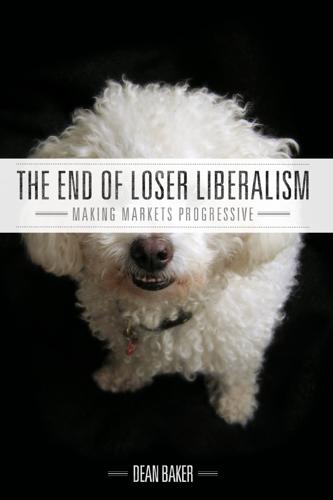
The End of Loser Liberalism: Making Markets Progressive
by
Dean Baker
Published 1 Jan 2011
Not only have we experienced extraordinary volatility in the stock and housing markets over the last 15 years, but we are also less secure because we are far less likely today to have defined-benefit pensions at our workplaces. In the 1960s and 1970s, roughly half of all private-sector workers had a defined-benefit pension; by 2011 the share was less than 20 percent and falling. The financial sector thrives on a huge amount of economic rent, which means it makes money through tax and regulatory arbitrage that provides no real benefit to society. For example, it became common in the 1980s and 1990s for government agencies like transit departments to sell off equipment, such as buses and subway cars, to private companies, and then lease it back. The logic of these deals is that the private company can take the depreciation on the equipment as a tax write-off, whereas as the state or local government agency cannot.
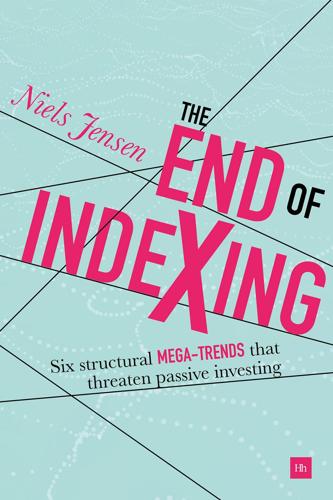
The End of Indexing: Six Structural Mega-Trends That Threaten Passive Investing
by
Niels Jensen
Published 25 Mar 2018
Illiquidity risk Going back to the six structural mega-trends reviewed in this book, one of them is particularly guilty of driving the illiquidity premium higher, and that is the end of the debt super-cycle. Massive regulatory pressure on banks to reduce their loan books has led to a sub-trend I call regulatory arbitrage. Banks in many countries, and particularly those in Europe, have had no choice but to offload risk. Consequently, a rising share of lending takes place away from commercial banks. Europe is still light years behind the US as far as this trend is concerned, but I expect the gap to narrow dramatically in the years to come.
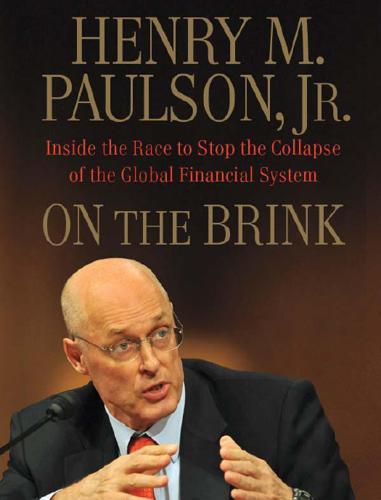
On the Brink: Inside the Race to Stop the Collapse of the Global Financial System
by
Henry M. Paulson
Published 15 Sep 2010
The recent crisis demonstrated that our financial markets had outgrown the ability of our current system to regulate them. Regulatory reforms alone would not have prevented all of the problems that emerged. However, a better framework that featured less duplication and that restricted the ability of financial firms to pick and choose their own, generally less-strict, regulators—a practice known as regulatory arbitrage—would have worked much better. And there is no doubt in my mind that the lack of a regulator to identify and manage systemic risks contributed greatly to the problems we faced. We need a system that can adapt as financial institutions, financial products, and markets continue to evolve. Before the crisis forced us to shift from making long-range recommendations to fighting fires, Treasury conducted a thorough analysis of the proper objectives of financial services regulation, and this exercise led us to sweeping proposals for fundamental reforms.
…
These recommendations were controversial when they were issued in March 2008, but in retrospect seem quite prophetic. Among other things, we proposed a system that created a government responsibility for systemic risk identification and oversight. We recommended strengthening and consolidating safety and soundness regulation to eliminate redundancy and counterproductive regulatory arbitrage. Acknowledging the proliferation of financial products—and the abuses that have accompanied them—we also proposed a separate and distinct business conduct regulator to protect consumers and investors. There is a well-recognized need for a global accord requiring banks to have higher levels of better-quality capital.

The Quiet Coup: Neoliberalism and the Looting of America
by
Mehrsa Baradaran
Published 7 May 2024
To effect these trades, Bankman-Fried found a work-around to existing market laws that required some legwork; he withdrew cash from his bank, wired the money to Asia, flew across the world, and made trades across various trading platforms because the trading market in crypto was so inefficient. This was simple regulatory arbitrage—the inefficiencies were caused by the proliferation of market regulations. Closing these kinds of efficiency gaps through arbitrage is the secret to many a billionaire’s wealth, including those of George Soros, Warren Buffett, and even Jeff Bezos. Wunderkind Bankman-Fried figured out how to make a 10 percent yield in one day of trading.
…
That skill is incredibly valuable indeed in a market that no longer works, but he is no more a genius than the clever Black kid who figures out how to make a profit selling drugs while evading the random enforcement of drug laws. In addition, while it may be argued that drugs are bad for people, the regulatory arbitrage FTX did—even before it was all revealed to be a fraud—was an end run around the law that was much more socially destructive. Effective altruism offers the winners of a rigged system a place to put their guilt—a mathematical equation in lieu of a much harder moral calculus—while allowing the public to avoid the harder questions of systemic justice.
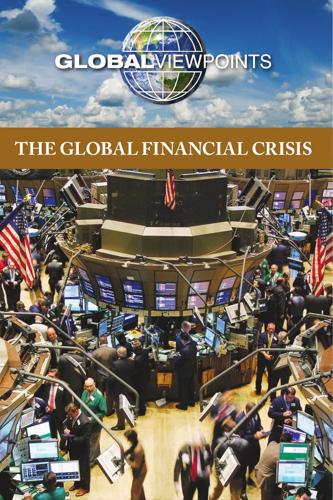
Global Financial Crisis
by
Noah Berlatsky
Published 19 Feb 2010
The other argument is that regulation (and 50 per cent tax rates) will undermine the City’s “competitiveness” and “drive away” banking and non-bank financial institutions. This argument has to be met head-on; the idea of a regulatory race to 48 Causes of the Global Financial Crisis the bottom does not square with political and economic reality. Co-operation rather than regulatory arbitrage between the main jurisdictions will always be best, but if that cooperation does not materialise, the UK should not chase business by offering low standards that create wider risks for the UK economy. The arguments about City “competitiveness” are bogus, self-serving and dangerous. It is profoundly to be hoped that Brown, Alistair Darling, Ed Balls and others who fell for them so haplessly in the past have now learned their lesson.
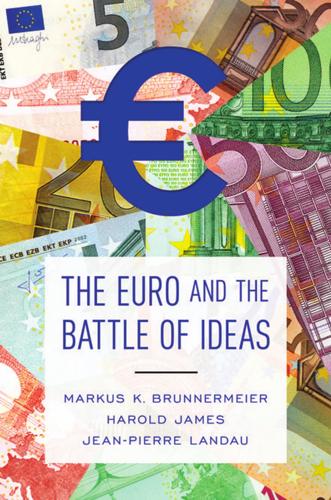
The Euro and the Battle of Ideas
by
Markus K. Brunnermeier
,
Harold James
and
Jean-Pierre Landau
Published 3 Aug 2016
Systemic risks typically build up below the surface in times of tranquility and then materialize during the crisis. Effective macroprudential regulation captures this buildup and acts against it. Nevertheless, macroprudential policy measures are no panacea: by their nature, they are very targeted and invite regulatory arbitrage. Macroprudential measures may thus turn out to be powerless or, worse yet, induce undesirable side effects. A case in point is the procyclicality of the precrisis Basel II regulations, which required a tightening of lending standards at times when economies would rather benefit from a marked expansion of lending.
…
Systemic risks typically build up below the surface in times of tranquility and then materialize during the crisis. Effective macroprudential regulation captures this buildup and acts against it. Nevertheless, macroprudential policy measures are no panacea: By their very nature, they are targeted and so invite regulatory arbitrage. Macroprudential measures may thus well turn out to be powerless or, worse yet, induce undesirable side effects. The Maastricht Treaty did not anticipate the quick-paced modernization and internationalization of banking, and it also underestimated the complexity of an unbalanced integration.

Swimming With Sharks: My Journey into the World of the Bankers
by
Joris Luyendijk
Published 14 Sep 2015
Using loopholes in the tax code to help big corporations and rich families evade taxes is ‘tax optimisation’ with ‘tax-efficient structures’. Financial lawyers and regulators who go along with whatever you propose are ‘business-friendly’, cases of proven fraud or abuse become ‘mis-selling’ and exploiting inconsistencies between two countries’ regulatory systems is ‘regulatory arbitrage’. Once you tune your ear in to it, examples abound, because the vocabulary available to people in finance to talk and think about their own actions is stripped of terms that could provoke an ethical discussion. Hence the biggest compliment in the City is ‘professional’. It means you do not let emotions get in the way of work, let alone moral beliefs – those are for home.
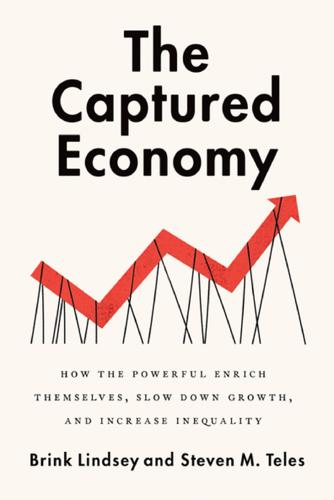
The Captured Economy: How the Powerful Enrich Themselves, Slow Down Growth, and Increase Inequality
by
Brink Lindsey
Published 12 Oct 2017
More quietly, all these policies continuously undermine economic growth by restricting vital inputs to innovation. The rents from financial subsidies divert large numbers of highly talented people from contributing to genuine innovation, luring them into highly remunerative but socially harmful regulatory arbitrage and speculation. Excessive copyright and patent protections restrict the recombination of ideas that is the essence of innovation by making some ideas artificially inaccessible. Occupational licensing hinders the formation of new businesses, which are frequently the vessels for new products or new production methods.
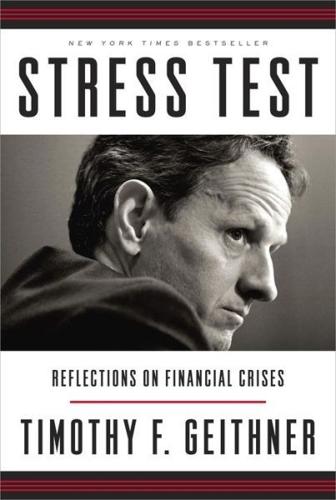
Stress Test: Reflections on Financial Crises
by
Timothy F. Geithner
Published 11 May 2014
The Fed also shared responsibility for the U.S. affiliates of foreign banks with state regulators, as well as home-country supervisors in London, Zurich, Frankfurt, and around the world. These divisions of labor evoked the parable of the blind men and the elephant, with nobody accountable for seeing the full picture of a corporation, much less the interconnections of the entire system. This glut of watchdogs with overlapping jurisdictions encouraged regulatory arbitrage. Banks often reorganized as thrifts to get the notoriously weak OTS as their supervisor, or shopped for another regulator they thought would give them favorable treatment. The OTS and OCC were both funded by fees they collected from their member banks, which gave them an incentive to try to woo banks into their orbit by offering lighter enforcement.
…
The Fed oversaw the holding companies that owned banks, while an individual bank might be regulated by the Fed, the Office of the Comptroller of the Currency, the Federal Deposit Insurance Corporation, the Office of Thrift Supervision, a state banking supervisor, or some awkward combination of those choices. This led to venue shopping and other forms of regulatory arbitrage, as well as blind-men-and-the-elephant problems where no regulator had a truly comprehensive view of an institution or the responsibility for monitoring it. Ideally, we would have liked to consolidate the OCC, FDIC, and OTS into a single national regulator for depository institutions, with a dominant ongoing role for the Fed.
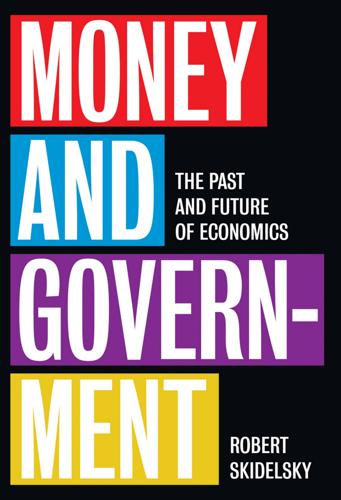
Money and Government: The Past and Future of Economics
by
Robert Skidelsky
Published 13 Nov 2018
Its faults were licensed. Reform of banking that does not include regulating what banks are allowed to do will miss the point. As Professor James Galbraith tells it: These are institutions with high fixed costs, with technologies and transnational legal structures that are designed to facilitate tax evasion and regulatory arbitrage, and which face very limited prospects for sustained profitability in activities that correspond to social need. Their entire structure isn’t viable in a world of slow growth, except by fostering short-lived booms followed by busts and bailouts. In short, the financial sector as a whole is a luxury we cannot afford.12 One could add that a corrupted capitalism is also a political luxury too far, because it is certain to provoke a popular backlash.
…
However, neither reform gets to the root of the ‘excess credit’ problem, which, we have suggested, is the stagnation of real earnings. This results in the substitution of speculative for productive investment and easy consumer credit for vanishing welfare entitlements. The globalization of finance amplifies both tendencies, since it gives banks almost unlimited opportunities for regulatory arbitrage. An aspect of financialization little discussed in polite circles is the extent of its criminality. A sizeable fraction of the money sloshing around the world originates in criminal activity – often Russian and Middle Eastern – which is then ‘laundered’ through Special Purpose Vehicles set up in offshore tax havens under fake owners.

Frequently Asked Questions in Quantitative Finance
by
Paul Wilmott
Published 3 Jan 2007
Sub-additivity is an obvious requirement for a risk measure, otherwise there would be no risk benefit to adding uncorrelated new trades into a book. If you have two portfolios X and Y then this benefit can be defined as Sub-additivity says that this can only be non negative. Lack of sub-additivity is a risk measure and can be exploited in a form of regulatory arbitrage. All a bank has to do is create subsidiary firms, in a reverse form of the above example, to save regulatory capital. With a coherent measure of risk, specifically because of its sub-additivity, one can simply add together risks of individual portfolios to get a conservative estimate of the total risk.
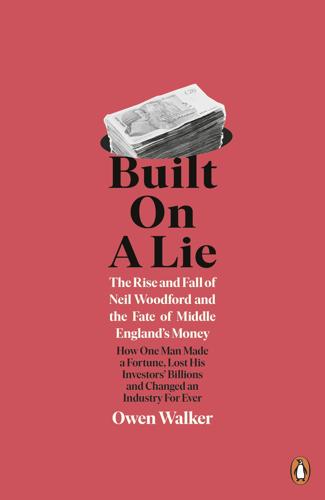
Built on a Lie: The Rise and Fall of Neil Woodford and the Fate of Middle England’s Money
by
Owen Walker
Published 4 Mar 2021
Why had it taken so long for the FCA and the Guernsey stock exchange to discuss the listings – and why was the FCA so slow to respond, even after details of the arrangement were reported in the press. ‘Does anyone in the FCA actually read the newspapers and listen to what is going on in the industry?’ berated Morgan. Bailey brushed aside the sarcasm, but made it clear what he thought of the ‘regulatory arbitrage’ Woodford had engaged in when listing the companies offshore, adding that the fund manager had been ‘sailing close to the wind’ on the quantity of unquoted illiquid assets held in the fund. Morgan, the trained lawyer, again went on the offensive. ‘Should the regulator not have a requirement to ask questions and to watch out for public coverage, press coverage and words in the industry about concerns that are being raised about investments or where consumers are not getting the protection that they think they are entitled to?’

The Wealth of Networks: How Social Production Transforms Markets and Freedom
by
Yochai Benkler
Published 14 May 2006
I seek a higherlevel abstraction whose role is not to serve as a tool to constrain specific rules, but as a map for understanding the relationships between diverse institutional elements as they relate to the basic problem of how information is produced and exchanged in society. 158. The first major treatment of this phenomenon was Michael Froomkin, "The Internet as a Source of Regulatory Arbitrage" (1996), ‹http://www.law.miami.edu/froomkin/articles/arbitr.htm›. 159. Jonathan Krim, "AOL Blocks Spammers' Web Sites," Washington Post, March 20, 2004, p. A01; also available at ‹http://www.washingtonpost.com/ac2/wp-dyn?page› name article&contentId A9449-2004Mar19¬Found true. 160. FCC Report on High Speed Services, December 2003 (Appendix to Fourth 706 Report NOI). 161. 216 F.3d 871 (9th Cir. 2000). 162.
…
I seek a higherlevel abstraction whose role is not to serve as a tool to constrain specific rules, but as a map for understanding the relationships between diverse institutional elements as they relate to the basic problem of how information is produced and exchanged in society. 158. The first major treatment of this phenomenon was Michael Froomkin, "The Internet as a Source of Regulatory Arbitrage" (1996), ‹http://www.law.miami.edu/froomkin/articles/arbitr.htm›. 159. Jonathan Krim, "AOL Blocks Spammers' Web Sites," Washington Post, March 20, 2004, p. A01; also available at ‹http://www.washingtonpost.com/ac2/wp-dyn?page› name article&contentId A9449-2004Mar19¬Found true. 160. FCC Report on High Speed Services, December 2003 (Appendix to Fourth 706 Report NOI). 161. 216 F.3d 871 (9th Cir. 2000). 162.

The Sharing Economy: The End of Employment and the Rise of Crowd-Based Capitalism
by
Arun Sundararajan
Published 12 May 2016
The complexity of this ongoing transition—part of a broader set of changes that Professor Klaus Schwab, the founder of the World Economic Forum calls the “fourth industrial revolution,” may explain society’s struggle to come up with a shared label for the phenomenon I call crowd-based capitalism.2 Perhaps, like most interesting things in life, the sharing economy is shaped by its internal contradictions. Capitalist or socialist? Commercial economy or gift economy? Market or hierarchy? Global or local economic impact? Regulatory arbitrage or self-regulatory expression? Centralized or decentralized value capture? Empowered entrepreneur or disenfranchised drone? Job destruction or work creation? Isolated or connected societies? As you may have realized by now, the answer to each of these questions in the sharing economy is “yes.”

Easy Money: Cryptocurrency, Casino Capitalism, and the Golden Age of Fraud
by
Ben McKenzie
and
Jacob Silverman
Published 17 Jul 2023
Maybe they’ll make some donations to support your campaign or promise to do more business in your state. As Otto von Bismarck said: “If you like laws and sausages, you should never watch either one being made.” Personally, I think that’s unfair to the sausage industry. Economists look at incentives, and the competition between the SEC and CFTC likely created perverse ones. Regulatory arbitrage—taking advantage of gaps in regulation in different jurisdictions—had proved essential to the spread of the crypto virus. That’s why so many crypto exchanges were based in overseas island nations known for having practically as many shell corporations as people. Even if the divide between the SEC and CFTC were papered over, there was still a gap in their collective remit: Neither was principally a criminal enforcement agency.
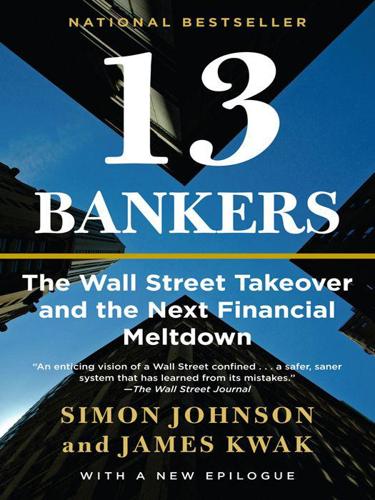
13 Bankers: The Wall Street Takeover and the Next Financial Meltdown
by
Simon Johnson
and
James Kwak
Published 29 Mar 2010
Whatever the final form of the legislation, the problem of too big to fail will probably remain with us. But this does not mean that it cannot be solved. It only means that it may take several years, and several sessions of Congress, to solve. The solution must be economically simple, so it can be effectively enforced; the more complex the scheme, the more susceptible it is to regulatory arbitrage, such as reshuffling where assets are parked within a financial institution’s holding company structure. And the solution must change the balance of political power, so it will last. The simplest solution is a hard cap on size: no financial institution would be allowed to control or have an ownership interest in assets worth more than a fixed percentage of U.S.
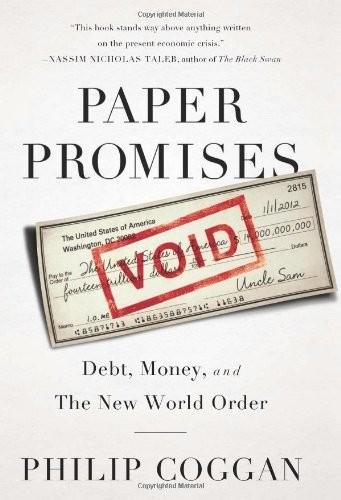
Paper Promises
by
Philip Coggan
Published 1 Dec 2011
The finance industry was also a huge taxpayer, once one allowed for income taxes on bonus payments, capital-gains tax on share-price gains, stamp duty on property and share deals and all the rest. In Britain, even the Blair/Brown Labour governments pursued a light-touch regulatory regime for fear of driving the big banks away to foreign countries. They trumpeted the fact that London appeared to be catching, or even overtaking, New York as a global financial centre. The prospect of regulatory arbitrage – companies migrating to countries where they would be treated more leniently – may also explain why regulators were unwilling to crack down on the banks and why post-crisis reform programmes have been so mild. In the US, the 1929 crash was followed by the passing of the Glass – Steagall Act, which separated commercial (deposit-taking) banking from investment banking.
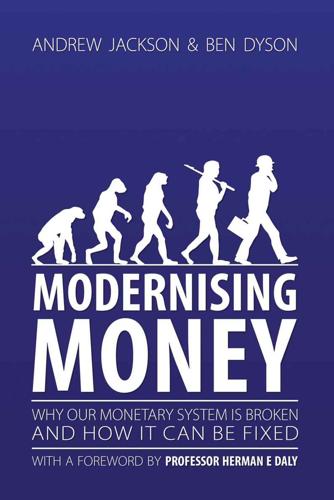
Modernising Money: Why Our Monetary System Is Broken and How It Can Be Fixed
by
Andrew Jackson (economist)
and
Ben Dyson (economist)
Published 15 Nov 2012
Collateralised loans can be made to those who cannot afford them (for example, sub-prime/NINJA mortgages), safe in the knowledge that even if the borrower defaults, the assets (houses) can be repossessed and sold for a profit. Secondly, the increased demand for lending increases profits as long as banks are able to meet the increased demand for loans. This puts pressure on banks to innovate in order to increase their lending as much as possible (e.g. through ‘regulatory arbitrage’).7 The ability to profit from speculating on asset prices leads to the emergence of the ‘ponzi unit’ (which borrows to invest in rising asset prices). Because the cash flows generated by the assets are not enough to cover either the interest or principle repayments on the loan, the loan can only be repaid if the assets can be sold for more than what is owed.
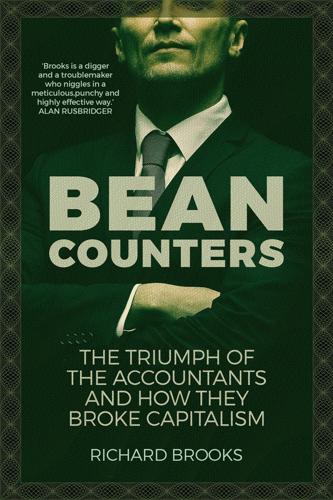
Bean Counters: The Triumph of the Accountants and How They Broke Capitalism
by
Richard Brooks
Published 23 Apr 2018
la=en Matthews, D., and Pirie, J., Auditors Talk: An Oral History of the Profession from the 1920s to the Present Day (Taylor & Francis, UK, 2001) Napier, C. J., ‘Intersections of Law and Accountancy: Unlimited Auditor Liability in the United Kingdom’ (Accounting, Organisations and Society, UK, Vol. 23, No. 1, pp.105–28, 1998) Shah, A., Systemic Regulatory Arbitrage: A Case Study of KPMG (Suffolk Business School, UK, 2015) Sikka, Professor P., and Mitchell, A., The Pinstripe Mafia: How Accountancy Firms Destroy Societies (Association of Accountancy & Business Affairs, UK, 2011) Wootton, C. W., and Wolk, C. M., ‘The Development of “The Big Eight” Accounting Firms in the United States, 1900 to 1990’ (Accounting Historians Journal, US, June 1992) Zeff, Professor Stephen, ‘How the US Accounting Profession Got Where It Is Today’, Parts I and II (Accounting Horizons, US, Vol. 17, No. 3, September 2003, and No. 4, December 2003) Zucman, Gabriel, ‘Taxing Across Borders: Tracking Personal Wealth and Corporate Profits’ (Journal of Economic Perspectives, US, Vol. 28, No. 4, Fall 2014), http://gabriel-zucman.eu/files/Zucman2014JEP.pdf NEWSPAPER REPORTS Agnew, Harriet, ‘Professional Services: Accounting for Change’, Financial Times, 28 August 2015 Alexander, Delroy; Burns, Greg; Manor, Robert; McRoberts, Flynn; and Torriero, E.A., ‘Ties to Enron Blinded Andersen’, Chicago Tribune, 3 September 2002 Bajaj, Vikas, and Creswell, Julie, ‘A Lender Failed.

What's Next?: Unconventional Wisdom on the Future of the World Economy
by
David Hale
and
Lyric Hughes Hale
Published 23 May 2011
The Australian banking system was also, for the most part, more effectively supervised and regulated from the standpoint of avoiding the risks that precipitated the North Atlantic financial crisis. In the late 1990s Australia’s system of prudential supervision and regulation of financial institutions was reconfigured along the lines of the Canadian system. The new system established a single regulator for all approved deposit-taking intermediaries, thus limiting the scope for “regulatory arbitrage” that the US system of multiple regulators provides. In 2001 the collapse of HIH Insurance, the largest Australian insurance company, prompted the Australian Prudential Regulation Authority (APRA) to take a more skeptical and assertive approach to its task. Following the HIH collapse, the APRA could in no sense be described as “light-handed” after the fashion of the UK Financial Services Authority.
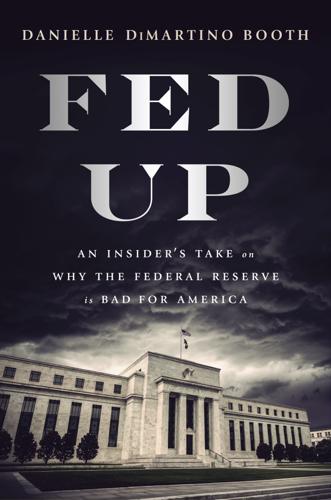
Fed Up: An Insider's Take on Why the Federal Reserve Is Bad for America
by
Danielle Dimartino Booth
Published 14 Feb 2017
To maximize returns, banks often retained most of the “super-senior” investments they created in SIVs. The super-senior tranches were perceived to be so risk free that banks regarded them as “money good.” This “safety,” Pozsar said, allowed banks “to reduce the capital associated with the super-senior investments and supercharge their returns on book equity.” This was classic regulatory arbitrage. Bank managers were not unaware of the risks they courted. Wall Street has simply never kowtowed to regulations that pull the plug on profitable businesses. They always find their way around them. SIVs typically borrowed fifteen dollars for every one dollar in assets. But conduits were 100 percent debt financed, Pozsar said, “essentially being levered to infinity.”
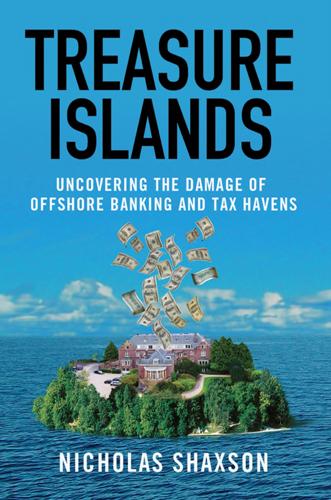
Treasure Islands: Uncovering the Damage of Offshore Banking and Tax Havens
by
Nicholas Shaxson
Published 11 Apr 2011
Professional associations of lawyers, accountants, and bankers could create codes of conduct stressing, among other things, that it is unacceptable for a member to help a client commit a financial crime, whether the crime occurs at home or overseas. The economics profession needs to reappraise its approach to understand the effects of things such as secrecy and regulatory arbitrage. It could start to measure illicit, secret things, difficult though that may be. We can recapture our culture from the forces of unaccountable privilege that have taken it away from us. At the time of writing, heavy government spending around the world has staved off outright economic collapse following the meltdown in global finance, but at huge costs to taxpayers.
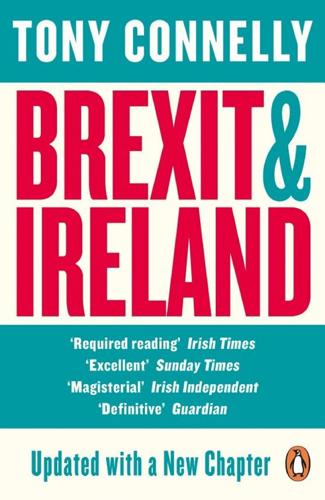
Brexit and Ireland: The Dangers, the Opportunities, and the Inside Story of the Irish Response
by
Tony Connelly
Published 4 Oct 2017
At an event in Dublin on 8 June, the Department of Finance’s international finance division head Paul Ryan accused rival cities of spreading ‘black propaganda’ about housing and infrastructure shortages in Ireland. Eoghan Murphy was quoted by the Financial Times as having lodged a complaint to the European Commission that Luxembourg had engaged in ‘regulatory arbitrage’ by offering inducements to AIG in order to lure it to the Grand Duchy. (The head of the Luxembourg Agency reportedly shot back that he ‘didn’t expect the Irish to be sore losers’.) Murphy insists it was not a formal complaint, but that he was hearing so many tales of regulatory inducement that he feared a systemic risk to the single market.

New Laws of Robotics: Defending Human Expertise in the Age of AI
by
Frank Pasquale
Published 14 May 2020
That contrasts with the attitude of many regulators (ranging from licensing boards to consumer protection agencies), to whom apps are mere games, diversions, information services, “general health” and wellness aids—anything to avoid traditional duties and responsibilities of therapists.97 While such regulatory arbitrage may work as a short-term legal strategy for particular firms, it corrodes the trust necessary for the industry as a whole to thrive. Patients also risk acting on substandard advice. For example, when researchers in Australia studied eighty-two mobile apps marketed to those suffering from bipolar disorder, they found that the apps were, in general, “not in line with practice guidelines or established self-management principles.”98 Doctors Adam Cifu and Vinayak Prasad began a relatively recent book with a shocking finding: “Despite tremendous advances in the clinical, genomic, and surgical sciences, doctors continue to use medical practices, sometimes for decades, that are later shown to be of no benefit to their patients.”99 Prasad has summarized the problem in a statistic: “46% of what we [doctors] do is wrong.”
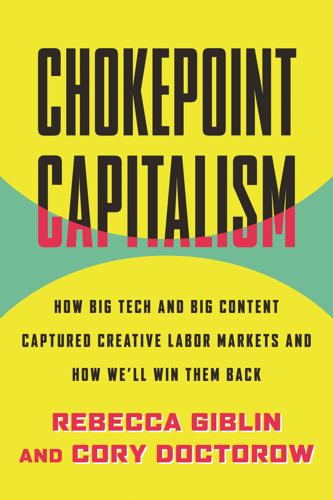
Chokepoint Capitalism
by
Rebecca Giblin
and
Cory Doctorow
Published 26 Sep 2022
The tools we’ve identified for slowing down anticompetitive flywheels—like transparency rights, minimum wages for creative work, reversion rights, reform of DRM law and creator contracts, collective action, and collective ownership—can all help elsewhere too. But the wider world has a key role to play in shattering chokepoints beyond this. Today’s oligarchs have a great tradition of regulatory arbitrage (obtaining a law that favors them in one jurisdiction, and then using it to ratchet up the protection they get elsewhere). Take copyright term extension, for example, which we’ve shown disproportionately benefits not the creators who made the works, but the corporate owners who extract their rights.

The Black Box Society: The Secret Algorithms That Control Money and Information
by
Frank Pasquale
Published 17 Nov 2014
People were misunderstanding Trending Topics.112 But at what point does a platform have to start taking responsibility for what its algorithms do, and how their results are used? These new technologies affect not only how we are understood, but also how we understand. Shouldn’t we know when they’re working for us, against us, or for unseen interests with undisclosed motives? Dizzying shifts in the ways Internet platforms characterize themselves amount to a form of regulatory arbitrage, evading the spirit of classic legal obligations.113 When faced with copyright and defamation lawsuits, they claim not to be media companies (that is, producers of content), but only conduits (that is, pipelines for content).114 A conduit does not enjoy the most robust First Amendment protection, but it gains freedom from liability in cases of defamation.115 (For example, the phone company can’t refuse to serve me on First Amendment grounds, but it also can’t be sued by someone I defame using the phone.)
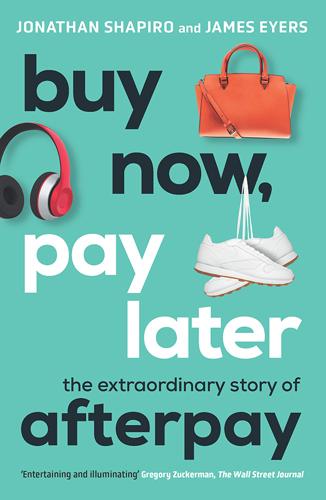
Buy Now, Pay Later: The Extraordinary Story of Afterpay
by
Jonathan Shapiro
and
James Eyers
Published 2 Aug 2021
Kassabgi quickly realised public policy mattered a lot to this young company, which was being battered around on the market by investors that might not understand the strange machinations in Canberra. Uber had grown from a start-up to a $120 billion company in just five years, not by playing by the rules but by breaking them—and by forcing lawmakers to change them. Kassabgi brought that regulatory arbitrage mentality to Afterpay, which needed to remain out of reach of the credit act. As part of his employee share plan, Kassabgi was granted 300,000 share options at an exercise price of $10.40. Options are contracts that allow the holder to buy shares at a specified price. If the share price rises above the exercise price, the holder stands to make a windfall gain.
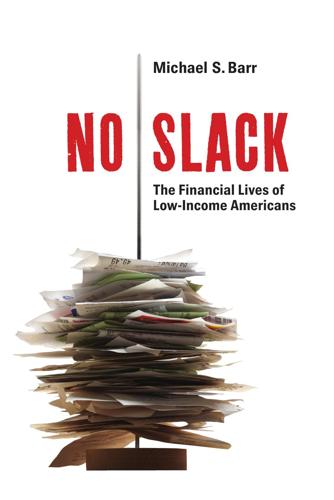
No Slack: The Financial Lives of Low-Income Americans
by
Michael S. Barr
Published 20 Mar 2012
For example, payday borrowers often underestimate the need to roll over their payday loan at the time it is due, and credit-card holders often underestimate the extent to which they will carry balances from month to month or pay late or over-limit fees. 12864-06_CH06_3rdPgs.indd 151 3/23/12 11:56 AM 152 michael s. barr, jane k. dokko, and benjamin j. keys Moreover, short-term credit products are regulated in a piecemeal fashion that creates confusion and the potential for regulatory arbitrage. Because the regulatory structure imposes nonuniform borrowing standards, households face difficulty in ascertaining the costs associated with different loan products. Furthermore, because the different AFS markets are not connected, lenders cannot adequately, or at low cost, establish a household’s ability to repay the loan or their overall indebtedness.
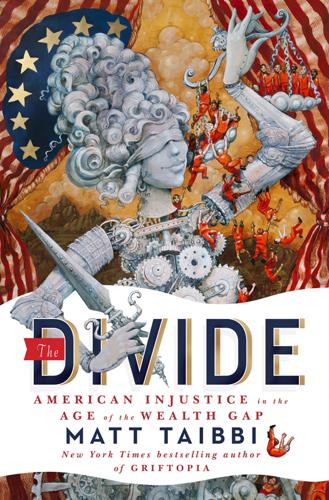
The Divide: American Injustice in the Age of the Wealth Gap
by
Matt Taibbi
Published 8 Apr 2014
Where once you had a Boeing or a Hershey’s keep its factories and headquarters snuggled decade after decade in the same state or company town, you now had huge multinational firms peppering China and India with factories, and banking havens like Antigua and Jersey with corporate offices, as they raced around the earth in search of tax, labor, and other advantages. The whole world with its myriad sets of laws and rules presented endless opportunities for regulatory arbitrage. It would be harder for the cop on the beat to chase an offender that simultaneously existed everywhere and nowhere. Moreover, even within the United States there had been intentional, lobbied-for changes in corporate structure: the repeal of the Glass-Steagall Act, which had prevented the mergers of commercial banks, investment banks, and insurance companies (this repeal led to the creation of megafirms like Citigroup), and Supreme Court decisions rolling back bans on interstate banking (which led to a string of mergers, resulting in the formation of giant national banks like Wachovia and Bank of America).

The Contrarian: Peter Thiel and Silicon Valley's Pursuit of Power
by
Max Chafkin
Published 14 Sep 2021
That was a more or less unprecedented rate of growth, even in Silicon Valley, but it meant that PayPal had spent something like $20 million on referral fees out of the $28 million raised so far. Early employees tell stories of walking in and seeing that thousands of users had signed up overnight—and feeling a sense of awe and terror. PayPal accelerated its growth through an even more extreme form of regulatory arbitrage than the one X was pursuing. X, at least, was registered as a bank; PayPal hadn’t bothered. The company made little obvious effort to collect information from consumers or to stop them from using the money for illicit purposes, and, at least in the eyes of some employees, was blatantly flaunting the rules of the banking industry.

Open: The Story of Human Progress
by
Johan Norberg
Published 14 Sep 2020
This system of ‘too big to fail’ corresponds to an ongoing, implicit subsidy of almost 100 million dollars every day to the top eighteen US banks.32 This has created an oversized banking system that increases risk, and many brilliant graduates who could have been innovative in other sectors go there to design new exotic securities that are little more than regulatory arbitrage. The EU spends 41 per cent of its total budget on subsidies for farmers, major energy producers rely on government favours and handouts, and residents legislate to block new construction so as to keep the great unwashed out and property prices up. Six of the top ten richest counties in the US are in Washington, DC, which suggests that lobbying politicians for favours is a growth industry.
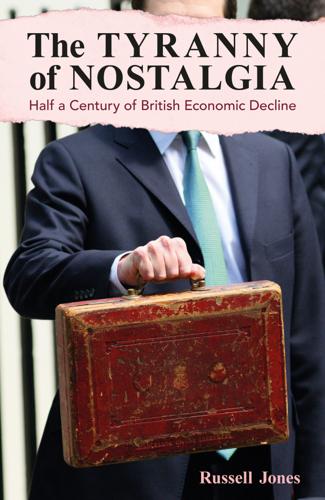
The Tyranny of Nostalgia: Half a Century of British Economic Decline
by
Russell Jones
Published 15 Jan 2023
On the other hand, though, the ability of the authorities to prevent exaggerated business cycles waned and higher inflation became embedded. At the same time, the financial sector became more adept at circumventing the controls, and the authorities therefore faced a continual battle to minimize regulatory arbitrage and leakages into the non-bank financial sector. The system of controls became more complex, while the associated costs increasingly outweighed the benefits. As a consequence, the early iterations of macroprudential policy morphed into outright financial repression and the creation of captive markets that governments could exploit.
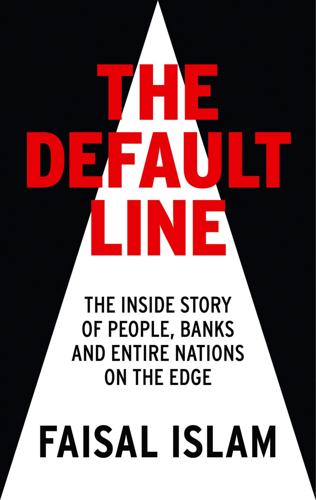
The Default Line: The Inside Story of People, Banks and Entire Nations on the Edge
by
Faisal Islam
Published 28 Aug 2013
According to Dunbar, the FSA boasted that ‘international firms that have established their operations here welcome the flexibility of the UK regulatory regime’. New York regulators began to fret about London’s light touch, so the Wall Street firms extracted from the SEC ‘broker dealer lite’ rules that meant the rubberstamping of internal risk models. Regulatory arbitrage meant one thing: massive transfers of credit risk from a bank’s loan book to its trading book. Still, at least models of copula base correlation made some sense in relation to the corporate debts. The slicing and repackaging of these debts passed risks from one side of a bank’s balance sheet where they used up part of the bank’s precious capital to another part where it did not.

More: The 10,000-Year Rise of the World Economy
by
Philip Coggan
Published 6 Feb 2020
Over the course of the late 19th century and the 20th century, workers demanded, and were granted, more rights: paid holiday, sick leave, maternity leave, pensions and healthcare. These tended to be associated with full-time employment, rather than part-time or casual work. From the employer’s point of view, they add significantly to the cost of hiring workers. The fear is that the gig economy represents a form of “regulatory arbitrage” in which companies replace full-time employees with casual or contract labour at less cost, and with fewer rights. These lines can be difficult to draw. If a worker performs a service almost exclusively for a single company, and the company imposes sufficient conditions on the way in which the job is performed, then it may be proved that the worker is an employee, not a contractor.43 Furthermore, such an employee may be entirely at the mercy of the platform provider.
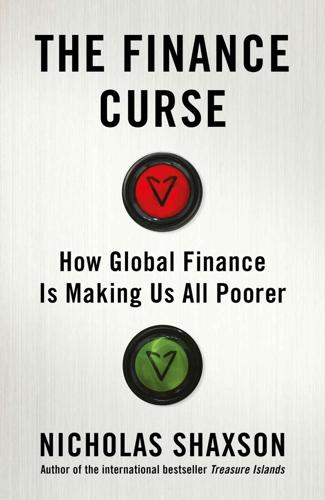
The Finance Curse: How Global Finance Is Making Us All Poorer
by
Nicholas Shaxson
Published 10 Oct 2018
For more in-depth treatment of the accounting profession, see John Dunn and Prem Sikka, ‘Auditors: Keeping the Public in the Dark’, Association for Accountancy and Business Affairs, 1999; and the more recent ‘Tax avoidance: the role of large accountancy firms’, 44th Report of Session 2012–13, House of Commons, Committee of Public Accounts, 26 April 2013. See also numerous reports by Richard Brooks for Private Eye, as well as his book The Great Tax Robbery. I also interviewed Brooks on several occasions. See also ‘Calling Time: Why SABMiller Should Stop Dodging Taxes in Africa’, Actionaid, April 2012 update; and Atul K. Shah, ‘Systemic Regulatory Arbitrage, a case study of KPMG’, Suffolk Business School, 2015. I have also discussed these issues with Shah on several occasions from 2015 to 2017. See also sourceglobalresearch.com: ‘Big Four Firms’, with regular blogs and updates. 39. See Kara Scannell, ‘Big Four auditors face crackdown on global operations’, Financial Times, 15 December 2016; Harriet Agnew, ‘EY fined over Hellas conflict of interest’, Financial Times, 16 June 2015; Harriet Agnew, ‘Professional Services: Accounting for Change’, Financial Times, 27 August 2015; and Harriet Agnew, ‘Big Four auditors extend reach into consultancy’, Financial Times, 8 March 2015. 11 The Evidence Machine 1.
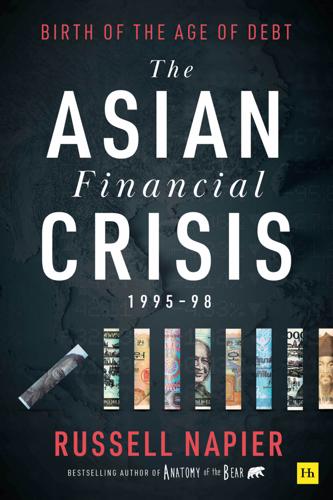
The Asian Financial Crisis 1995–98: Birth of the Age of Debt
by
Russell Napier
Published 19 Jul 2021
For the first time in 20 years the wheel is spinning with a view to perhaps resetting the balance between governments and markets. Analysing politicians is much more difficult than analysing markets. However, we are all going to have to try. It’s all there in black and pink. In September 1998, it was already obvious that regulatory arbitrage was rife in the global banking system, and that the securitisation underway was acting to permit greater leverage and also weaken bank balance sheets. Mr Mingo and Mr Jones had told everyone in 1998 what the consequences would be if nothing was done and nothing was done. The securitisation business continued to grow and the bank balance sheets continued to weaken.
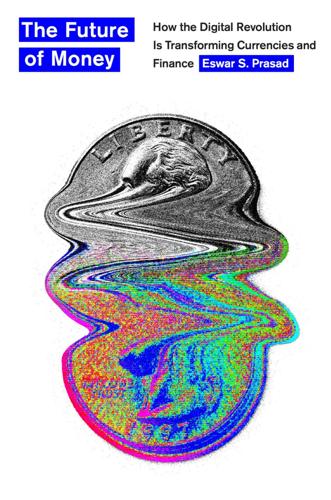
The Future of Money: How the Digital Revolution Is Transforming Currencies and Finance
by
Eswar S. Prasad
Published 27 Sep 2021
Whether this should provide reassurance or not is an unresolved question—one might recall that a similar approach to US banking regulation, with multiple regulators having responsibility for different types of banks, created blind spots in the lead-up to the financial crisis. While they benefit from the halo that government oversight confers upon them, financial institutions try to structure themselves and their products so they fall under the purview of the weakest regulatory agency—an approach some delicately refer to as regulatory arbitrage. The same is true of purveyors of cryptocurrencies and related products. State banking regulators oversee certain US and foreign virtual currency spot exchanges largely through state money transfer laws. The Internal Revenue Service (IRS) treats virtual currencies as property, which means that cryptocurrency holdings have to be reported on income tax filings and are subject to capital gains taxes.

The Making of Global Capitalism
by
Leo Panitch
and
Sam Gindin
Published 8 Oct 2012
The move abroad by US finance was in fact part and parcel of a long process whereby Wall Street would gradually bring the Eurodollar market home, as “the very same practices, strategies and techniques that drove the international expansion of American finance also laid the foundation for its continued domestic expansion.”24 And what this clearly portended was the process of international regulatory arbitrage which would soon become so central to the making of global capitalism, in which less onerous regulations in one financial center (in this case London’s Eurodollar market) would be exploited to undermine stronger regulations in another (in this case the US’s own New Deal banking regulations).
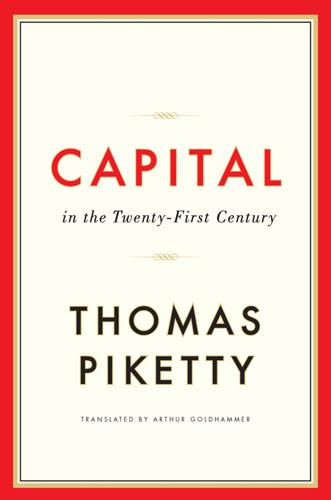
Capital in the Twenty-First Century
by
Thomas Piketty
Published 10 Mar 2014
Indeed, balance sheets structured in this way subject small countries, especially in Europe, to an important vulnerability, in that small “errors” in the valuation of financial assets and liabilities can lead to enormous variations in the net foreign asset position.30 Furthermore, the evolution of a country’s net foreign asset position is determined not only by the accumulation of trade surpluses or deficits but also by very large variations in the return on the country’s financial assets and liabilities.31 I should also point out that these international positions are in substantial part the result of fictitious financial flows associated not with the needs of the real economy but rather with tax optimization strategies and regulatory arbitrage (using screen corporations set up in countries where the tax structure and/or regulatory environment is particularly attractive).32 I come back to these questions in Part Three, where I will examine the importance of tax havens in the global dynamics of wealth distribution. What Will the Capital/Income Ratio Be in the Twenty-First Century?